- Affärsnyheter
- Alternativ hälsa
- Amerikansk fotboll
- Andlighet
- Animering och manga
- Astronomi
- Barn och familj
- Baseball
- Basket
- Berättelser för barn
- Böcker
- Brottning
- Buddhism
- Dagliga nyheter
- Dans och teater
- Design
- Djur
- Dokumentär
- Drama
- Efterprogram
- Entreprenörskap
- Fantasysporter
- Filmhistoria
- Filmintervjuer
- Filmrecensioner
- Filosofi
- Flyg
- Föräldraskap
- Fordon
- Fotboll
- Fritid
- Fysik
- Geovetenskap
- Golf
- Hälsa och motion
- Hantverk
- Hinduism
- Historia
- Hobbies
- Hockey
- Hus och trädgård
- Ideell
- Improvisering
- Investering
- Islam
- Judendom
- Karriär
- Kemi
- Komedi
- Komedifiktion
- Komediintervjuer
- Konst
- Kristendom
- Kurser
- Ledarskap
- Life Science
- Löpning
- Marknadsföring
- Mat
- Matematik
- Medicin
- Mental hälsa
- Mode och skönhet
- Motion
- Musik
- Musikhistoria
- Musikintervjuer
- Musikkommentarer
- Näringslära
- Näringsliv
- Natur
- Naturvetenskap
- Nyheter
- Nyhetskommentarer
- Personliga dagböcker
- Platser och resor
- Poddar
- Politik
- Relationer
- Religion
- Religion och spiritualitet
- Rugby
- Så gör man
- Sällskapsspel
- Samhälle och kultur
- Samhällsvetenskap
- Science fiction
- Sexualitet
- Simning
- Självhjälp
- Skönlitteratur
- Spel
- Sport
- Sportnyheter
- Språkkurs
- Stat och kommun
- Ståupp
- Tekniknyheter
- Teknologi
- Tennis
- TV och film
- TV-recensioner
- Underhållningsnyheter
- Utbildning
- Utbildning för barn
- Verkliga brott
- Vetenskap
- Vildmarken
- Visuell konst

SDG
A podcast about the UN Sustainable Development Goals, 17 goals adopted by the United Nations General Assembly on 25 September 2015.
77 avsnitt • Längd: 0 min • Månadsvis
Om podden
A podcast about the UN Sustainable Development Goals, 17 goals adopted by the United Nations General Assembly on 25 September 2015.
The podcast SDG is created by Dom Billings. The podcast and the artwork on this page are embedded on this page using the public podcast feed (RSS).
Avsnitt
SDG Target #17.19
SDG #17 is to “Strengthen the means of implementation and revitalize the Global Partnership for Sustainable Development”
Within SDG #17 are 19 targets, of which we here focus on Target 17.19:
By 2030, build on existing initiatives to develop measurements of progress on sustainable development that complement gross domestic product, and support statistical capacity-building in developing countries
Target 17.19 has two indicators:
Indicator 17.19.1: Dollar value of all resources made available to strengthen statistical capacity in developing countries
Indicator 17.19.2: Proportion of countries that (a) have conducted at least one population and housing census in the last 10 years; and (b) have achieved 100 per cent birth registration and 80 per cent death registration
This target highlights the work of PARIS21. This organisation works to help developing countries increase their statistical capacity.
The developing countries which had the most dollars available for statistical capacity were in Africa. Vietnam, Serbia, and Nepal also each spent over $10 million to this end in 2020. Global spending on increasing statistical capacity in 2020 was $541 million.
As of 2017, only a dozen countries hadn’t completed a census in the past decade. The country with the smallest proportion of registered births was in the Horn of Africa. In Ethiopia and Somalia, the rate was less than 6%. The global rate of birth registrations was 72% of births as of 2018. Several African countries and Afghanistan registered deaths at a rate lower than 10%.





SDG Target #8a
SDG #8 is to “Promote sustained, inclusive and sustainable economic growth, full and productive employment and decent work for all.”
Within SDG #8 are 12 targets, of which we here focus on Target 8.a:
Increase Aid for Trade support for developing countries, in particular least developed countries, including through the Enhanced Integrated Framework for Trade-related Technical Assistance to Least Developed Countries
Target 8.a has one indicator:
Indicator 8.a.1: Aid for Trade commitments and disbursements
Aid for Trade is an initiative of the World Trade Organization for high-income donor countries to help developing countries to trade to further their economic development.
An example of aid which might help towards this end is infrastructure, such as transport networks and utilities, which all enable economic activity.
For the high-income OECD countries which give development assistance, in reporting what they’ve given, we can also separate what they’ve given as intended for Aid for Trade. Based on this, the developing regions as a whole received $52.5 billion as Aid for Trade in 2021. This figure has gone up and down in the years since the adoption of the Goals in 2015, when it was $62 billion. For the least developed countries, 2021 Aid for Trade commitments were $18.8 billion. This has also varied year-on-year since 2015, when it was $19.8 billion. On sum, this trend has been missing Target 8.a’s aim to increase Aid for Trade support.
On the donor side, the largest 2021 commitments earmarked for Air for Trade came from Germany, giving $7.3 billion, and Japan, with $6.8 billion.


SDG Target #8.10
SDG #8 is to “Promote sustained, inclusive and sustainable economic growth, full and productive employment and decent work for all.”
Within SDG #8 are 12 targets, of which we here focus on Target 8.10:
Strengthen the capacity of domestic financial institutions to encourage and expand access to banking, insurance and financial services for all
Target 8.10 has two indicators:
Indicator 8.10.1: (a) Number of commercial bank branches per 100,000 adults and (b) Number of automated teller machines (ATMs) per 100,000 adults
Indicator 8.10.2: Proportion of adults (15 years and older) with an account at a bank or other financial institution or with a mobile-money-service provider
One aspect of social inclusion is financial inclusion. This has become much more accessible with the proliferation of digital payment platforms to give access.
Worldwide, the number of commercial bank branches per 100,000 adults was 11.2 as of 2021, about the same as 2015. For the same year, there were 39 ATMs per 100,000 people worldwide, a small increase from 36 in 2015.
The proportion of adults with a bank account or similar in 2021 was 76%, an increase since the Goals adoption of 62%.



SDG Target #8.9
SDG #8 is to “Promote sustained, inclusive and sustainable economic growth, full and productive employment and decent work for all.”
Within SDG #8 are 12 targets, of which we here focus on Target 8.9:
By 2030, devise and implement policies to promote sustainable tourism that creates jobs and promotes local culture and products
Target 8.9 has one indicator:
Indicator 8.9.1: Tourism direct GDP as a proportion of total GDP and in growth rate
This target introduces us to the work of another of the UN agencies, UN Tourism.
Tourism direct GDP, as measured in this Target’s sole indicator is the value-added by all industries contributing to tourism.
The global share of tourism direct GDP as a proportion of gross world product is 2.54% as of 2021. This is lower than at the adoption of the SDGs in 2015, when it was 3.75%.
The world leaders among countries with data in the SDG period are Fiji with 12% in 2019. For those with more recent data up to 2021, the leaders were Greece and UAE with 6%.



SDG Target #8.8
SDG #8 is to “Promote sustained, inclusive and sustainable economic growth, full and productive employment and decent work for all.”
Within SDG #8 are 12 targets, of which we here focus on Target 8.8:
Protect labour rights and promote safe and secure working environments for all workers, including migrant workers, in particular women migrants, and those in precarious employment
Target 8.8 has two indicators:
Indicator 8.8.1: Fatal and non-fatal occupational injuries per 100,000 workers, by sex and migrant status
Indicator 8.8.2: Level of national compliance with labour rights (freedom of association and collective bargaining) based on International Labour Organization (ILO) textual sources and national legislation, by sex and migrant status
This target gets us a little closer to understanding what SDG #8 means by “decent work.” We can measure decent work, like we can with all topics covered in the SDG targets and indicators. We need work to be decent to achieve the other Goals relating to poverty reduction and to fulfil the equality aspirations of the SDGs. For all work to be safe and secure helps to further this aim.
In an earlier instalment in this series, we explored two treaties which put the Universal Declaration of Human Rights into effect. Article 22 of one of these, the ICCPR, enshrines freedom of association into international law by its parties:
“Everyone shall have the right to freedom of association with others, including the right to form and join trade unions for the protection of his interests.”
Some of the International Labour Organization conventions which guide international labour law include:
Freedom of Association and Protection of the Right to Organise Convention of 1948
Right to Organise and Collective Bargaining Convention of 1949
Equal Remuneration Convention of 1951
Discrimination (Employment and Occupation) Convention of 1958
Migrant Workers (Supplementary Provisions) Convention of 1975
Domestic Workers Convention of 2011
Relevant human rights instruments adopted by the UN General Assembly include:
Also relevant are two protocols supplementing a UN convention against Transnational Organized Crime:
Protocol to Prevent, Suppress and Punish Trafficking in Persons Especially Women and Children of 2000
Protocol Against the Smuggling of Migrants by Land, Sea and Air
Many of the countries which may have been at highest risk of fatal occupational injuries don’t have data as of 2021. Though among those who do, the highest is Egypt, with 10 per 100,000 workers. For non-fatal occupational injuries, the highest is Costa Rica, with 9421 per 100,000 workers.
When measuring level of national compliance with labour rights, the world has scored 4.5 out of 0-10 measure, with 0 being the best. The worst performers as of 2021 were Iran and UAE with a score of 10, followed by China, scoring 9.



SDG Target #8.7
SDG #8 is to “Promote sustained, inclusive and sustainable economic growth, full and productive employment and decent work for all.”
Within SDG #8 are 12 targets, of which we here focus on Target 8.6:
Take immediate and effective measures to eradicate forced labour, end modern slavery and human trafficking and secure the prohibition and elimination of the worst forms of child labour, including recruitment and use of child soldiers, and by 2025 end child labour in all its forms
Target 8.7 has one indicator:
Indicator 8.7.1: Proportion and number of children aged 5–17 years engaged in child labour, by sex and age
First, at the time of writing, we’re six months shy of 2025, and haven’t ended child labour in all its forms, so this aspect of this target is already foregone.
This target encapsulates the work of several UN labour and human rights agreements protecting the welfare of children:
International Labour Standards, overseen by the International Labour Organization
Convention on the Rights of the Child, adopted by the UN General Assembly in 1989
Declaration on the Protection of Women and Children in Emergency and Armed Conflict, adopted by the General Assembly in 1974
ILO Declaration on Fundamental Principles and Rights at Work
Supplementary Convention on the Abolition of Slavery, adopted in 1956
Slavery Convention, adopted in 1926
As of 2020, UNICEF estimated 160 million children worldwide were in child labour, with an 8.4 million increase in the preceding four years.
The countries with the highest rates of child labour among those with data as of 2022 were Chad with 31% and Togo with 33%. Disaggregated by sex, in Togo, more boys were in child labour than girls by 3%, and in Chad, the gender difference was 6%. The biggest gender gap among countries with 2022 data was Senegal, with 8% of girls in labour and a quarter of boys.


SDG Target #8.6
SDG #8 is to “Promote sustained, inclusive and sustainable economic growth, full and productive employment and decent work for all.”
Within SDG #8 are 12 targets, of which we here focus on Target 8.6:
By 2020, substantially reduce the proportion of youth not in employment, education or training
Target 8.6 has one indicator:
Indicator 8.6.1: Proportion of youth (aged 15–24 years) not in education, employment or training
There aren’t yet any global figures for the proportion of youth not in education, employment, or training. Of those countries with data for this indicator, Niger and Afghanistan are the worst-performing, with 68% and 62%. Rather than the proportion reducing, in both countries it’s rise since 2014: in Niger from 25% and Afghanistan from 35%. The Netherlands is the leader with 2%, having reduced from 4.7% in 2014.

SDG Target #8.5
SDG #8 is to “Promote sustained, inclusive and sustainable economic growth, full and productive employment and decent work for all.”
Within SDG #8 are 12 targets, of which we here focus on Target 8.5:
By 2030, achieve full and productive employment and decent work for all women and men, including for young people and persons with disabilities, and equal pay for work of equal value
Target 8.5 has two indicators:
Indicator 8.5.1: Average hourly earnings of employees, by sex, age, occupation and persons with disabilities
Indicator 8.5.2: Unemployment rate, by sex, age and persons with disabilities
Only a couple dozen countries have data for employees’ average hourly earnings. The highest among them was Switzerland. By sex, the greatest difference was in South Korea, where the average hourly earnings of male employees of $23.96 and $15.91 for women.
The global unemployment rate as of 2022 was 5.3%, with gender differences only a fractional difference.
View fullsize
View fullsize

View fullsize

SDG Target #8.4
SDG #8 is to “Promote sustained, inclusive and sustainable economic growth, full and productive employment and decent work for all.”
Within SDG #8 are 12 targets, of which we here focus on Target 8.4:
Improve progressively, through 2030, global resource efficiency in consumption and production and endeavour to decouple economic growth from environmental degradation, in accordance with the 10-Year Framework of Programmes on Sustainable Consumption and Production, with developed countries taking the lead
Target 8.4 has two indicators:
Indicator 8.4.1: Material Footprint, material footprint per capita, and material footprint per GDP
Indicator 8.4.2: Domestic material consumption, domestic material consumption per capita, and domestic material consumption per GDP
Material footprint is a measure of the tonnage of natural resources extracted from the Earth. This includes metal ores, fossil fuels, minerals or living matter from plants and animals. Many of these are finite and non-renewable resources.
By contrast, the concept of domestic material consumption is a measure of materials used within a country’s economy.
It’s important we understand that the economy, which is the basis upon which we all prosper, itself rests upon an environment foundation. This begs the question how is the environment to cope as we live on a planet with a spiking increase in resource use? What is the pathway out of this pattern, to unlink economic growth from scarce resource use and extraction?
The world’s material footprint per capita was 12.44t as of 2019, the same figure as 2015. Thus, there has been no improvement on this indicator, as the target has asked of us. Indicator 8.4.1 asked us to measure by GDP as well as per capita. The world’s material footprint in 2019 was 1.14kg per US dollar, with not much of a change since 2015.
The domestic material consumption per capita for the world was 12 tonnes as of 2019, about the same since 2015. The target asked for developed countries to take the lead. As a proxy, we can use Europe and Northern America. This region had 18t of domestic material consumption in 2019, which has also remained the same since the start of the SDGs.
The global domestic material consumption is equal to 1.13kg per dollar. Once more, this is little changed from 2015, with a similar trend for Europe and Northern America.
View fullsize
View fullsize

SDG Target #8.3
SDG #8 is to “Promote sustained, inclusive and sustainable economic growth, full and productive employment and decent work for all.”
Within SDG #8 are 12 targets, of which we here focus on Target 8.3:
Promote development-oriented policies that support productive activities, decent job creation, entrepreneurship, creativity and innovation, and encourage the formalization and growth of micro-, small- and medium-sized enterprises, including through access to financial services
Target 8.3 has one indicator:
Indicator 8.3.1: Proportion of informal employment in total employment, by sector and sex
Of the countries with data, many of the Least Developed Countries had greater than 80% of workers in non-agricultural informal work. The numbers are also high in the very populous countries India and Bangladesh, with 80% and 91% of workers in the informal sector.
Much fewer countries have data for informal employment in the agriculture sector. This includes many of the countries with highest proportions of informality in non-agriculture. Developing countries with 2022 data had between 80-100% informal employment in agriculture.
The country with the greatest gender imbalance in the non-agricultural sector was Cote d'Ivoire. There, 79% of men were in informal employment and 93% of females. In agriculture, the biggest gender disparities among countries with data were in Europe. 31% of Serbian males compared to 68% of women were in informal employment, and 42% of males and 78% of women in Poland.
View fullsize
View fullsize

View fullsize

View fullsize

SDG Target #8.2
SDG #8 is to “Promote sustained, inclusive and sustainable economic growth, full and productive employment and decent work for all.”
Within SDG #8 are 12 targets, of which we here focus on Target 8.1:
Sustain per capita economic growth in accordance with national circumstances and, in particular, at least 7 per cent gross domestic product growth per annum in the least developed countries
Target 8.1 has one indicator:
Indicator 8.1.1: Annual growth rate of real GDP per capita
This target and indicator ask for us to aim for an increase of GDP, but also to keep pace with price rises from inflation, but also population growth. If GDP rises 7%, but so does the population growth, the actual rise in GDP cancels out. Likewise, if the GDP rises 7% but the inflation rate is 4%, then the GDP growth is only 3%.
The per capita annual growth rate for the world economy in 2022 was 2.28%, an increase from 1.86% in 2015, the year of the SDGs adoption. In the years following 2015, there was a dip in 2016 to 1.60%, followed by an increase in 2017, a tiny dip in 2018, a drop in 2019 to 1.51%, then a big drop in 2020 to -4.03%. 2021 saw a 5.31% rise, before an almost halving in 2022.
In 2022, the only Least Developed Countries with GDP growth rates above 7% was Niger with 7.43%
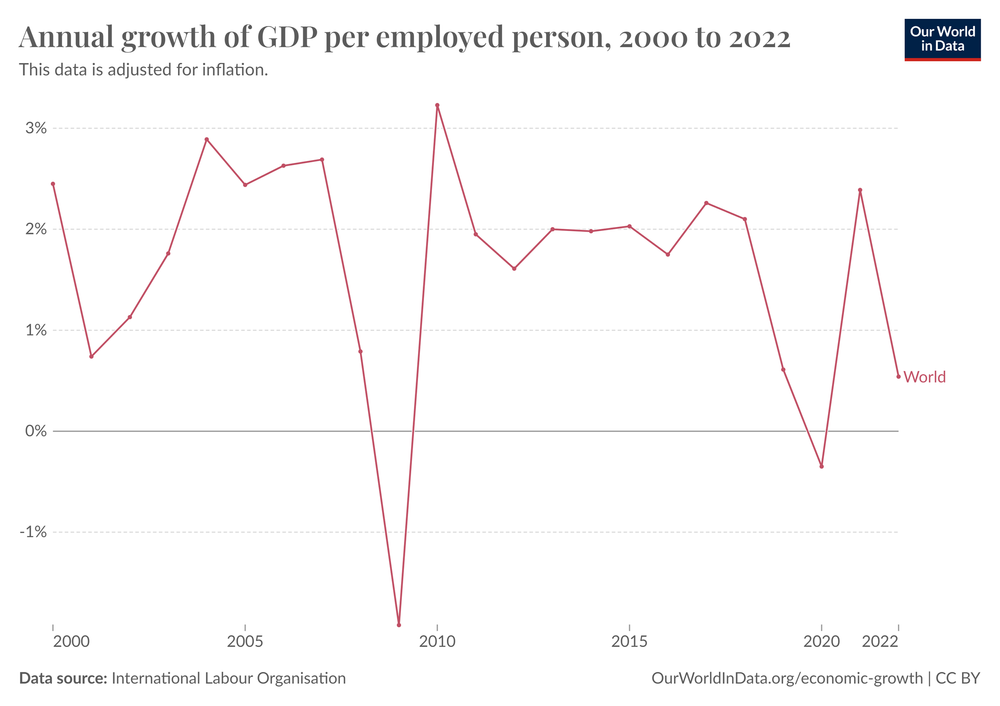
SDG Target #8.1
SDG #8 is to “Promote sustained, inclusive and sustainable economic growth, full and productive employment and decent work for all.”
Within SDG #8 are 12 targets, of which we here focus on Target 8.1:
Sustain per capita economic growth in accordance with national circumstances and, in particular, at least 7 per cent gross domestic product growth per annum in the least developed countries
Target 8.1 has one indicator:
Indicator 8.1.1: Annual growth rate of real GDP per capita
This target and indicator ask for us to aim for an increase of GDP, but also to keep pace with price rises from inflation, but also population growth. If GDP rises 7%, but so does the population growth, the actual rise in GDP cancels out. Likewise, if the GDP rises 7% but the inflation rate is 4%, then the GDP growth is only 3%.
The per capita annual growth rate for the world economy in 2022 was 2.28%, an increase from 1.86% in 2015, the year of the SDGs adoption. In the years following 2015, there was a dip in 2016 to 1.60%, followed by an increase in 2017, a tiny dip in 2018, a drop in 2019 to 1.51%, then a big drop in 2020 to -4.03%. 2021 saw a 5.31% rise, before an almost halving in 2022.
In 2022, the only Least Developed Countries with GDP growth rates above 7% was Niger with 7.43%
View fullsize
View fullsize

SDG Target #7.b
SDG #7 is to “Ensure access to affordable, reliable, sustainable and modern energy for all.”
Within SDG #7 are 5 targets, of which we here focus on Target 7.b:
By 2030, expand infrastructure and upgrade technology for supplying modern and sustainable energy services for all in developing countries, in particular least developed countries, small island developing States and landlocked developing countries, in accordance with their respective programmes of support
Target 7.b has one indicator:
Indicator 7.b.1: Installed renewable energy-generating capacity in developing and developed countries (in watts per capita)
The least developed countries face the prospects of the largest growth in population in the years to come. The existing dearth of energy for these countries takes on a double importance for their eventual access to be renewable. What if it's not, and such energy access comes from fossil fuels? The fight against climate change would be all but lost to accommodate the increase in living standards. This isn’t fair, to deprive such developing countries from access, thus its vital access comes via renewable energy
Th global capacity of renewable energy as of 2021 was 268 watts per capita, an increase from 154 watts per capita in 2015. In the Least Developed Countries in 2021, it was 39 watts per capita, up from 28 watts in 2015. In the Small Island Developing States, renewable energy capacity was 89 watts per capita in 2021, up from 55 watts in 2015.
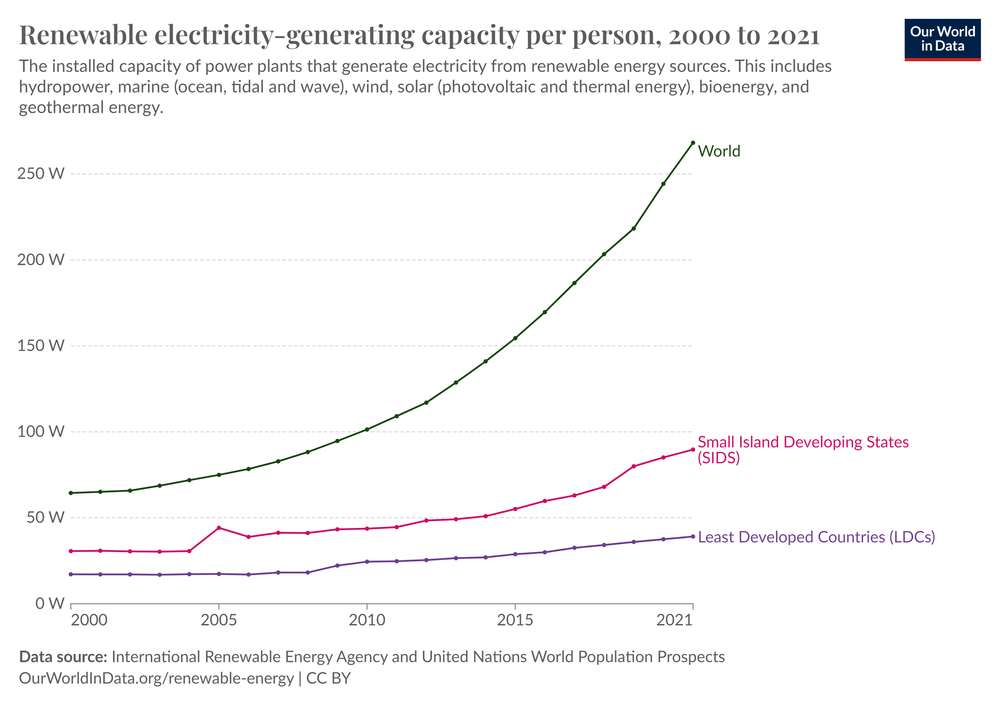
SDG Target #7.a
SDG #7 is to “Ensure access to affordable, reliable, sustainable and modern energy for all.”
Within SDG #7 are 5 targets, of which we here focus on Target 7.a:
By 2030, enhance international cooperation to facilitate access to clean energy research and technology, including renewable energy, energy efficiency and advanced and cleaner fossil-fuel technology, and promote investment in energy infrastructure and clean energy technology
Target 7.a has one indicator:
Indicator 7.a.1: International financial flows to developing countries in support of clean energy research and development and renewable energy production, including in hybrid systems
The International Renewable Energy Agency tracks financing of aid for renewable energy.
In 2021, OECD country donors gave $10 billion as foreign aid intended for clean energy. Not only is this amount down from the 2017 peak of $27 billion, it’s also a decrease from the 2015 amount of $12 billion. It’s thus not on track to “enhance international cooperation” in the form of aid for renewable energy, as this target asks of us.

SDG Target #7.3
SDG #7 is to “Ensure access to affordable, reliable, sustainable and modern energy for all.”
Within SDG #7 are 5 targets, of which we here focus on Target 7.3:
By 2030, double the global rate of improvement in energy efficiency
Target 7.3 has one indicator:
Indicator 7.3.1: Energy intensity measured in terms of primary energy and GDP
The global energy intensity in 2020 was $4.54 of economic value produced per megajoule of energy used. This was down a little from the figure at the adoption of the SDGs in 2015 of $4.83 per megajoule. But it's still far from the doubling of improvement required for this target, which would be a halving of the energy intensity.

SDG Target #7.2
SDG #7 is to “Ensure access to affordable, reliable, sustainable and modern energy for all.”
Within SDG #7 are 5 targets, of which we here focus on Target 7.2:
By 2030, ensure universal access to affordable, reliable and modern energy services
Target 7.2 has one indicator:
Indicator 7.2.1: Renewable energy share in the total final energy consumption
The renewable energy share in final energy consumption worldwide is 19% using 2020 data, far from this target’s aim of universal access to move away from the emission of carbon dioxide.
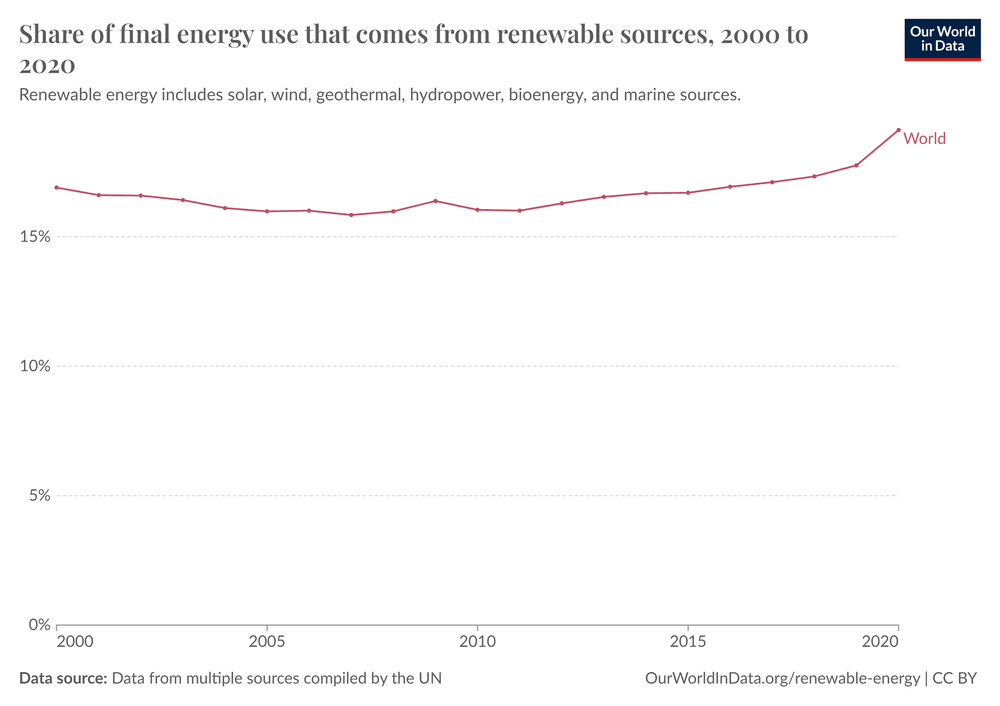
SDG Target #7.1
SDG #7 is to “Ensure access to affordable, reliable, sustainable and modern energy for all.”
Within SDG #6 are 5 targets, of which we here focus on Target 7.1:
By 2030, ensure universal access to affordable, reliable and modern energy services
Target 7.1 has two indicators:
Indicator 7.1.1: Proportion of population with access to electricity
Indicator 7.1.2: Proportion of population with primary reliance on clean fuels and technology
The obvious importance of electricity access lies as it’s a marker of living standards, as well as a necessity for health.
The World Bank has measured access to electricity worldwide to be 91% as of 2021. To break this up, Europe and Central Asia have full electrification, as do the high-income and the upper-middle income countries. The regions of the Middle East and North Africa, Latin America and the Caribbean and East Asia and the Pacific have between 97-98%. The lower-middle income countries have a similar proportion to the global population. 45% in low-income countries have electricity.
As we saw in Target 3.9, air pollution from stoves burning solid cooking fuels in households in some developing countries is a health risk. By contrast, in high-income countries, households tend to use cooking and energy methods not posing a health risk. Dirty fuels also pose affect the environment and contribute to climate change.
The World Health Organization estimates access to clean cooking fuels to be 71% of the world population.
View fullsize
View fullsize
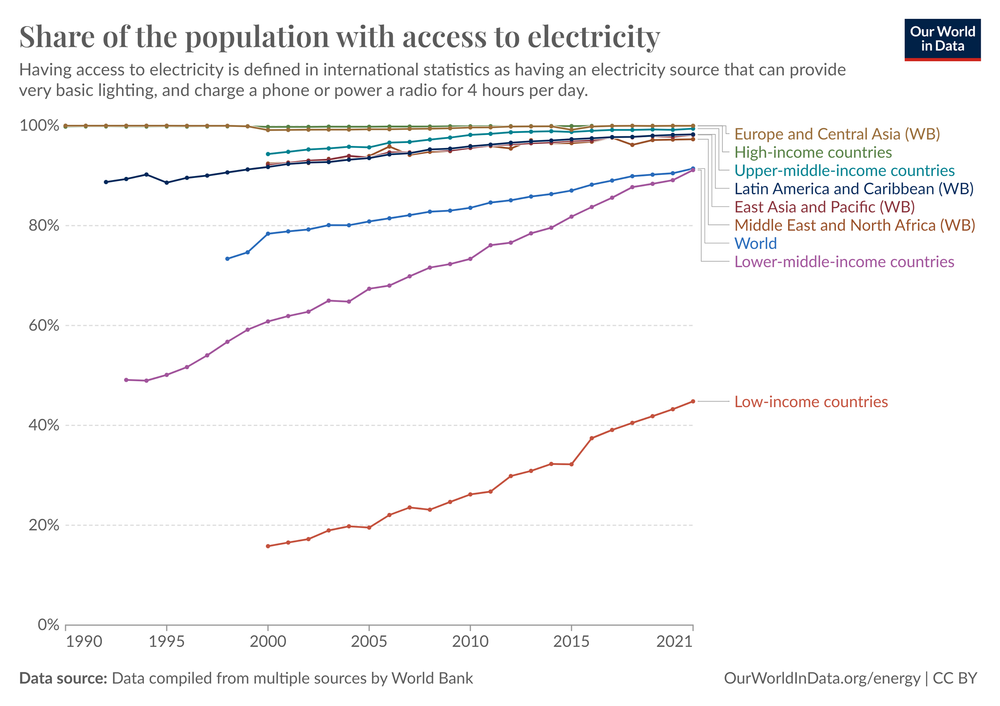
SDG Target #6.b
SDG #6 is to “Ensure availability and sustainable management of water and sanitation for all”
Within SDG #6 are 8 targets, of which we here focus on Target 6.b:
Support and strengthen the participation of local communities in improving water and sanitation management
Target 6.b has one indicator:
Indicator 6.b.1: Proportion of local administrative units with established and operational policies and procedures for participation of local communities in water and sanitation management
The data for this target draws from UN Water’s Global Analysis and Assessment of Sanitation and Drinking-Water (GLAAS). The World Health Organization puts this assessment into effect.
We’re here looking at water at the local government level. A handy tool is the OECD’s Water Governance Indicator Framework to assess policies. This framework is part of the OECD’s water program, which advises governments on water policies. The OECD also has 12 Principles on Water Governance it recommends for governments.
As of 2019, 70% of countries had in place policies and procedures for community participation in water and sanitation.
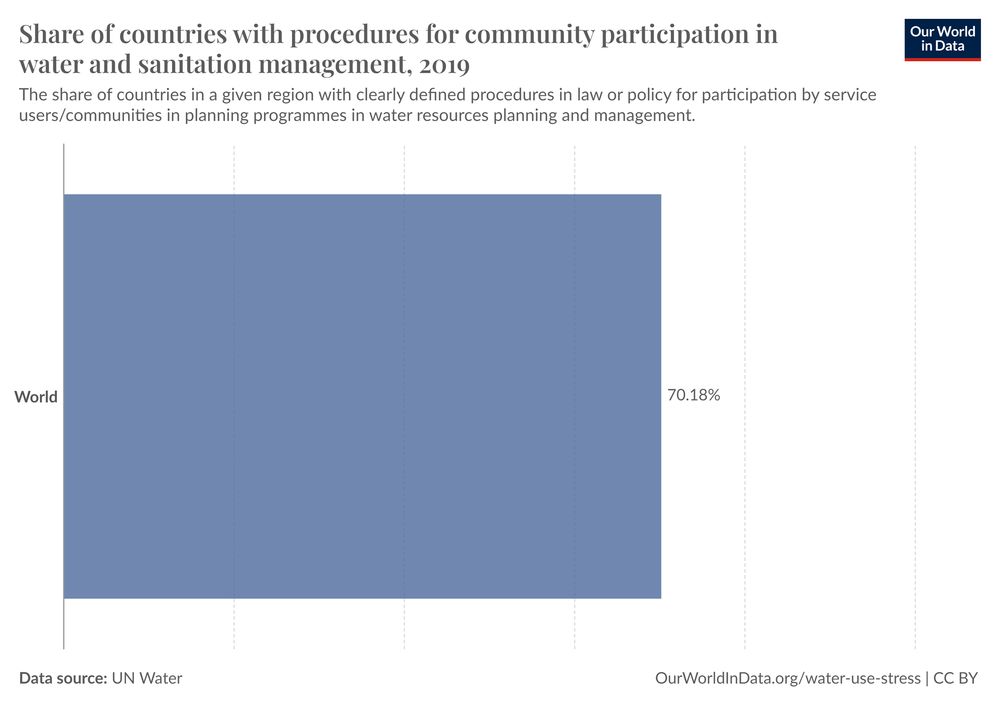
SDG Target #6.a
SDG #6 is to “Ensure availability and sustainable management of water and sanitation for all”
Within SDG #6 are 8 targets, of which we here focus on Target 6.a:
By 2030, expand international cooperation and capacity-building support to developing countries in water- and sanitation-related activities and programmes, including water harvesting, desalination, water efficiency, wastewater treatment, recycling and reuse technologies
Target 6.a has one indicator:
Indicator 6.a.1: Amount of water- and sanitation-related official development assistance that is part of a government-coordinated spending plan
Using the OECD’s Creditor Reporting System, we can disaggregate development flows by type. In this instance, we want to separate out water aid.
Let's look at ODA spent on water as part of a government’s budget. As of 2021, the biggest spender was India, with $420 million. Following was Vietnam and Cambodia, with $413 million and $309 million, then Bangladesh with $284 million and Egypt with $261 million.

SDG Target #6.5
SDG #6 is to “Ensure availability and sustainable management of water and sanitation for all”
Within SDG #6 are 8 targets, of which we here focus on Target 6.5:
By 2030, implement integrated water resources management at all levels, including through transboundary cooperation as appropriate
Target 6.5 has two indicators:
Indicator 6.5.1: Degree of integrated water resources management
Indicator 6.5.2: Proportion of transboundary basin area with an operational arrangement for water cooperation
What is integrated water resources management (IWRM)? In some ways, it’s reflective of the concept of sustainable development as it relates to water. It means to devise and put into effect a system which manages water resources with several considerations. It needs to consider the economic, social, and in particular the environmental aspects. At the governmental level, it can involve the coordination of several ministries. These might include the portfolios of water, planning, land, agriculture, and rural development.
Managing water resources is of utmost importance for the environment. But it also has large social, and economic implications in water scarce regions such as Western Asia and Africa. Every drop seems to count to ensure dignity and prosperity in these regions.
The Global Water Partnership, a network of over 3000 water organisations, and DHI, support such efforts. Managing water is relevant not only at the national level, but across countries within regions sharing a common border. It likewise has importance across administrative divisions within countries.
This issue of water resources shared across borders brings us to Indicator 6.5.2. This is relevant whether a shared water body is visible on the surface, or groundwater in an aquifer. This topic seems ripe for conflict in water scare regions, and as such, competing interests need managing. International treaties between nations on the sustainable use of transboundary freshwater aid this. The most prominent example is the 1997 Water Convention.
The degree to which an integrated water resources management plan is in effect across all countries worldwide is 54% as of 2020. France and Singapore lead with 100% implementation. A half-dozen countries score 0, among them Argentina, Canada, and Venezuela.
41% of global aquifers have transboundary basins with arrangements to cooperate over water as of 2022. 65% of river and lake basins have such coverage, with 58% for both combined.
View fullsize
View fullsize

SDG Target #6.4
SDG #6 is to “Ensure availability and sustainable management of water and sanitation for all”
Within SDG #6 are 8 targets, of which we here focus on Target 6.4:
By 2030, substantially increase water-use efficiency across all sectors and ensure sustainable withdrawals and supply of freshwater to address water scarcity and substantially reduce the number of people suffering from water scarcity
Target 6.4 has two indicators:
Indicator 6.4.1: Change in water-use efficiency over time
Indicator 6.4.2: Level of water stress: freshwater withdrawal as a proportion of available freshwater resources
It’s valuable to consider all the different activities which call upon water resources. These include the immense requirements of the primary industries of agriculture and resource extraction. Then there’s the secondary sectors of manufacturing, construction, plus the supply of power, as well as sewerage and waste treatment, as well as domestic water supply.
Water use efficiency is a measure in monetary terms, denominated in US dollars per cubic metre. At the country level, this means we take the GDP, and divide it by the number of cubic metres of freshwater withdrawn, to give us the water efficiency.
Worldwide, water efficiency in 2020 was $21 per cubic metre. Let's compare this figure for the best and worst performers among countries with data. The tiny country of Luxembourg had $1,379 per cubic metre the most water efficient, and Madagascar was the worst with $0.91/m3.
We become at risk of water stress when we withdraw freshwater at a rate faster than it can renew, minus what the environment needs. As of 2020, there’s 42 billion cubic metres of renewable water in the world, with an annual freshwater withdrawal rate of 3.8 billion cubic metres. We can calculate this to tell us how water stressed a country is. First, we take the amount of freshwater withdrawn (measured in cubic metres). We then divide this by the total renewable freshwater, minus the environment requirements. After multiplying by 100, this gives us a percentage of water stress, which if greater than 75%, is high. Besides affecting our drinking water supply and economic sectors, this threatens food security.
Measured at the global level, the level of water stress is 18% as of 2020. This level hasn't changed since 2015, although the target has asked us to reduce those living with water scarcity. Several countries even have a critical water stress percentage greater than 100. This occurs when we withdraw freshwater at a greater rate than the renewable sources can replenish. These countries span the Sahara, across the Mideast into Central Asia. Kuwait’s water efficiency percentage is a stratospheric 3,850%, followed by 1,587% in UAE and 974% in Saudi Arabia. Not only has Kuwait not decreased its water scarcity, its doubled it since 2000.
View fullsize
View fullsize

SDG Target #6.3
SDG #6 is to “Ensure availability and sustainable management of water and sanitation for all”
Within SDG #6 are 8 targets, of which we here focus on Target 6.3:
By 2030, improve water quality by reducing pollution, eliminating dumping and minimizing release of hazardous chemicals and materials, halving the proportion of untreated wastewater and substantially increasing recycling and safe reuse globally
Target 6.3 has two indicators:
Indicator 6.3.1: Proportion of domestic and industrial wastewater flows safely treated
Indicator 6.3.2: Proportion of bodies of water with good ambient water quality
The proportion of treated domestic wastewater worldwide stands at 57% as of 2022. Very few countries have enough data to report treatment for industrial wastewater.
The global proportion of water bodies with good water quality stands at 71% as of 2020.

SDG Target #6.2
SDG #6 is to “Ensure availability and sustainable management of water and sanitation for all”
Within SDG #6 are 8 targets, of which we here focus on Target 6.2:
By 2030, achieve access to adequate and equitable sanitation and hygiene for all and end open defecation, paying special attention to the needs of women and girls and those in vulnerable situations
Target 6.2 has one indicator:
Indicator 6.2.1: Proportion of population using (a) safely managed sanitation services and (b) a handwashing facility with soap and water
UNICEF and the World Health Organization have teamed up to report the progress on this issue under the banner of the JMP. This stands for the Joint Monitoring Programme for Water Supply, Sanitation and Hygiene (WASH).
The worldwide proportion of people with access to sanitation facilities is 56% as of 2022 and 75% for handwashing facilities.
View fullsize
View fullsize

View fullsize

SDG Target #6.1
SDG #6 is to “Ensure availability and sustainable management of water and sanitation for all”
Within SDG #6 are 8 targets, of which we here focus on Target 6.1:
By 2030, achieve universal and equitable access to safe and affordable drinking water for all
Target 6.1 has one indicator:
Indicator 6.1.1: Proportion of population using safely managed drinking water services
SDG #6 introduces us to UN Water, coordinating the efforts of all the other UN agencies on the topic of water and sanitation. WHO’s guidelines inform the definition for drinking water quality. Access to safe water is essential to health and disease prevention and lowering the barriers to access is a human right.
The worldwide access to safe drinking water as of 2022 was 72%. Central African Republic had the lowest access among countries with data, with only 6%. Much of this gap is due to where one lives, whereby worldwide, 81% of the urban population have access, but only 62% for those living in rural locations.

SDG Target #5.c
SDG #5 is to “Achieve gender equality and empower all women and girls.”
Within SDG #5 are 9 targets, of which we here focus on Target 5.c:
Adopt and strengthen sound policies and enforceable legislation for the promotion of gender equality and the empowerment of all women and girls at all levels
Target 5.c has one indicator:
Indicator 5.c.1: Proportion of countries with systems to track and make public allocations for gender equality and women’s empowerment
Are governments of countries putting their money where their mouth is by putting gender equality and women’s empowerment in law? Are they allocating public finances to put such laws into effect? Are the finance ministries of governments held accountable by the populace to instil equality? Is there an office or ministry, given a budget to spend on such policies in favour of women? If it isn't budgeted for, can a government claim women’s development to be a priority?
As of 2021, the global proportion of countries with systems to track public expenditure on gender equality stands at 26%.
SDG Target #5.b
SDG #5 is to “Achieve gender equality and empower all women and girls.”
Within SDG #5 are 9 targets, of which we here focus on Target 5.b:
Enhance the use of enabling technology, in particular information and communications technology, to promote the empowerment of women
Target 5.b has one indicator:
Indicator 5.b.1: Proportion of individuals who own a mobile telephone, by sex
The definition for the purposes of measurement is access via a public switched telephone network.
As of 2022, 68% of women own a mobile phone in contrast to 77% of men. Among countries with data, all women in Saudi Arabia, Bahrain and UAE have mobiles, and only 11% of women in Burundi have access.

SDG Target #5.a
SDG #5 is to “Achieve gender equality and empower all women and girls.”
Within SDG #5 are 9 targets, of which we here focus on Target 5.a:
Undertake reforms to give women equal rights to economic resources, as well as access to ownership and control over land and other forms of property, financial services, inheritance and natural resources, in accordance with national laws
Target 5.a has two indicators:
Indicator 5.a.1: (a) Proportion of total agricultural population with ownership or secure rights over agricultural land, by sex; and (b) share of women among owners or rights-bearers of agricultural land, by type of tenure
Indicator 5.a.2: Proportion of countries where the legal framework (including customary law) guarantees women’s equal rights to land ownership and/or control
Indicator 5.a.1 stipulates to disaggregate the data for the indicator by type of tenure. These types include public, private, communal, indigenous, customary, and informal.
Among the countries with data as of 2022, most are developing countries. Cambodia leads with 88% of women having secure agricultural land rights and 54% of the share of agricultural landowners. Malawi has the largest share with 56%, with Pakistan the least among those with data at 6%.
Indicator 5.a.2 measures gender equality of land ownership rights enshrined in law. Among those countries with data, Ethiopia and Lithuania have the highest guarantees. The lowest guarantees in the legal frameworks for equal land ownership are in Lebanon and Mauritania.
View fullsize
View fullsize

SDG Target #5.6
SDG #5 is to “Achieve gender equality and empower all women and girls.”
Within SDG #5 are 9 targets, of which we here focus on Target 5.6:
Ensure universal access to sexual and reproductive health and reproductive rights as agreed in accordance with the Programme of Action of the International Conference on Population and Development and the Beijing Platform for Action and the outcome documents of their review conferences
Target 5.6 has two indicators:
Indicator 5.6.1: Proportion of women aged 15–49 years who make their own informed decisions regarding sexual relations, contraceptive use and reproductive health care
Indicator 5.6.2: Number of countries with laws and regulations that guarantee full and equal access to women and men aged 15 years and older to sexual and reproductive health care, information and education
This target introduces us to the topics of population as it relates to women. This issue, as well as sexual and reproductive health and rights, is overseen at the UN level by the UNFPA (UN Population Fund). From this arises the question for women worldwide on who’s making the decision about their own healthcare. Do women have the choice to use contraceptives, and can they refuse sex with a partner if they don’t want to? The fertility rates are highest in these countries, yet so are the child mortality rates. Some families choose to have more children to compensate. Many women in such regions have choice deprived of them around their reproductive decisions. But development allows women to delay childbirth and reduces the child mortality and fertility rates. It's also easier to meet the existing population’s basic needs when there’s less mouths to share it with.
Target #5.6 mentions to International Conference on Population and Development. This 1994 UNFPA conference addressed the pressures of population, fertility, and development. The ICPD also highlighted the issue of women’s rights to their own decision-making on matters relating to sex and reproduction.
This extends to the laws in effect in respective countries upholding such rights. These include matters of:
Maternity care
Contraception and family planning, including the topic of the morning after pill
Sex education, including the teaching of consent
HIV and HPV
Abortion
Consideration of the age children and adolescents can consent to their own medical treatment
Child sexual exploitation
This target also mentions the Beijing Declaration and Platform of Action, mentioned already in this series in Target 5.1.
56% of women worldwide make their own informed decisions about sexual relations and contraceptive use. The lowest rates are in sub-Saharan Africa, where only 37% of women face such choices.
76% of countries have laws as of 2022 ensuring the right to access sexual and reproductive health care for both sexes.
View fullsize
View fullsize

SDG Target #5.5
SDG #5 is to “Achieve gender equality and empower all women and girls.”
Within SDG #5 are 9 targets, of which we here focus on Target 5.5:
Ensure women’s full and effective participation and equal opportunities for leadership at all levels of decision-making in political, economic and public life
Target 5.5 has two indicators:
Indicator 5.5.1: Proportion of seats held by women in (a) national parliaments and (b) local governments
Indicator 5.5.2: Proportion of women in managerial positions
Indicator 5.5.1 introduces us to the work of the Inter-Parliamentary Union (IPU). The IPU is independent of the UN, but the two work together. Indicator 5.5.1 is split into two levels of governance: national parliaments and local governments. For the countries with data, UN Women reports 3 million elected to local government.
As of 2023, the global share of women in parliamentary seats is 26%, with the most in Rwanda, with 61%. For the same in local government, the global figure is 35%, the largest share being in Antigua and Barbuda.
Let's turn from positions of leadership in government to the world of work and the labour force for the second indicator for Target 5.5. We now measure what share of women have a managerial occupation. Of the countries with data, Jordan has the largest share of women in senior and middle management positions with 57%. The worldwide share of organisations with the top manager being female is 18%, with the greatest share of countries with data in Thailand (64%).
View fullsize
View fullsize

View fullsize

View fullsize

SDG Target #5.4
SDG #5 is to “Achieve gender equality and empower all women and girls.”
Within SDG #5 are 9 targets, of which we here focus on Target 5.4:
Recognize and value unpaid care and domestic work through the provision of public services, infrastructure and social protection policies and the promotion of shared responsibility within the household and the family as nationally appropriate
Target 5.4 has one indicator:
Indicator 5.4.1: Proportion of time spent on unpaid domestic and care work, by sex, age and location
Unemployed individuals, or those performing unpaid work, are seldom recognised for their contribution. They’re underutilised in the use of their time from an economic and social perspective. This has relevance when considering gender across the globe.
Many countries don’t have data for this indicator. Of the countries with data, the biggest disparity between the sexes in time spent on unpaid work is Mexico. In 2022, Mexican men spent 11% of their time each day on unpaid work, and women 27%. Indicator 5.4.1 asks of us to disaggregate the data by location. To separate Mexico’s 2019 data, 30% of the time of rural women was unpaid work compared to 26% for urban women. Rural men spent 10% of their time on unpaid work, and 11% for urban men in Mexico.

SDG Target #5.3
SDG #5 is to “Achieve gender equality and empower all women and girls.”
Within SDG #5 are 9 targets, of which we here focus on Target 5.3:
Eliminate all harmful practices, such as child, early and forced marriage and female genital mutilation
Target 5.3 has two indicators:
Indicator 5.3.1: Proportion of women aged 20–24 years who were married or in a union before age 15 and before age 18
Indicator 5.3.2: Proportion of girls and women aged 15–49 years who have undergone female genital mutilation, by age
The worldwide proportion of women married before age 15 was 4% as of 2022. We don’t have worldwide data for women married under age 18. But among countries with data, the highest rates were in Niger, where 76% of women married before 18.
Unpleasant as it may to be to discuss, imagine how much worse it could be to experience female genital mutilation. 230 million females experience this practice, often when girls are not yet adults.
UN agencies have collaborated to present the statement entitled Eliminating female genital mutilation. The statement approaches the topic from many perspectives:
health
human rights
development
social and cultural practices
children’s rights
women’s rights
reproductive rights.
The countries with rates of female genital mutilation greater than 80% of the female population as of 2020 include:
Mali
Guinea
Sierra Leone
Egypt
Sudan
Eritrea
Somalia (99% rate)

View fullsize

SDG Target #5.2
SDG #5 is to “Achieve gender equality and empower all women and girls.”
Within SDG #5 are 9 targets, of which we here focus on Target 5.2:
Eliminate all forms of violence against all women and girls in the public and private spheres, including trafficking and sexual and other types of exploitation
Target 5.2 has two indicators:
Indicator 5.2.1: Proportion of ever-partnered women and girls aged 15 years and older subjected to physical, sexual or psychological violence by a current or former intimate partner in the previous 12 months, by form of violence and by age
Indicator 5.2.2: Proportion of women and girls aged 15 years and older subjected to sexual violence by persons other than an intimate partner in the previous 12 months, by age and place of occurrence
This target focuses on violence against women and intimate partner violence. These are not only crimes in many countries, but violations of human rights agreed upon at the international level in the form of treaties. Looked at from a public health perspective, the threat it poses to the health of a population is of pandemic proportions. Let’s look at some of the forms countries enshrine and affirm this right.
The most relevant to this topic is the Declaration on the Elimination of Violence against Women adopted by the UN General Assembly in 1993. This violence can be physical, sexual, or psychological, whether or not committed by an intimate partner.
The same principles are also reflected in the following human rights agreements:
Universal Declaration of Human Rights. The Declaration is international law for those who signed and ratified via two treaties adopted by the UN General Assembly in 1966:
International Covenant on Civil and Political Rights. All but 20 countries are states parties. Those who’ve not acted include South Sudan, Saudi Arabia, Oman, UAE, Bhutan, Malaysia, Myanmar, with China signing but not ratifying.
International Covenant on Economic, Social and Cultural Rights. In this instance the US is the main holdout from becoming a state party, having signed but not ratified. Saudi Arabia, the same Gulf states, Malaysia, and Myanmar again haven’t signed. Botswana, Mozambique and about 20 other smaller countries also haven't signed or ratified.
In the previous target, we already looked at the Convention on the Elimination of All Forms of Discrimination against Women.
Convention against Torture and Other Cruel, Inhuman or Degrading Treatment or Punishment. The General Assembly adopted this treaty in 1984. The largest country which isn't a state party is India, which has signed but not ratified. Other non-signatories are Bangladesh, Eswatini, Iran, Myanmar, Malaysia and Papua New Guinea and other smaller countries.
The advancement of women has been a focus of the UN since the UN Decade for Women from 1975-85. For 68 annual sessions, as of 2024, the UN Women’s Commission on the Status of Women has met to advance women’s empowerment and gender equality.
How prevalent is the crime of violence against women worldwide, across regions and countries? How do we know? Much violence against women occurs out of sight, behind closed doors. For this information, we can look to three main international sources. Several UN agencies work together to collate this data for measurement. 10% of women over 15-years-old worldwide experienced physical or sexual violence from an intimate partner in the past 12 months. The highest proportions were in Democratic Republic of Congo and Afghanistan, both reporting above 30%.

SDG Target #5.1
SDG #5 is to “Achieve gender equality and empower all women and girls”
Within SDG #5 are 9 targets, of which we here focus on Target 5.1:
End all forms of discrimination against all women and girls everywhere
Target 5.1 has one indicator:
Indicator 5.1.1: Whether or not legal frameworks are in place to promote, enforce and monitor equality and non‑discrimination on the basis of sex
This target will introduce us to UN Women, the UN body charged with the task of achieving gender equality, one of the pillars of development. Many developing countries need help to meet this target's aim. The high-income countries of the OECD can help developing countries to promote such standards. This is because of the intrinsic tie between gender inequality and sustainable development.
What do countries need to put such legal frameworks into effect? Countries need to promote the adoption of laws affecting the life of women, then enforce and track them. Such laws need to cover the topics of violence against women. They also need to address employment, to ensure women enjoy economic benefits, and also marriage and family.
What is the primary guiding principle in considering legal frameworks to end discrimination? Let's look to Article 1 of the Convention on the Elimination of All Forms of Discrimination Against Women (CEDAW). It defines discrimination against women as:
“...distinction, exclusion or restriction made on the basis of sex which has the effect or purpose of impairing or nullifying the recognition, enjoyment or exercise by women, irrespective of their marital status, on a basis of equality of men and women, of human rights and fundamental freedoms in the political, economic, social, cultural, civil or any other field.”
The States Parties to the CEDAW are all countries except the US, Iran, Sudan, Somalia, Palau (which is in free association with the US) and Tonga.
Another landmark guidance for intergovernmental progress in advancing gender equality occurred in Beijing. It's known as Beijing Declaration and Platform for Action, adopted in 1995 and affirmed five years later in Beijing in 2000.
Worldwide, as of 2022, 70% of countries have a legal framework addressing gender equality. 78% of countries have legal frameworks addressing violence against women as of 2022. 76% have legal frameworks addressing gender equality as it relates to employment and economic benefits. 79% of countries have legal frameworks addressing gender in relation to marriage and family.
View fullsize
View fullsize

View fullsize

View fullsize

SDG Target #4.c
SDG #5 is to “Ensure inclusive and equitable quality education and promote lifelong learning opportunities for all.”
Within SDG #4 are 10 targets, of which we here focus on Target 4.c:
By 2030, substantially increase the supply of qualified teachers, including through international cooperation for teacher training in developing countries, especially least developed countries and small island developing States
Target 4.c has one indicator:
Indicator 4.c.1: Proportion of teachers with the minimum required qualifications, by education level
As of 2019, the proportion of pre-primary teachers with the minimum required qualifications in the least developed countries (LDCs) was 63% and 72% in the small island developing countries (SIDS). For primary school teachers, the 2020 proportion was 79% for SIDS and 72% for LDCs and 86% worldwide. For each, the increase since 2015 was a couple percentage points. For lower secondary school in 2020, worldwide 83% of teachers had the minimum qualifications, 63% for LDCs and 75% for SIDS. For upper secondary in 2020, 89% of teachers in the SIDS had minimum qualifications, 85% worldwide, and 58% in LDCs.
View fullsize
View fullsize

View fullsize

View fullsize

SDG Target #4.b
SDG #4 is to “Ensure inclusive and equitable quality education and promote lifelong learning opportunities for all.”
Within SDG #4 are 10 targets, of which we here focus on Target 4.b:
By 2020, substantially expand globally the number of scholarships available to developing countries, in particular least developed countries, small island developing States and African countries, for enrolment in higher education, including vocational training and information and communications technology, technical, engineering and scientific programmes, in developed countries and other developing countries
Target 4.b has one indicator:
Indicator 4.b.1: Volume of official development assistance flows for scholarships by sector and type of study
This indicator reintroduces us to the concept of official development assistance (ODA). Otherwise known as foreign aid, the high-income OECD countries bear the responsibility to donate ODA. These donor countries form the OECD's Development Assistance Committee (DAC) to offer aid flows to the list of ODA recipients. This target focuses on ODA for scholarships to finance the development of education systems.
To track the progress for this target and indicator, let’s look at the development flows to the respective regions mentioned in the body of target 4.b. For African countries, as of 2021, ODA intended for scholarships was $US297 million, an increase from $US225 million from 2015. For developing countries, aid for scholarships in 2021 was $1.35 billion, down from $1.49 billion in 2015. For the least developed countries, 2021 scholarship aid was $221 million, down from $225 million in 2015. For the Small Islands Developing States, scholarship aid was $43 million in 2021, down from $104 million in 2015.

SDG Target #4.a
SDG #4 is to “Ensure inclusive and equitable quality education and promote lifelong learning opportunities for all.”
Within SDG #4 are 10 targets, of which we here focus on Target 4.a:
Build and upgrade education facilities that are child, disability and gender sensitive and provide safe, non-violent, inclusive and effective learning environments for all
Target 4.a has one indicator:
Indicator 4.a.1: Proportion of schools offering basic services, by type of service
Key to achieving this in the modern-day is access to information and communication technologies. ICTs allow even the remotest schools and children to access education systems. It even allows the possibility to access some of the best education institutions in the world. Schools need electricity to power the information and communication technologies. They also need an internet connection and computers for teaching and learning. Still, solutions to achieve this are available at low-cost.
The infrastructure of the learning environment also needs to adapt to be suitable for those with a disability. The learning materials need to factor in disabled students also.
School facilities also need basic facilities for drinking water, sanitation, and handwashing.
Let's look at the worldwide progress toward this target and indicator. The proportion of schools offering the basic service of access to electricity as of 2020 was 90% in upper secondary, and 75% in primary. 80% of secondary schools offered access to handwashing facilities, and 76% of primary schools. 84% of secondary schools offered access to drinking water, and 75% of primary schools. 76% of upper secondary schools offered access to computers, and 46% of primary schools. The proportion of primary schools offering internet access for the purposes of teaching worldwide in 2022 was 39%. 89% of secondary schools offered single-sex toilets worldwide in 2020, and 76% of primary schools. 56% of secondary schools offered learning materials and infrastructure adapted to disabled students. This proportion was 47% for primary schools.
View fullsize
View fullsize

View fullsize

View fullsize

View fullsize

View fullsize

View fullsize

SDG Target #4.7
SDG #4 is to “Ensure inclusive and equitable quality education and promote lifelong learning opportunities for all.”
Within SDG #4 are 10 targets, of which we here focus on Target 4.7:
By 2030, ensure that all learners acquire the knowledge and skills needed to promote sustainable development, including, among others, through education for sustainable development and sustainable lifestyles, human rights, gender equality, promotion of a culture of peace and non-violence, global citizenship and appreciation of cultural diversity and of culture’s contribution to sustainable development
Target 4.7 has one indicator:
Indicator 4.7.1: Extent to which (i) global citizenship education and (ii) education for sustainable development are mainstreamed in (a) national education policies; (b) curricula; (c) teacher education; and (d) student assessment
For us to have peace and sustainable development, we first need to educate ourselves on what sustainable development is. How we achieve it is the foundation for peace. The issues the SDGs place before are urgent. But we can take actions to foster sustainable development to keep at bay the most sudden and striking outcomes on our planet. Our world is interdependent, and whether we choose to be or not, we’re global citizens.
But what does it mean to be a good global citizen? Like anything in life, to light the way, we need an education in global citizenship. In this way, we can go on to contribute, whatever our age, and this opportunity ought to inspire us all. Education to foster understanding across countries, as well as being a human right, opens a world of freedom for the learner.
The responsibility to put in place this right of citizens in each country lies with the relevant ministries of education. But we have an opportunity at the international level for member states to cooperate via UNESCO’s efforts.
UNESCO has issued a recommendation document outlining how governments should foster such education. Recommendations are part of the legal jargon of UNESCO to set standards for member states to put into practice or law.
The results for this indicator are encouraging among the countries with data. We're measuring the extent of mainstreaming global citizenship and sustainable development education. The unit of measure is an index, where 0 is the worst and 1 the best. Most reporting countries record indexes greater than 0.8 for mainstreaming in national education. The results are similar for mainstreaming in curricula, teacher education and student assessment.
View fullsize
View fullsize

View fullsize

View fullsize

SDG Target #4.6
SDG #4 is to “Ensure inclusive and equitable quality education and promote lifelong learning opportunities for all.”
Within SDG #4 are 10 targets, of which we here focus on Target 4.6:
By 2030, ensure that all youth and a substantial proportion of adults, both men and women, achieve literacy and numeracy
Target 4.6 has one indicator:
Indicator 4.6.1: Proportion of population in a given age group achieving at least a fixed level of proficiency in functional (a) literacy and (b) numeracy skills, by sex
This indicator introduces us to the concept of fixed level of proficiency. This is a standard of knowledge in a field of learning - in this instance, literacy and numeracy.
To survey the skills of adults, the OECD runs the PIAAC. This stands for Programme for the International Assessment of Adult Competencies. This program can assess adults in literacy and numeracy.
What are the worldwide literacy rates of people between 15-24 years old? As of 2020, disaggregated by sex as defined by the indicator, it's 93% for men and 90% for women, with only a fractional increase since 2015.
The worldwide literacy rate for males over 15 was 90% in 2020, and 83% for females. But as of 2017, UNESCO has insufficient data across the countries to form a global numeracy rate disaggregated by sex.
View fullsize
View fullsize

View fullsize

SDG Target #4.5
SDG #4 is to “Ensure inclusive and equitable quality education and promote lifelong learning opportunities for all.”
Within SDG #4 are 10 targets, of which we here focus on Target 4.5:
By 2030, eliminate gender disparities in education and ensure equal access to all levels of education and vocational training for the vulnerable, including persons with disabilities, indigenous peoples and children in vulnerable situations
Target 4.5 has one indicator:
Indicator 4.5.1: Parity indices (female/male, rural/urban, bottom/top wealth quintile and others such as disability status, indigenous peoples and conflict-affected, as data become available) for all education indicators on this list that can be disaggregated
Whilst for this indicator, there isn’t one global parity index for gender equality, disability, and indigenous people. We do have some data for individual countries.
Those with a 2021 gender parity for primary completion lower than 0.8, meaning less 8 girls for every 10 boys, were Yemen, Somalia, and Afghanistan. The latter two had parities closer to 7 girls for every boy.
What about secondary completion? A half-dozen other countries in sub-Saharan Africa with 2021 data had parity rates across the sexes below 7 girls for every 10 boys. The lowest secondary completion gender parities were in Chad and Somalia, where 0.35 girls completed secondary per boy.



SDG Target #4.4
SDG #4 is to “Ensure inclusive and equitable quality education and promote lifelong learning opportunities for all.”
Within SDG #4 are 10 targets, of which we here focus on Target 4.4:
By 2030, substantially increase the number of youth and adults who have relevant skills, including technical and vocational skills, for employment, decent jobs and entrepreneurship
Target 4.4 has one indicator:
Indicator 4.4.1: Proportion of youth and adults with information and communications technology (ICT) skills, by type of skill
The mention of ICT’s introduces us to the UN agency specialising in this field, the International Telecommunication Union (ITU).
To measure these skills at the international level, in 2020, the ITU has issued a manual to measure access of individuals and households. This gives us 50 indicators for a variety of ICT skills, grouped into several categories.
An example is being able to receive and send SMS. Another is using VoIP technologies to make voice calls and send messages over broadband internet.
It’s imperative across countries for individuals and households to have access to and use ICT’s. The world must progress toward greater connection. This is a reflection of the value of digital knowledge and the information societies we’ve become. In this way, telecommunication is key to development. The importance of ICT extends beyond the individual and household to education. It also offers opportunities for governments and enterprises, and the infrastructure for this needs to be there to begin with.
SDG Target #4.3
SDG #4 is to “Ensure inclusive and equitable quality education and promote lifelong learning opportunities for all.”
Within SDG #4 are 10 targets, of which we here focus on Target 4.3:
By 2030, ensure equal access for all women and men to affordable and quality technical, vocational and tertiary education, including university
Target 4.3 has one indicator:
Indicator 4.3.1: Participation rate of youth and adults in formal and non-formal education and training in the previous 12 months, by sex
The more training and education undertaken by a population, the greater the participation in the labour force, and for individuals to find employment and avoid unemployment and underemployment in working the number of hours one wishes to.
Worldwide, the enrolment rate for tertiary education as of 2022 was 41%, up from 36% in 2015, at the adoption of the SDGs.


SDG Target #4.2
SDG #4 is to “Ensure inclusive and equitable quality education and promote lifelong learning opportunities for all.”
Within SDG #4 are 10 targets, of which we here focus on Target 4.2:
By 2030, ensure that all girls and boys have access to quality early childhood development, care and pre-primary education so that they are ready for primary education
Target 4.2 has two indicators:
Indicator 4.2.1: Proportion of children aged 24–59 months who are developmentally on track in health, learning and psychosocial well-being, by sex
Indicator 4.2.2: Participation rate in organised learning (one year before the official primary entry age), by sex
The UN agency responsible for monitoring the first indicator for this target is UNICEF (United Nations Children’s Fund), focused upon children. The indicator is served by UNICEF’s Early Childhood Development Index 2030, a tool to measure this indicator’s progress. The science underlying early childhood development has revealed it as a crucial intervention in the effective nurturing and care in a child’s overall development, and the SDGs present an opportunity to expand and implement such findings to the greatest possible scale.
Worldwide, as of 2022, only 69% of children aged 3 to 5 are on track in health, learning and psychosocial well-being.
The second indicator for this target looks at pre-school, defined according to UNESCO’s International Standard Classification of Education (ISCED). The ISCED exists to provide uniformity across the different education structures and curricula across countries.
As of 2020, 74% of children at the age of one year before primary entry were enrolled in organised learning, about the same as 2015, at the adoption of the Global Goals. Disaggregated by sex, per the definition of the indicator, the enrolment of both sexes was at parity as of 2022.
SDG Target #4.1
SDG #4 is to “Ensure inclusive and equitable quality education and promote lifelong learning opportunities for all.”
Within SDG #4 are 10 targets, of which we here focus on Target 4.1:
By 2030, ensure that all girls and boys complete free, equitable and quality primary and secondary education leading to a relevant and effective learning outcome.
Target 4.1 has two indicators:
Indicator 4.1.1: Proportion of children and young people (a) in grade 2/3; (b) at the end of primary; and (c) at the end of lower secondary achieving at least a minimum proficiency level in (i) reading and (ii) Mathematics, by sex
Indicator 4.1.2: Completion rate (primary education, lower secondary education, upper secondary education)
Indicator 4.1.1 looks at minimum proficiency levels. This is the benchmark of basic knowledge, as measured by assessments, in this instance, for reading and mathematics. This indicator looks at reading and maths skills at three points: grade 2 and 3, end of primary schooling, and end of lower secondary. Performance level descriptors describe the knowledge and skills demonstrated by students at each. Performance level descriptors help us to assess students across countries.
Let's look at the respective descriptors for each grade.
Reading, grade 2: Being able to read and comprehend familiar written words and extract explicit information from sentences.
Reading, grade 3: Read written words aloud, understanding the meaning of sentences and short texts and identifying the topic.
Maths, grades 2/3: To make sense of, calculate numbers, and recognise shapes.
Reading, end of primary: Interpreting and giving explanations about the main and secondary ideas in different texts and establishing connections between main ideas and their own experiences.
Maths, end of primary: Basic measurement and reading and creating graphs.
Reading, end of lower secondary schooling: Establishing connections of the author’s intentions and reflecting and drawing conclusions based on the text.
Maths, end of lower secondary school: Solving maths problems, using tables and graphs, as well as algebra.
The data for assessing trends in students draws from a half-dozen surveys, some run by UNICEF and UNESCO. UNESCO the UN’s agency focused on education. The purpose of these assessments is to survey the effectiveness of learning outcomes. In some countries, it’s possible for a student to pass through grades without meeting the minimum proficiency levels.
International large-scale assessments test educational outcomes. An example is PIRLS (Progress in International Reading Literacy Study) for reading literacy in grade 4 students.
There are also several large-scale learning assessments at the national and regional level. UNESCO’s office in Santiago houses the bureau focused on education in the Latin American and Caribbean region. This includes the LLECE, the Spanish acronym for the Latin American Laboratory for Evaluation of the Quality of Education. The LLECE runs the ERCE, the Spanish acronym for the Regional Comparative and Explanatory Study, a major large-scale learning assessment for the region.
Other examples of large-scale learning assessments at the regional level include:
SEACMEQ (Southern and Eastern African Consortium for Monitoring Educational Quality)
Pacific Community’s Pacific Islands Literacy and Numeracy Assessment
SEAMEO (Southeast Asian Ministers of Education Organization)
The benefit of these surveys is they serve as tools to provide the evidence which then goes toward making decisions to improve education. This then serves those children not attaining the expected learning outcomes for their grade level.
As of 2019, the proportion of students worldwide at the end of primary education meeting minimum proficiency levels in reading was 58%. This was down 1% since the start of the SDG period in 2015. For maths at the same level, the worldwide share of minimum proficiency was 44%, and 50% for lower secondary in mathematics.
To coincide with the adoption of the Sustainable Development Goals in 2015, the UN released a report, titled Education 2030. The Incheon Declaration and Framework for Action accompanied the report. This declaration's name came from the South Korean city hosting UNESCO’s World Education Forum 2015 conference. Education 2030 is an effort of several UN agencies besides UNESCO, including the UNDP, UNFPA, UNHCR, UNICEF, UN Women, the World Bank Group and ILO. The purposes of the report, as well as the Incheon Declaration and Framework for Action, reinforces the purpose of SDG #2.
The aim is to end Learning Poverty, which the World Bank defines as 10-year-olds being unable to read and understand a simple story.
The second indicator for this target looks at school completion of primary, lower secondary and upper secondary.
The completion rate for primary education worldwide was 87% as if 2021, up only 2% since 2015. Lower secondary completion rates were 77% in 2020, again up only 2% since 2015. Global upper secondary completion was 58% as of 2021, up 5% since 2015.






SDG Target #3.d
SDG #3 is to “To ensure healthy lives and promote well-being for all at all ages.”
Within SDG #3 are 13 targets, of which we here focus on Target 3.d:
Strengthen the capacity of all countries, in particular developing countries, for early warning, risk reduction and management of national and global health risks.
Target 3.d has two indicators:
Indicator 3.d.1: International Health Regulations (IHR) capacity and health emergency preparedness
Indicator 3.d.2: Percentage of bloodstream infections due to selected antimicrobial resistant organisms.
This target and indicators look at the security aspects of health, inclusive of emergency management, aiming to increase the ability of all World Health Organisation member states to prepare for public health emergencies, such as the world has experienced with COVID-19.
Much of how World Health Organisation states-parties are to behave in relation to one another to prevent global pandemics is guided by the WHO’s International Health Regulations, as mentioned in this target’s first indicator. The respective WHO states-parties are obliged to self-report each year on their adherence and capacities for the International Health Regulations.
The self-assessment tool has 15 indications for WHO members, ranging from legislation; financing; zoonotic diseases of human-animal crossover, which account for 75% of emerging pathogens; coordination between countries to notify the WHO of events which pose a global health risk; food safety, and preventing and controlling infections, among others. Further, each country is to post their self-assessment in fulfilling the International Health Regulations online via the public e-SPAR platform.
The second indicator of this target looks at bloodstream infections due to selected antimicrobial-resistant organisms. These organisms include a variety of the bacterium Staphylococcus aureus which is resistant to the antibiotic methicillin, a type of penicillin. Also, the bacterium E. coli. produces an enzyme which is resistant to a type of antibiotics called cephalosporins.
One of the methods clinical laboratories can use to test whether a microorganism may be susceptible to antibiotics is known as a broth microdilution. Antimicrobial resistance occurs when viruses, bacteria, fungi and parasites change in the ways by which drugs once used to treat against them either have less efficacy or no longer work. The greater difficulty caused by treating infections of such microorganisms in turn can be the cause of greater infectivity and spread of disease, as well as the possibility of such diseases being more fatal.
One of the initiatives the World Health Organization exercises against this threat is the Global Antimicrobial Resistance and Use Surveillance System (GLASS) to help countries surveil for such developments of drug resistance in known microorganisms.
For the second indicator of this target, the global share of Staphylococcus aureus infections resistant to methicillin stood at 31% as of 2021, up from 20% in 2016. E. coli infections resistant to cephalosporins stands at a global total of 39% in 2021, up from 35% in 2016, and experiencing an almost doubling in 2018, before coming back down.



SDG Target #3.c
SDG #3 is to “To ensure healthy lives and promote well-being for all at all ages.”
Within SDG #3 are 13 targets, of which we here focus on Target 3.c:
Substantially increase health financing and the recruitment, development, training and retention of the health workforce in developing countries, especially in the least developed countries and small island developing states.
Target 3.c has one indicator:
Indicator 3.c.1: Health worker density and distribution
According to 2017 data, reflecting only two years after the adoption of the Sustainable Development Goals in 2015, the number of medical doctors per 1,000 people in the world was 1.75. For the low-income countries, this number was 0.32 doctors for every thousand people, in contrast to 3.73 in high-income countries and 1.49 for middle-income countries.

SDG Target #3.b
SDG #3 is to “To ensure healthy lives and promote well-being for all at all ages.”
Within SDG #3 are 13 targets, of which we here focus on Target 3.b:
Support the research and development of vaccines and medicines for the communicable and non‑communicable diseases that primarily affect developing countries, provide access to affordable essential medicines and vaccines, in accordance with the Doha Declaration on the TRIPS Agreement and Public Health, which affirms the right of developing countries to use to the full the provisions in the Agreement on Trade-Related Aspects of Intellectual Property Rights regarding flexibilities to protect public health, and, in particular, provide access to medicines for all.
Target 3.b has three indicators:
Indicator 3.b.1: Proportion of the target population covered by all vaccines included in their national program.
Indicator 3.b.2: Total net official development assistance (ODA) to medical research and basic health sectors.
Indicator 3.b.3: Proportion of health facilities that have a core set of relevant essential medicines available and affordable on a sustainable basis.
First of all, what is the Doha Declaration, as mentioned in the body of the target. This refers to an agreement made in Doha, Qatar at the Fourth Ministerial Conference of the World Trade Organization in 2001. The World Trade Organization is the world’s peak international organisation for international trade, and though it works alongside the UN, is independent of it.
The focus of the declaration for this target is on the TRIPS Agreement, an international treaty which stands for Agreement on Trade-Related Aspects of Intellectual Property Rights. The TRIPS Agreement is an annex of the Marrakesh Agreement establishing the World Trade Organization, signed in the Moroccan city in 1994. One of the key relationships between the World Trade Organization and the UN in relation to the TRIPS Agreement is via the World Intellectual Property Organization, one of the UN specialised agencies
This Marrakesh Agreement was the result of the so-called Uruguay Round of multilateral trade negotiations, within the framework of another international treaty, the General Agreement on Tariffs and Trade (GATT) designed to reduce or remove international trade barriers, tariffs and import quotas.
In turn, the lengthy Uruguay Round of international trade negotiations, drawn out over 1986 to 1994, resulted in the establishment of the World Trade Organization to replace the GATT, with the Marrakesh Agreement acting as one of the WTO’s founding documents.
To turn back to the TRIPS Agreement, this WTO treaty relates to the enforcement of intellectual property rights worldwide, both for authors of creative works, and all manner of copyrights, patents and trademarks.
The nature of the Doha Declaration is to recognise the importance of public health of developing countries, and least developed countries in particular, who are at the frontline of infectious epidemics such as HIV/AIDS, malaria and tuberculosis.
As it applies to the TRIPS Agreement, the Doha Declaration on the TRIPS Agreement and Public Health makes it clear public health ought to take precedence over intellectual property, and though intellectual property rights is an important aspect of drug discovery, it should be balanced with the prices with which such medicines are made available in the poorest countries.
Within the definitions of our first official indicator for this target regarding vaccine coverage, we’re looking at the vaccines recommended by WHO and UNICEF, including two doses of measles, a full schedule of HPV, three doses of pertussis, and the toxoid vaccines of tetanus and diphtheria, whereby the toxins from bacteria are weakened. Also included is an immunisation for pneumococcal disease.
Looking at progress for this indicator, as of 2021, 81% of the one-year-olds worldwide have been immunised with the DPT vaccine, a 4% decrease since 2015, at the adoption of the SDGs. 71% of children worldwide had been vaccinated for measles as of 2021, up from 63% in 2015. 51% of one-year-olds had been vaccinated for pneumococcal disease in 2021, up from 38% in 2015. Worldwide, 12% of adolescent girls had been vaccinated for HPV as of 2021, up from 9% in 2015.
For the second indicator relating to ODA given to medical research and health, we can measure this via OECD data. Within the OECD is the DAC, or Development Assistance Committee, consisting of the high-income donor countries. Using this data, reported via the OECD’s Creditor Reporting System, we can see, for each donor, what amounts each year have been given of their total official development assistance flows to which sectors. In this instance, we want to see how many millions of US dollars have been given to the basic health sector and medical research.
Now is also an opportunity to look at the regions within which the World Health Organization divides its operations among its Member States, as the data for the final indicator is disaggregated into these regions to show access to essential medicines. These World Health Organization regions are:
PAHO (Pan American Health Organization)
These essential medicines are defined by the World Health Organization into the WHO Model Lists of Essential Medicines, including the Essential Medicines for Children, selected by the World Health Organization’s Expert Committee on Selection and Use of Essential Medicines. The intention is for sufficient quantities of essential medicines to be available at health facilities for affordable prices, per the defined dosages. Such medicines can be out of reach of the daily wages of some living below national poverty lines, earning the lowest pay for unskilled work in the labour market.
SDG Target #3.a
SDG #3 is to “To ensure healthy lives and promote well-being for all at all ages.”
Within SDG #3 are 13 targets, of which we here focus on Target 3.a:
Strengthen the implementation of the World Health Organization Framework Convention on Tobacco Control in all countries, as appropriate
Target 3.a has one indicator:
Indicator 3.a.1: Age-standardized prevalence of current tobacco use among persons aged 15 years and older
The World Health Organisation FCTC, or Framework Convention on Tobacco Control, is an international treaty overseen by the World Health Organisation, adopted in 2005 at the 56th World Health Assembly, which exists alongside the Protocol to Eliminate Illicit Trade in Tobacco Products, a treaty aiming to eliminate the illicit trade of tobacco. Another program within the WHO working toward raising awareness of tobacco’s threats and ways to reduce it’s use is the Tobacco Free Initiative.
In the West, we’re most familiar with tobacco in the form of cigarettes, but let’s take a look around the world to see how different cultures adapt the plant from the nightshade family belonging to the genus Nicotiana. According to the definitions of this target and its indicator, tobacco includes such applications as Indonesian kretek, which is blended with cloves, and snus, popular in Sweden and Norway, which is a form of dipping tobacco, placed between the lip and the gum, similar to naswar in Afghanistan, or toombak in Sudan. Dipping tobacco poses a threat of cancer of the mouth and throat.
Smokeless forms of tobacco go by many names throughout India and South Asia. One of these is gutkha, a combination of tobacco and calcium hydroxide; catechu, which is an extract from the tree Senegalia catechu; nuts from the areca palm tree; and leaves of the betel tree. Though smokeless, these products still pose a medical threat and can cause cancer. This preparation can also be made without tobacco, whereby it’s known as paan, or betel nut chewing, though still poses a cancer risk without the inclusion of tobacco.
The indigenous Yup’ik people of Alaska and Russian Far East use a smokeless tobacco product known as iq’mik, which poses a risk of heart disease, stroke and metabolic disorders such as diabetes and liver disease.
The FCTC reports on global progress to lower the trends of the prevalence of tobacco use. This data shows the global share of tobacco use is 22% as of 2020, not much further down than rate of 24% at the time of the SDGs adoption in 2015.

SDG Target #3.9
SDG #3 is to “To ensure healthy lives and promote well-being for all at all ages.”
Within SDG #3 are 13 targets, of which we here focus on Target 3.9:
By 2030, substantially reduce the number of deaths and illnesses from hazardous chemicals and air, water and soil pollution and contamination
Target 3.9 has three indicators:
Indicator 3.9.1: Mortality rate attributed to the household (indoor) and ambient (outdoor) air pollution.
Indicator 3.9.2: Mortality rate attributed to unsafe water, sanitation, and lack of hygiene.
Indicator 3.9.3: Mortality rate attributed to unintentional poisoning.
Exposure to PM2.5, or particulate matter of a diameter of 2.5 micrometres or less, from both outdoors and household air pollution, poses great risks to health worldwide. Much of the culprit of household air pollution is due to the use of 2.4 billion people worldwide cooking using open fires or stoves burning biomass, kerosene or coal, resulting in an estimated 3 million annual deaths. The saddest facet of these deaths is such individuals simply wish to have access to energy, but the only form affordable and accessible to them compromise their air quality, and affect their health.
The air in people’s home’s is killing millions, attributable to the burning of solid cooking fuels like wood, despite it being since the times of the earliest humans. Other fuels which put populations at risk in the home from burning are animal dung, charcoal, agricultural waste, and inefficient kerosene stoves.
Some of the causes of deaths which put populations at risk from long-term exposure to ambient fine particulate matter can be caused by conditions affecting the blood flow and blood vessels in the brain, and problems due to narrowed arteries in the heart, which supply blood to the heart’s muscles. Such risks of the burdens of disease from exposure are due to behaviours, environments and occupations..
To help measure this, the World Health Organization’s Global Health Estimates are used, which separate deaths by country and cause.
Mortality from inadequate water, sanitation and hygiene is most observed in low- and middle-income countries, which we’ll explore in greater detail when looking at SDG #6 (Clean Water & Sanitation).



SDG Target #3.8

SDG #3 is to “To ensure healthy lives and promote well-being for all at all ages.”
Within SDG #3 are 13 targets, of which we here focus on Target 3.8:
Achieve universal health coverage, including financial risk protection, access to quality essential health-care services and access to safe, effective, quality and affordable essential medicines and vaccines for all
Target 3.8 has two indicators:
Indicator 3.8.1: Coverage of essential health services.
Indicator 3.8.2: Proportion of population with large household expenditures on health as a share of total household expenditure or income
Because of the inherent inequality of extreme poverty, of which 712 million people live below $2.15 a day as of 2022, those living in such destitution are often excluded from healthcare coverage. Instead, the international community needs to finance healthcare services of those countries unable to use their own resources, and protect the most vulnerable from what could be devastating costs.
According to the World Health Organisation, the measure of coverage for essential health services includes 14 indicators for:
Family planning
Pregnancy care
Child immunisation
Treatment of children
Tuberculosis
HIV/AIDS
Malaria
Water, sanitation and hygiene
Hypertension
Diabetes
Tobacco
Hospital access
Health workforce
Health security
These respective indicators form an aggregate index of coverage of essential health services, on a scale of 0 to 100, the measure used for indicator 3.8.1.
The second indicator for this target measures the proportion of household income spent on healthcare, using a method used by the UN called Classification of Individual Consumption According to Purpose (COICOP), which categorises the purpose of household expenditure, including health care goods and services.
By this measure, two thresholds are used to measure financial hardship, the lower one for 10% of household income spent on healthcare, and the higher threshold for a quarter of household income spent on healthcare.
For the purposes of Indicator 3.8.2, this measure is used at a population level to measure the percentage of people meeting either the lower or higher thresholds of 10 or 25% household income spent on healthcare, placing them at financial risk to pay for their healthcare needs.
As of 2021, the world result for the index of coverage of essential health services stands at 67 out of a score of 100, still far from the 2030 goal of universal health coverage, the aim of SDG #3 overall.
As of 2019, the share of the world population with more than a quarter of household expenditure spent on health stands at 3%.


SDG Target #3.7

SDG #3 is to “To ensure healthy lives and promote well-being for all at all ages.”
Within SDG #3 are 13 targets, of which we here focus on Target 3.7:
By 2030, ensure universal access to sexual and reproductive health-care services, including for family planning, information and education, and the integration of reproductive health into national strategies and programs
Target 3.7 has two indicators:
Indicator 3.7.1: Percentage of married women ages 15–49 years whose need for family planning is satisfied with modern methods of contraception.
Indicator 3.7.2: Adolescent birth rate (aged 10–14 years; aged 15–19 years) per 1,000 women in that age group.
This target links both to Target 3.8, which we’ll look at next, relating to universal healthcare coverage, as well as Target 5.6, under the gender equality Goal for universal sexual and reproductive health.
The UN agency overseeing sexual and reproductive health is the UNFPA, otherwise known as the UN Population Fund, as well as the Population Division of the UN Department of Economic and Social Affairs.
To help meet the rights to access affordable and quality sexual and reproductive health services and information, the World Health Organisation has published a Family Planning guidance handbook for use by health care professionals about providing contraceptive methods and services in low- and middle-income countries, including for those adolescent and women at high risk of the HIV epidemic.
One example of a method profiled in the Family Planning handbook is the mini-pill, also known as norethindrone, a birth-control pill belonging to the class of medications called progestins, which are synthetic compounds which act like the steroid hormone made by the body called progesterone to maintain pregnancy and prevents further ovulation.
The consequences of failing to acknowledge the unmet demand for contraceptives in the least developed countries put these regions at further risk of food insecurity due to the population explosion it invites, which will require even greater levels of foreign aid to feed more mouths.
The phenomenon by which fertility rates are reduced in the least developed countries, in turn slowing down the rapid rise of populations, is known as the ‘demographic transition’. Meeting family planning and contraceptive needs is a key pillar of this transition in countries which already often lack healthcare coverage, and are characterised by high maternal and child mortality rates, sometimes also accompanied by high HIV rates.
This brings us to the second indicator for this target, regarding adolescent birth rates. The global agenda for this intersection of population and development is epitomised in the Programme of Action, adopted at the International Conference on Population and Development in Cairo in 1994.
One of challenges of measuring the ages of mothers giving birth in the regions experiencing the highest rates of adolescent fertility rates are they’re sometimes out of reach of civil registration of live births.
As of 2023, 77% of the share of women throughout the world’s family planning needs were met, still short of the universal access objective of target #3.7.
The adolescent birth rate, as of 2023, is 1.5 births per 1,000 to 10-14-year-olds worldwide.


SDG Target #3.6

SDG #3 is to “To ensure healthy lives and promote well-being for all at all ages.”
Within SDG #3 are 13 targets, of which we here focus on Target 3.6:
By 2020, halve the number of global deaths and injuries from road traffic accidents
Target 3.6 has one indicator:
Indicator 3.6.1: Death rate due to road traffic injuries
According to WHO data, as of 2019, the death rate from road traffic injuries has reduced only 0.3 per 100,00 people worldwide, from 17 deaths per 100,000 in 2015, clearly missing this target for 2020, 10 years ahead of the SDGs in total.

SDG Target #3.5

SDG #3 is to “To ensure healthy lives and promote well-being for all at all ages.”
Within SDG #3 are 13 targets, of which we here focus on Target 3.5:
Strengthen the prevention and treatment of substance abuse, including narcotic drug abuse and harmful use of alcohol.
Target 3.5 has two indicators:
Indicator 3.5.1: Coverage of treatment interventions (pharmacological, psychosocial and rehabilitation and aftercare services) for substance use disorders
Indicator 3.5.2: Alcohol per capita consumption (aged 15 years and older) within a calendar year in litres of pure alcohol
The UN agency overseeing the topic of substance abuse is the UNODC, or the UN Office on Drugs and Crime, as well as the WHO. There are three main International Drug Control Conventions:
On the treatment side of the topic of substance abuse, the WHO and UNODC have formulated a set of International Standards for the Treatment of Drug Use Disorders to support UN Member States to treat drug use disorders in an ethical, evidence-based way. To support member states' in relation to alcohol use, the World Health Organisation has published the International Guide for Monitoring Alcohol Consumption and Related Harm.
The World Health Organisation collects data for all Member States for per capita alcohol consumption for those aged over 15, with the leaders being Romania, Georgia and Czech Republic, with between 13-15 litres of pure alcohol per capita. The WHO and UNODC further estimate over 2 billion people worldwide drink alcohol.
SDG Target #3.4
SDG #3 is to “To ensure healthy lives and promote well-being for all at all ages.”
Within SDG #3 are 13 targets, of which we here focus on Target 3.4:
By 2030, reduce by one third premature mortality from non-communicable diseases through prevention and treatment and promote mental health and well-being.
SDG Target #3.3

SDG #3 is to “To ensure healthy lives and promote well-being for all at all ages.”
Within SDG #3 are 13 targets, of which we here focus on Target 3.3:
By 2030, end the epidemics of AIDS, tuberculosis, malaria and neglected tropical diseases and combat hepatitis, water-borne diseases and other communicable diseases.
Target 3.3 has five indicators:
Indicator 3.3.1: Number of new HIV infections per 1,000 uninfected population
Indicator 3.3.2: Tuberculosis per 100,000 population
Indicator 3.3.3: Malaria incidence per 1,000 population
Indicator 3.3.4: Hepatitis B incidence per 100,000 population
Indicator 3.3.5: Number of people requiring interventions against neglected tropical disease
Looking first at HIV/AIDS, this infection is caused by a type of retrovirus characterised by its ability to survive inside its hosts for long incubation periods. The nature of retroviruses is they copy their RNA into the DNA of a host, thus changing the genome.
The UN agency overseeing the HIV/AIDS pandemic is the Joint UN Programme on HIV/AIDS, or UNAIDS for short, and is a joint effort of several UN agencies. 1.5 million people contract AIDS per year, resulting in 680,000 deaths in the latest year of data, with 38 million people living with the virus. A High-Level Meeting on AIDS declared the UN’s intent to end AIDS by 2030, in alignment with SDG Target #3.3. However another major pandemic, COVID-19, has slowed progress, with a current global rate of 0.19 new HIV infections per 1000 uninfected people, short of the 2030 goal for elimination of HIV.
Turning next to tuberculosis, this is caused by infection of a pathogenic bacteria called Mycobacterium tuberculosis, transmitted between people via respiratory means. The bacteria causes 10.6 million people a year to fall ill, killing 1.6 million people in 2021.
Within the World Health Organisation, the Global Tuberculosis Programme works toward ridding the world of TB from its current world level of an incidence of 127 TB cases per population of 100,000, down from 142 per 100,000 in 2015 at the start of the SDG period, and 174 in 2000, at the beginning of the MDG period. This was encapsulated in MDG #6 to “combat HIV/AIDS, malaria and other diseases”, and which aimed to halve the incidence of AIDS, malaria and TB by 2015, and reverse their incidence.
The world benefits from efforts such as the End TB Transmission Initiative, as part of the Stop TB Partnership, administered by the UN. Other impressive organisations in the fight against TB as well as AIDS, which are often co-morbidities alongside one another, include the The Global Fund to Fight AIDS, Tuberculosis and Malaria, Unitaid and IFFIm, in partnership with Gavi, the Vaccine Alliance.
One of the main strategies the WHO endorses for combating TB is DOTS, which stands for directly-observed treatment, short course, whereby a healthcare worker watches the patient take their dose. Immunisation with a TB vaccine is a widespread method of prevention. However, hampering global efforts to control and prevent TB are strains of TB resistant to drugs developed to treat the disease.
Alongside AIDS and TB, in 2020 there were 241 million cases malaria, resulting in 627,000 deaths. The mosquito-borne disease affects Africa to a disproportionate level, where it’s home to almost all cases and deaths. In the effort to end the malaria pandemic, the world is still shy of the mark, with an incidence of 59 new cases per 1,000 of the global population.
The following indicator focuses upon hepatitis B. Hepatitis is a disease characterised by inflammation of the liver. Hepatitis B is a viral type of hepatitis, caused by infection of the hepatitis B virus. Immunisations are an effective tool deployed worldwide to prevent the spread of the hepatitis B virus. The world isn’t too far away from eliminating this disease, with less than 1% of children under-5 worldwide testing positive for an active case of hepatitis B.
For the final indicator of this target, we look to neglected tropical diseases, which are infectious diseases common to developing countries in the tropics and subtropics of Africa, Asia and the Americas. So what are these neglected tropical diseases we’re aiming to control by 2030?
These include about 20 infectious diseases, so let’s parse through some which may be less than household names, many of which are water-borne diseases:
Lymphatic filariasis is caused by parasitic worms, microscopic in size, affecting the lymphatic system.
Schistosomiasis is another infection caused by parasitic worms
Soil-transmitted helminthiasis is a disease caused by another parasitic worm, in this case observable to the human eye, infecting the intestines, and transmissible via soil contaminated by these type of worms called helminths
Onchocerciasis, a disease of the eyes and skin, also caused by a worm
Buruli ulcer, an infection of the skin caused by a type of bacteria
Chagas disease, transmitted via a bug carrying a parasite called Trypanosoma cruzi
African sleeping sickness, also known as human African Trypanosomiasis, is similar to Chagas. Both are due to parasites belonging to the genus Trypanosoma, in this instance the species Trypanosoma brucei.
Leishmaniasis, a parasite spread by sandflies
Mycetoma, a bacterial and fungal infection, spread by the skin’s exposure to soil or water containing the bacteria or fungus causing this disease
Yaws, a chronic skin infection, resulting in small lumps and ulcers on the skin
Dracunculiasis, caused by the worm-like parasite species Dracunculus medinensis, also known as Guinea worm, so named because of the Gulf of Guinea in West Africa, where it was once prevalent.
Echinococcosis, caused by parasitic worms of the genus Echinocococcus.
Also included among the neglected tropical diseases, is snake envenoming, caused by the toxins from a snakebite.
Various medications treating infection by some of the aforementioned parasitic worms include diethylcarbamazine, albendazole, mebendazole and praziquantel.
One of the preventive strategies endorsed by the WHO for some of the neglected tropical diseases caused by helminth worms is preventive chemotherapy, which is the safe administration of a medicine to a whole population susceptible to infection by these worms.
Progress made in lowering the number of people requiring interventions against neglected tropical disease has been slight over the span of the SDG period, down only 60 million since 2015 to its current total of 1.73 billion.
As with all SDG #3 targets, the provision of universal health care is a catch-all solution to almost all facets of achieving health and well-being for all, including ending the epidemics at the core of Target #3.3.
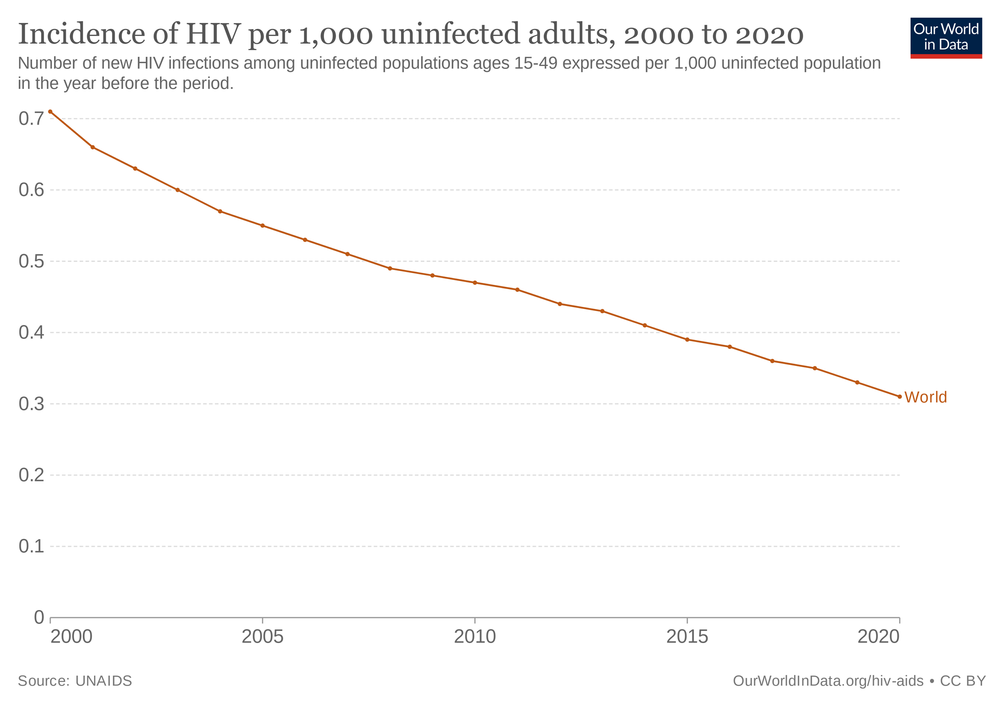
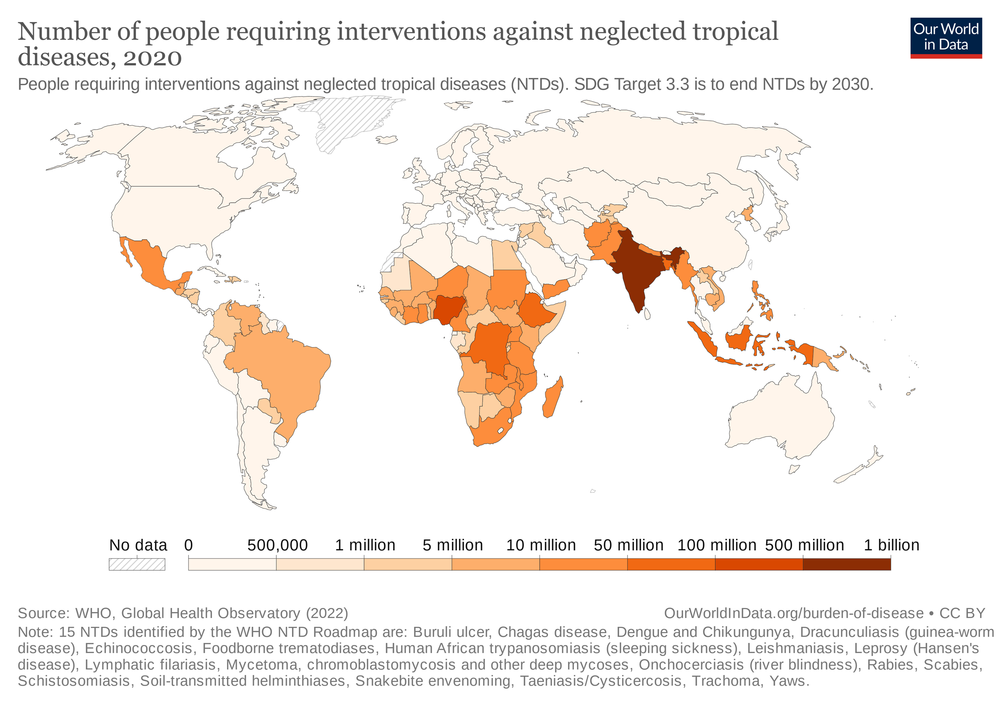
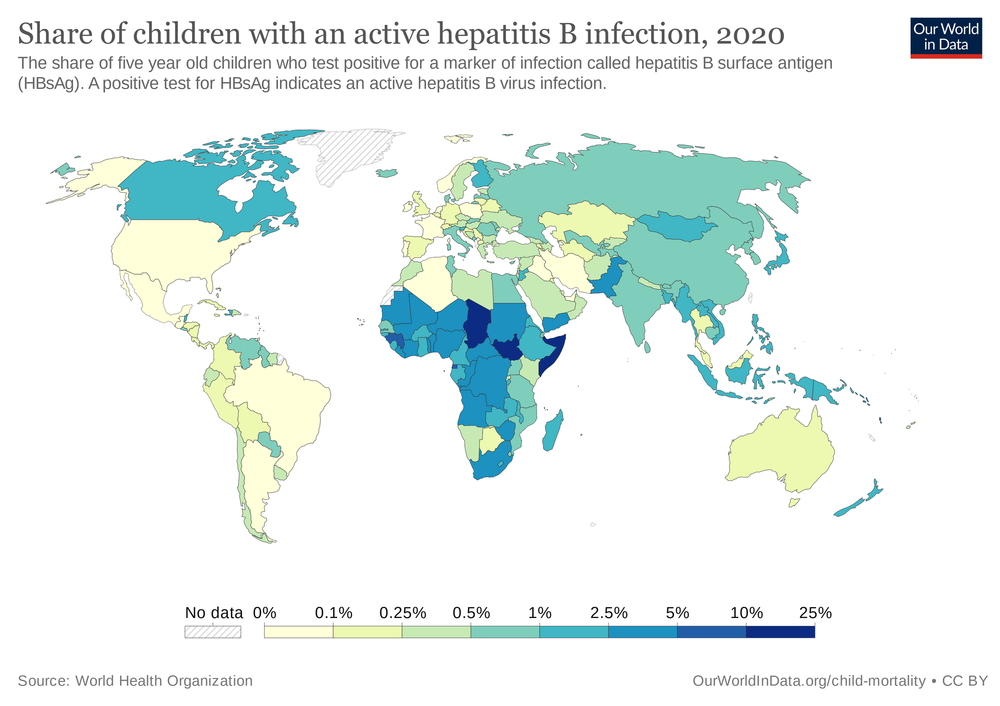
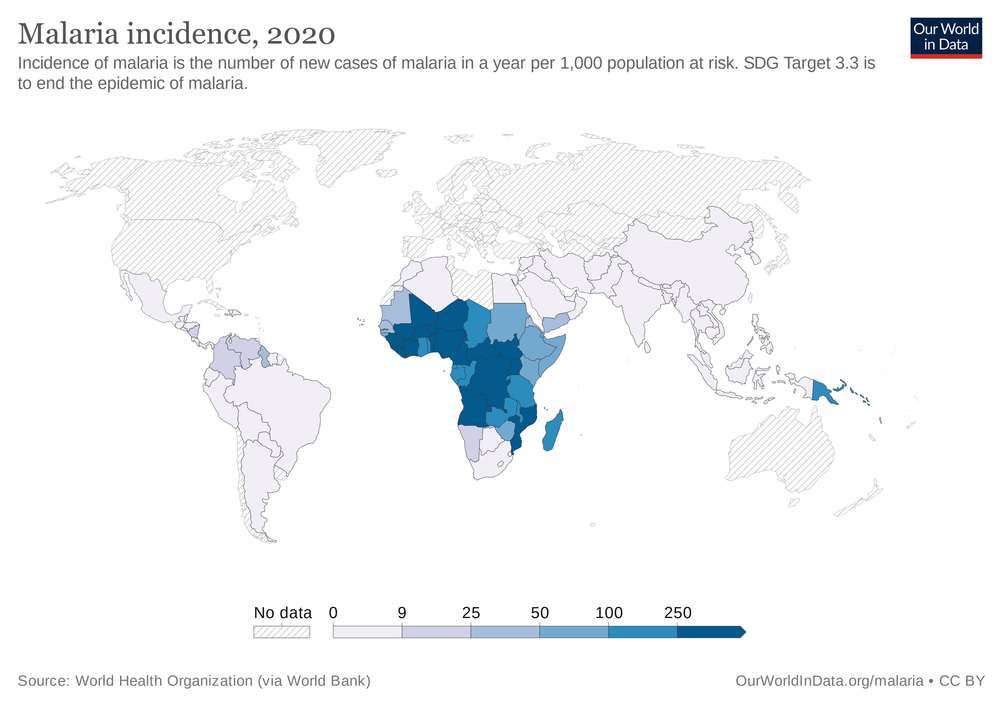
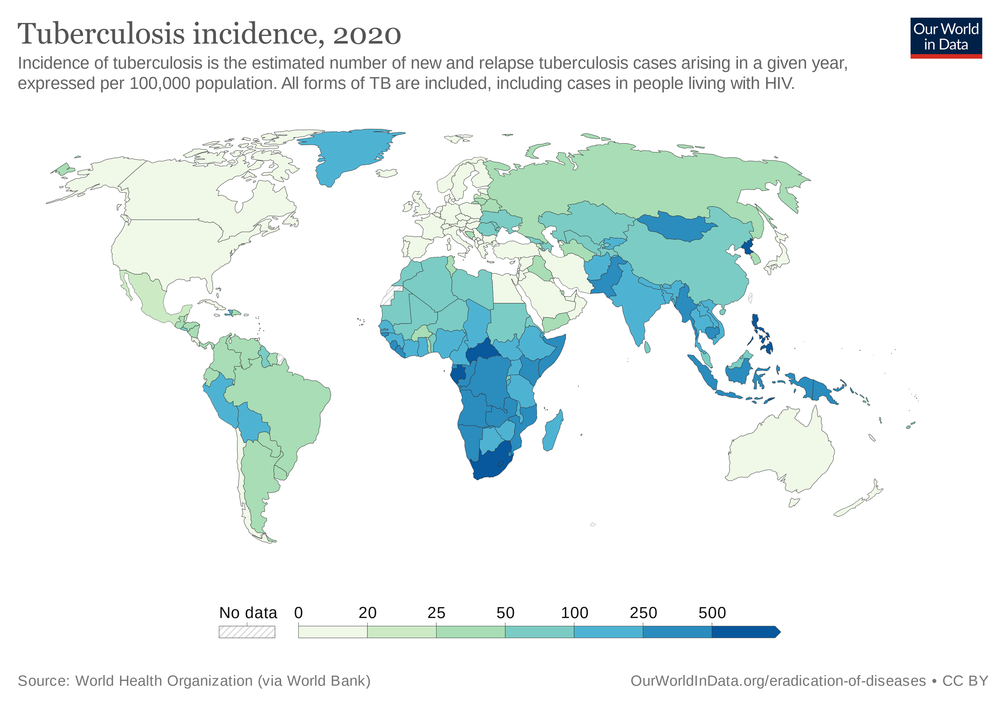
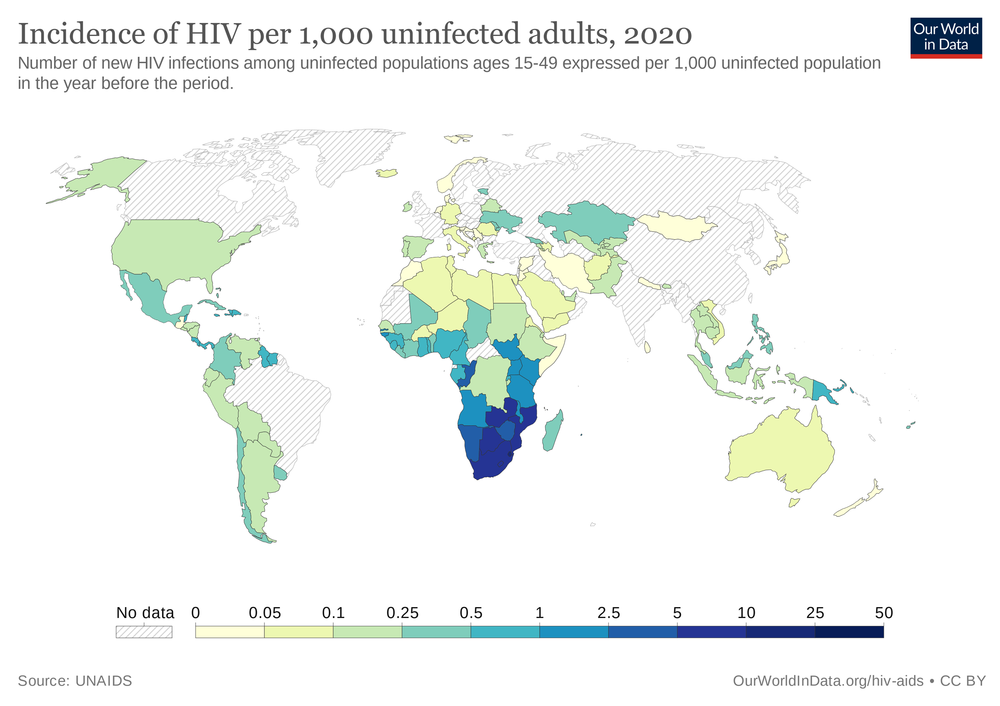
SDG Target #3.2

SDG #3 is to “To ensure healthy lives and promote well-being for all at all ages.”
Within SDG #3 are 13 targets, of which we here focus on Target 3.2:
By 2030, end preventable deaths of newborns and children under 5 years of age, with all countries aiming to reduce neonatal mortality to at least as low as 12 per 1,000 live births and under-5 mortality to at least as low as 25 per 1,000 live births
Target 3.2 has two indicators:
Indicator 3.2.1: Under‑5 mortality rate
Indicator 3.2.2: Neonatal mortality rate
The under-5 mortality rate measures the number of child deaths occurring in a given population for those under the age of 5, whereas the neonatal mortality rate measures the number of infant deaths in a population.
Both indicators measure within a population for every 1000 live births, therefore excluding fetuses which did not survive the perinatal period. The definition of neonates, or newborns, for the purposes of Indicator 3.2.2 is within the first 28 days of birth, after which, the death of a child older than 28 days, but less than 5-year-old, would fit into the definition of Indicator 3.2.1
Data used for these measures is reported by UNICEF, the UN agency for aid for children. The source of data and estimates for child mortality and stillbirth estimates is collected by United Nations Inter-agency Group for Child Mortality Estimation (IGME), led by UNICEF, but supported by the WHO, the World Bank and the UN Population Division. The data is collected from a combination of deaths registered by the relevant civil bodies in a country, as well as census data and household surveys of full birth history. A full birth history is a list of all children a woman has given birth to, including their date of birth, sex, whether the child survived, the child’s age, if they’re still alive, or the age of death if they died. Another measure, summary birth history, only asks mothers for the number of children ever born and the number who died. Adjustments are made in calculating the mortality rate in areas with high prevalence of HIV/AIDS, as mothers who’ve died from AIDS are unable to report on the mortality of their children.
As of 2020, the child mortality rate for the world is 36.6 deaths per 1000 live births, down from 42.6 in 2015, the adoption year of the SDGs, and from 93.2 in 1990, yet still short of the 2030 target of 25 deaths of children under-5 per 1000 live births.
For the neonatal mortality rate, with an aim of 12 neonatal deaths per 1000 live births by 2030, the 2020 neonatal rate is 17, down from 19.3 in 2015, and 36.7 in 1990.
SDG Target #3.1

SDG #3 is to “To ensure healthy lives and promote well-being for all at all ages.”
Within SDG #3 are 13 targets, of which we here focus on Target 3.1:
By 2030, reduce the global maternal mortality ratio to less than 70 per 100,000 live births.
Target 3.1 has two indicators:
Indicator 3.1.1: Maternal mortality ratio
Indicator 3.1.2: Proportion of births attended by skilled health personnel
The causes of maternal death are manifold. Many of the deaths relate to complications of the cardiovascular system of the blood vessels and the heart. These include postpartum bleeding, which can be treated with intravenous blood transfusion in countries and communities where healthcare coverage is sufficient to offer this.
Mothers can experience high blood pressure in their arteries as a result of the pregnancy, in some instances identified by proteinuria, an abundance of proteins found in the urine. High blood pressure accompanied by proteinuria may indicate a form of high blood pressure related to pregnancy known as pre-eclampsia.
Strokes are possible, whereby blood flow is unable to reach the brain in sufficient amounts, leading to the death of cells. Likewise, embolisms can form in the pulmonary artery, impeding the heart from sending blood toward the lungs.
Other reasons can include obstructed labour and unsafe abortions.
In countries with high prevalence of HIV/AIDS, this is the leading cause of death during pregnancy and postpartum.
Relevant to this, those countries with low GDP per capita are more likely to have less healthcare coverage, making poverty an obvious risk factor for maternal mortality. Another risk factor related to this is the fertility rate, reflecting a phenomenon whereby the birth rates of poor countries are higher because of the poverty trap. When compounded by low health care coverage in these countries, a high fertility rate, low levels of income and low health care coverage form a recipe for high maternal mortality rates.
In terms of prevention of maternal deaths, complications in the term of a pregnancy, childbirth and the postpartum period can be mitigated by the presence of skilled birth attendants, in communities where doctors specialised in obstetrics and gynaecology are absent.
Other worthwhile preventions are family planning methods and birth control, to prevent unwanted pregnancies putting a potential mother at risk of death.
Prenatal care can also act as a form of preventive healthcare
Healthcare coverage also tends to ensure an aseptic medical environment, free of pathogenic bacteria, viruses, fungi and parasites which cause septic infections in tissues from these pathogens
Complementing the existence of health care coverage are public health campaigns, which can promote preventive behaviours and mitigate the risks of maternal death.
The Millenium Development Goals, the UN goals which preceded the SDGs, had an entire goal devoted to maternal health. Millenium Development Goal #5 set the objective to improve maternal health. Target #5A of the MDGs corresponds with the SDG target we’re looking at here, focused upon the maternal mortality ratio. Target #5A was to “Reduce by three-quarters, between 1990 and 2015, the maternal mortality ratio”
In setting a global standard for diagnosing health issues, the World Health Organisation classifies diseases according to the International Statistical Classification of Diseases and Related Health Problems (ICD). According to this classification, maternal death is defined as deaths occurring whilst a mother is pregnant, or within 42 days following the termination of the pregnancy.
The most recent global data for maternal mortality ratio is from 2017, 211 maternal deaths per 100,000 live births, down only a little from the 2015 baseline of 219 per 100,000, and 342 per 100,000 from the start of the MDG period in 2000. To reach this target’s objective, we need to reduce this down to 70 maternal deaths per 100,000 live births by 2030.
To offer an example of a country which is on has achieved this target, and is on track to achieve SDG #3 overall, Australia had a maternal mortality ratio in 2020 of 5.5 deaths per 100,000, or the equivalent of 16 maternal deaths.
The proportion of births attended by skilled health attendants worldwide is 80% as of 2018, up from 62% in 2000.
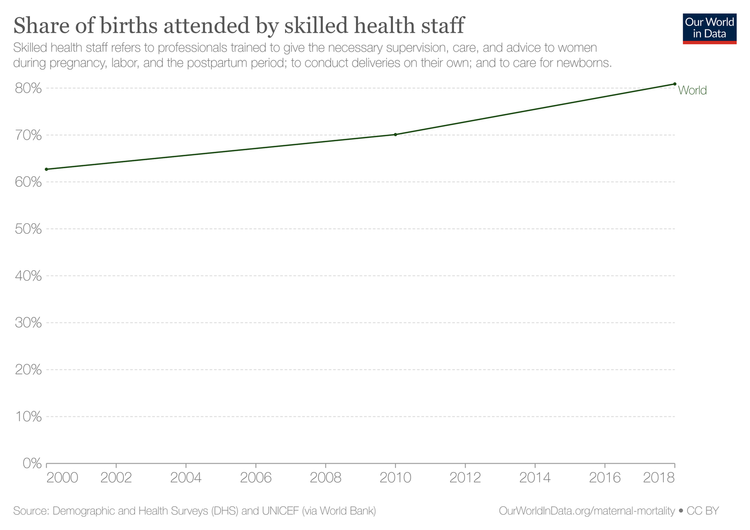
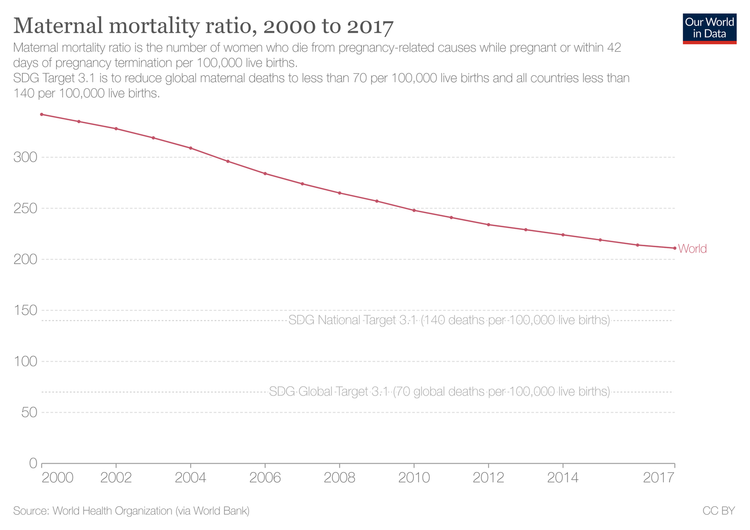
SDG Target #2.C

SDG #2 is to “End hunger, achieve food security and improved nutrition and promote sustainable agriculture”
Within SDG #2 are eight targets, of which we here focus on Target 2.c:
Adopt measures to ensure the proper functioning of food commodity markets and their derivatives and facilitate timely access to market information, including on food reserves, in order to help limit extreme food price volatility.
Target 2.c has a singular indicator:
Indicator 2.c.1: indicator of food price anomalies.
An indicator of food price anomalies is a measure of market prices which deviate much higher-than-normal prices. One of the means to measure this is via a consumer price index, or CPI. A CPI is a statistic measuring the inflation experienced by households, or the price changes of household expenditure. Within this, different categories of household expenditure can be broken down from the total, such as food expenditure.
At the international level, FAOSTAT, the statistical body of the UN’s Food and Agriculture Organisation (FAO) collects this data.
This responsibility is a function of Article I of the FAO Constitution, which calls on the FAO to “collect, analyse, interpret and disseminate information relating to nutrition, food and agriculture.”
The FAO uses the FPMA, or Food Price Monitoring and Analysis, a tool which holds information and analyses of consumer prices of basic foodstuffs over the years across developing countries. Thanks to such tools and data, this evidence can be used to help make political decisions about food and agriculture at the national and international level.

SDG Target #2.B

SDG #2 is to “End hunger, achieve food security and improved nutrition and promote sustainable agriculture”
Within SDG #2 are eight targets, of which we here focus on Target 2.b, which is:
Correct and prevent trade restrictions and distortions in world agricultural markets, including through the parallel elimination of all forms of agricultural export subsidies and all export measures with equivalent effect, in accordance with the mandate of the Doha Development Round.
Target 2.b has a singular indicator:
Indicator 2.b.1: agricultural export subsidies.
First of all, what is the Doha Development Round?
The Doha Development Round is a so-called round of negotiations within the World Trade Organisation, which began in 2001 at the WTO Ministerial Conference in Doha, the capital of Qatar, focused on the topic of lowering barriers to international trade. Whilst the WTO is an intergovernmental organisation, it is not part of the UN System.
WTO Ministerial Conferences were subsequently held in Cancun and Hong Kong, but the contentions hindering agreement between developed and developing countries, particularly around agriculture subsidies paid by governments to agribusinesses, has been a relative constant, and is currently at an impasse.
Trade in goods and services between countries is generally considered a good thing. But when countries adopt protectionist economic policies such as taxes on imports or exports, import quotas, or any other hindrance at customs, other countries may consider such policies to put themselves at a relative trade disadvantage, in terms of the effect such policies could have on farmers and consumers in their own country.
Not all countries are members of the WTO, though 164 of the UN Member States are WTO Members. Largely, the organisation exists with the purpose of members collectively lowering tariffs and trade barriers, for both goods, as well as services and intellectual property, as well as setting out the procedures for settling disputes, whilst allowing for special treatment for developing countries.
An important WTO treaty in the context of Target 2.b is the Agreement on Agriculture. This brings up another round of international trade negotiation, this one known as the Uruguay Round, under the aegis of the General Agreement on Tariffs & Trade, the forebear of the WTO.
The culmination of the Uruguay Round was the Marrakesh Agreement in Morocco, which established the WTO itself, as well as the Agreement on Agriculture was signed in April 1994.
It’s common for countries to support their domestic agriculture sectors, including subsidies for agricultural goods to be exported. In the jargon of Article 1 of the Agreement on Agriculture, this support is measured using the term the “Aggregate Measurement of Support”, for the annual monetary outlay in favour of an agricultural product. The idea is any support of income or price which boosts exports, or limits imports from another country, in a free trade environment, other countries are going to want to know why such support for the given product was necessary if they’re not to do likewise in their own countries.
By definition of the WTO’s Subsidies Agreement, subsidies are any benefits conferred by government in the forms of transferring funds or guaranteeing loans, tax credits, providing goods or services outside of infrastructure, or otherwise purchasing goods, as well as financing a body outside of government to emulate the aforementioned functions. Per the Subsidies Agreement, WTO members are not to use subsidies causing adverse effects to other members, in the form of “injury to the domestic industry of another member”, or “causing serious prejudice to their interests of another Member”. Under Article 6 of the Subsidies Agreement, this is deemed as subsidisation greater than 5% of its value, debt forgiveness, and covering losses of an industry or a business, with the exception of once-off instances.
Measuring the target of eliminating agricultural export subsidies by 2030, using data from the WTO, the world has reduced this amount to the equivalent of $58 million as of 2019, down from $217 million at the adoption the SDGs in 2015, and a height of $6.69 billion in 1999.

SDG Target #2.A

SDG #2 is to “End hunger, achieve food security and improved nutrition and promote sustainable agriculture”
Within SDG #2 are eight targets, of which we’ll here focus on Target 2.a, which is:
Increase investment, including through enhanced international cooperation, in rural infrastructure, agricultural research and extension services, technology development and plant and livestock gene banks in order to enhance agricultural productive capacity in developing countries, in particular least developed countries
Within target 2.a are two indicators:
Indicator 2.a.1: The agriculture orientation index for government expenditures.
Indicator 2.a.2: Total official flows (official development assistance plus other official flows) to the agriculture sector.
Investment in general is central to the SDGs, with the implication monetary or other value is allocated with the incentive of a future return, suggesting the intergenerational aspect of the concept of sustainable development.
For the world’s most vulnerable, it’s a far stretch for most of our imaginations to suspend the ubiquity of money and finance in our daily lives to consider the lives of those tilling the soil for subsistence, far-flung from markets. For these people in such communities, the importance of their assets used for their livelihood, and the appreciation of such capital, can be life or death. Whilst in the developed world, talk of investment may bring to mind corporate profits dispensed as dividends to shareholders, for small-scale farmers, investment can mean a hand on the bottom rung of the development ladder out of penury.
But government investment in agriculture needn’t necessarily be financial. It can come in the form of investments in physical capital, such as infrastructure. For a small-scale farmer in the developing world to participate in the economy, they must be connected with markets. If the farmer lives isolated from towns and cities to reach markets, they require roads and railways. To figure out if making the trip to market is worth the bother depending on prices they can fetch, they can save themselves travelling with access to telecommunications, and electric grids to power them. The importance of rural development also ties in with SDG #9 for Industry, Innovation and Infrastructure.
Aside from investing in physical capital, governments can invest in human capital, via education among other means. Amid the context of this goal, this means educating farmers, a practice known as agricultural extension. Cutting-edge techniques, skills and tools, and the fruit of science and knowledge can be imparted to farmers to better their yield and income, and more efficiently use inputs. The agricultural revolution was humanity’s first wave of technology after all, but in the modern era, its practice can still benefit from the internet and telecommunications to better participate in the global economy, and to better manage the environment.
Also of importance are gene banks, where specimens of DNA are kept in repositories. A type of gene bank for plants are seed banks, where seeds are kept as a means of protecting genetic biodiversity in agriculture. For animals, sperm and egg cells of species are kept frozen.
For much of the developing world working in the agriculture sector, shocks from exchange rates from distant lands, fickle to the impact upon developing country food prices, can ruin lives and livelihoods. These reasons make the importance of governments acting as public investors for their own agriculture sector all the more important, as what financial profit can a private investor expect to make upon an agricultural sector in a given country which is barely productive? This would be too risky for the investor, for the smallholder would be too likely to default on any financing received.
Therefore, low-income governments need an investment strategy for agricultural development due to its centrality to rural development and poverty alleviation, and as we’ll see, statistics are central to its successful implementation.
Looking closer at Indicator 2.a.1, the Agriculture Orientation Index (AOI) for Government Expenditures is defined as the portion of government spending toward agriculture, per the Classification of the Functions of Government, divided by agriculture’s contribution to the value-added share of a country’s GDP, according to the UN’s System of National Accounts. According to this definition, ‘agriculture’ includes the forestry, fishing and hunting sectors, per Section A of the UN’s International Standard Industrial Classification of All Economic Activities (ISIC), the classification of all economic activities. Also, according to this definition, government spending is considered to be all expenditure, as well as acquiring non-financial assets in support of the agricultural sector. The data to measure this indicator on government spending is collected by an annual questionnaire by the FAO, whilst the data on value-added agricultural output originates from national accounts.
Included in government spending on agriculture for the purposes of this indicator includes policies and programs on soil improvement and mitigating soil degradation, managing animal health, research on livestock and animal husbandry; research on marine and freshwater biology, and afforestation and forestry. This spending increases the agricultural sector’s productivity and income growth, as well as increasing capital, both human and physical. The public sector is able to fill this void, commonly receiving less investment than the private sector, with the markets failing to provide for income redistribution.
For Indicator 2.a.2, we return to the topic of ODA, which we explored in the video for Target 1.a. The wording of Indicator 2.a.2 also mentions ‘other official flows’, which in the jargon of the OECD are official transactions not meeting the criteria of ODA, either because they’re not aimed at financing sustainable development, or are not concessional.
The OECD’s Development Assistance Committee identifies what specific sectors a transfer to a recipient is intended to foster, with transfers for this indicator targeted to the purposes of the agricultural sector. The OECD maintains all this information in its Creditor Reporting System, to compare where aid from DAC member countries has gone, the purpose the donor intended to serve, and which policies were used to implement such intentions.
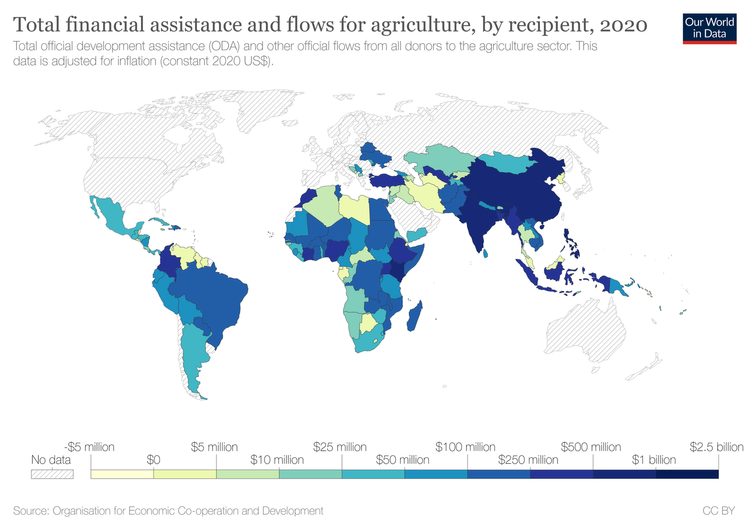
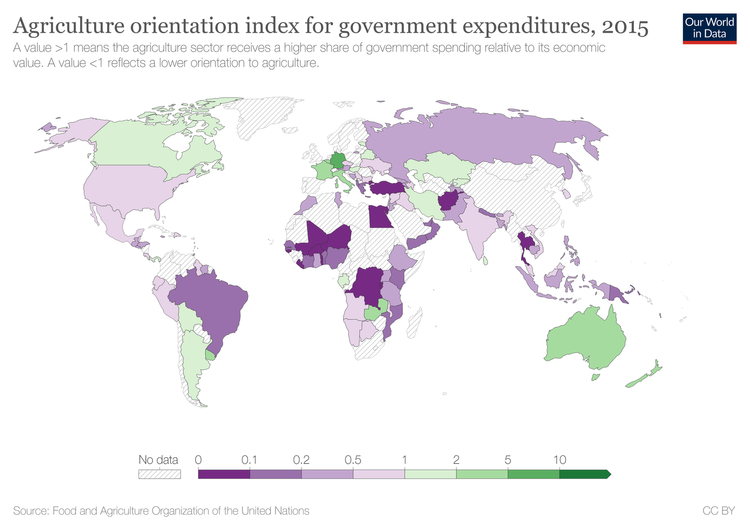
SDG Target #2.5

SDG #2 is to “End hunger, achieve food security and improved nutrition and promote sustainable agriculture”
Within SDG #2 are eight targets, of which we’ll here focus on Target 2.5:
By 2020, maintain the genetic diversity of seeds, cultivated plants and farmed and domesticated animals and their related wild species, including through soundly managed and diversified seed and plant banks at the national, regional and international levels, and promote access to and fair and equitable sharing of benefits arising from the utilization of genetic resources and associated traditional knowledge, as internationally agreed.
Within target 2.5 are two indicators:
Indicator 2.5.1: Number of (a) plant and (b) animal genetic resources for food and agriculture secured in either medium- or long-term conservation facilities.
Indicator 2.5.2: Proportion of local breeds classified as being at risk of extinction.
The UN agency overseeing the topic of genetic resources for food and agriculture is the Food and Agriculture Organization’s Commission on Genetic Resources for Food and Agriculture.
Much of this conservation occurs in gene banks, which are biological repositories of the DNA and RNA of life forms, which exist to maintain the diversity of genes of various lifeforms. One of the reasons for this is because biodiversity - explored in greater depth in Goals #14 and 15 - is necessary for food security, in line with the aims of Goal #2 to end hunger and ensure sustainable agriculture.
Genebanks maintain such samples outside their natural environment (or ex situ) rather than protected or managed on the farm (in situ). The FAO maintains two systems to help account for the genes maintained by gene banks, each system pertaining to the respective use of animals and plants for food and agriculture: the Domestic Animal Diversity Information System (DAD-IS) and the WIEWS (World Information and Early Warning System on Plant Genetic Resources for Food and Agriculture).
The management of plant genetic resources for food and agriculture is guided by International Treaty on Plant Genetic Resources for Food and Agriculture, a global treaty aiming to ensure food security, nature conservation, and the sustainability of plant genetic resources. This treaty is implemented via the Second Global Plan of Action for Plant Genetic Resources for Food and Agriculture, adopted by the FAO in 2011.
The corresponding agreement for animal genetic resources for food and agriculture is the Global Plan of Action for Animal Genetic Resources, adopted by the FAO Commission on Genetic Resources for Food and Agriculture in 2007, as well as the Convention on Biological Diversity.
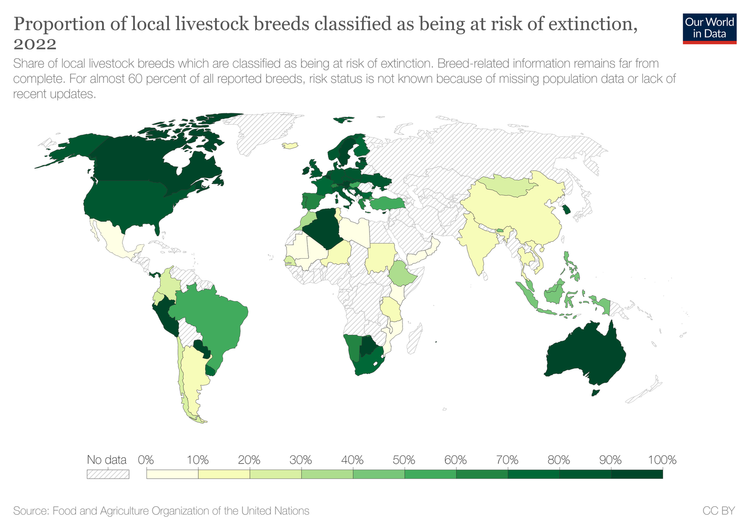
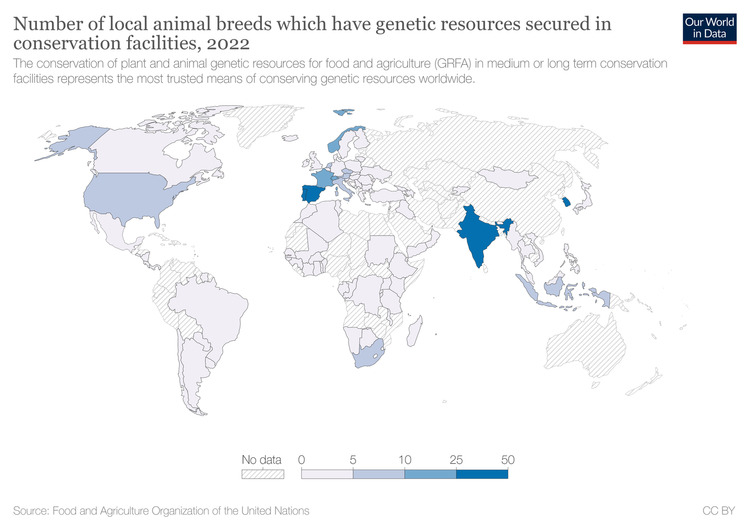

SDG Target #2.4

SDG #2 is to “End hunger, achieve food security and improved nutrition and promote sustainable agriculture”
Within SDG #2 are eight targets, of which we here focus on Target 2.4, which is:
By 2030, ensure sustainable food production systems and implement resilient agricultural practices that increase productivity and production, that help maintain ecosystems, that strengthen capacity for adaptation to climate change, extreme weather, drought, flooding and other disasters and that progressively improve land and soil quality.”
Within target 2.4 is a sole indicator:
Proportion of agricultural area under productive and sustainable agriculture.
We touched on the importance of the future of sustainable agriculture in an earlier SDG #2 target. It’s a complex issue, and very much sensitive to the varied unique agro-ecologies the world over.
Sustainable agriculture seeks to meet the challenges of scarce freshwater resources, erosion, surface runoff, salinisation, imbalances in the environmental cycles of nitrogen, phosphate and carbon, slash-and-burn practices clearing forests, using advanced techniques of irrigation and water efficiency, crop rotation.
Whilst not at scale, the practices of urban agriculture emphasise local food like roof gardens, community gardens, sharing gardens. Other concepts of importance include organic farming using natural manures and other techniques in contrast to synthetic fertilisers. Regenerative agriculture is another field receiving more attention recently for its emphasis on protecting biodiversity and ecosystems, a philosophy shared with the discipline of permaculture.
Standards and certification have also made recognising food grown sustainably easier for consumers, such as organic certification, the Rainforest Alliance and Fairtrade certification.
At a political level, the European Commission’s European Green Deal sets forth to make European food systems sustainable, whilst the US Department of Agriculture has historically been a driver of intensified agriculture, with attendant ills for human diet and ecological damage.
Sustainable food systems don’t just encompass how food is produced, but its distribution, with local food being environmentally better, as well as benefitting the sustainability of our diets and food loss and waste
In acknowledging the importance of agriculture’s relationship with ecosystems, climate change, extreme weather, drought, flooding and other disasters, we see SDG #2’s interplay with Goal’s 13 through 15 - all topics we’ll examine further in the targets within those respective goals.
Without agriculture our civilisation never could have reached the levels of population size nor prosperity many of us experience. Advances in agronomy have proffered more food, fuel and fibre for humankind. Examples are agrochemicals, pesticides to keep pests away from crops, fertilisers to provide plants the chemical nutrients they need to grow.
Yet agricultural practices do not come without an environmental impact. The welfare of animals beside humans is largely neglected or ignored. Agriculture has been, and continues to be a major drive of climate change, the practice itself in its current form a large greenhouse gas emitter.
The importance of forests to heading off climate change is widely understood, yet deforestation still occurs on a massive scale for the purposes of creating pasture for grazing.
Can our aquifers, which sustain our vital freshwater supplies contend with what agriculture draws from it, and pollutes it with? Will the degradation imposed on the land put us at greater risk of desertification, turning once healthy soil mixtures, supporting life itself, into drylands.
Can the environment handle what we take from it and feed into it, or are we risking the depletion of resources necessary for human survival? Are we risking the compromise of the quality of our air, water and soil - even entire ecosystems? Do our patterns put at peril the destruction of habitats, the extinction of species of wildlife, biodiversity loss and pollution at large? Is the production of animal feed for livestock an inefficient use of precious resources?
Have we placed ourselves higher on the food chain than is necessary to live healthy lives? Do we need to slaughter cattle, pigs and sheep? Do we need products from the milk of cows, buffaloes, goats and sheep? Do we need textiles derived from sheep, cashmere and mohair from goats and animal skins for clothing?
Both humans and animals are affected by the use of antibiotics, growth hormones and genetically engineered lifeforms in the meat and dairy industry.
We humans need fuel to work; raw materials to turn goods into products; grains, vegetables and oils for cooking.
Yet our policies around agriculture need to change, and we need to harness the science and economics of agriculture to be sustainable.
SDG Target #2.3
SDG #2 is to “End hunger, achieve food security and improved nutrition and promote sustainable agriculture”
Within SDG #2 are eight targets, of which this episode will focus on Target 2.3:
By 2030, double the agricultural productivity and incomes of small-scale food producers, in particular women, indigenous peoples, family farmers, pastoralists and fishers, including through secure and equal access to land, other productive resources and inputs, knowledge, financial services, markets and opportunities for value addition and non-farm employment.
Within target 2.3 are two indicators:
Indicator 2.3.1: The volume of production per labour unit by classes of farming/pastoral/forestry enterprise size.
Indicator 2.3.2: Average income of small-scale food producers, by sex and indigenous status.
Target 2.3 is the first target focusing on agriculture, an aspect of sustainable development perhaps undervalued for its impact on all facets of human life.
The cultivation of crops and rearing of livestock was not always inherent to human culture. It sprung forth when humans shifted from hunter-gatherer lifestyles, settling into the land in fixed civilisations, tilling the land to make it arable to sow seeds, and domesticating animals around them on farms, eventually producing crop harvests to a surplus level beyond mere subsistence.
In the modern era, agriculture has shifted from smallholding to industrialised farms, characterised by crop monocultures and animals selectively bred through science for the optimal traits, farming crops and animals intensively. The practice of animal husbandry of livestock produces commodities such as meat, milk, eggs and animal fibres like fur, leather and wool for human use.
So, while target 2.3 is asking us to double agricultural productivity and crop yield for the purposes of food security, we must do so sustainably, both in terms of the environment, but also economic inequality, mindful of the effects of the market value on the factors of production and outputs affecting those at the bottom distribution of wealth and income in society. Making this balancing act trickier is the trend of human overpopulation at unsustainable levels, predominantly in countries facing the most acute food security challenges.
In parallel, target 2.3 is asking the world to double the money received in exchange for the agricultural goods of farmers in each given country operating in the bottom 40% of land size in hectares, number of livestock, and revenue from agriculture.
In particular, it singles out women, indigenous people whose farms may have been historically compromised by settler colonialism, family farms, nomadic pastoralists tending herds of sheep or cattle and fishermen.
Quantifying this, within Indicator 2.3.1, is the volume of agricultural output of crops, livestock, fisheries and forestry per day of labour, measured in dollars.
The means of measurement are the FAO’s AGRISurvey, or the World Bank’s Integrated Surveys of Agriculture, a household survey financed by the Bill & Melinda Gates Foundation, as part of the broader Living Standards Measurement Study.
Another of the UN’s specialised agencies working toward the ends of this indicator is the International Fund for Agricultural Development, tasked with the financing of poverty and hunger in the rural areas of developing countries. The IFAD, in tandem with the FAO and World Bank have developed a system called RuLIS, or the Rural Livelihoods Information System to harmonise the household surveys on rural poverty.
The importance of this data is consistent with Article I of the FAO, outlining the organization’s functions, i.e. “Collect, analyse, interpret and disseminate information relating to nutrition, food and agriculture.”
Indicator 2.3.2 looks at a similar measure of smallholder agriculture incomes.
As is to be expected, small-scale farmers have produced lower output per day of labour in the SDG period than their larger counterparts, with larger producers earning two or three times the income of small-scale producers.
In addressing the disaggregation by sex of Indicator 2.3.2, male-led households have been achieving higher productivity and larger incomes than female-led households.
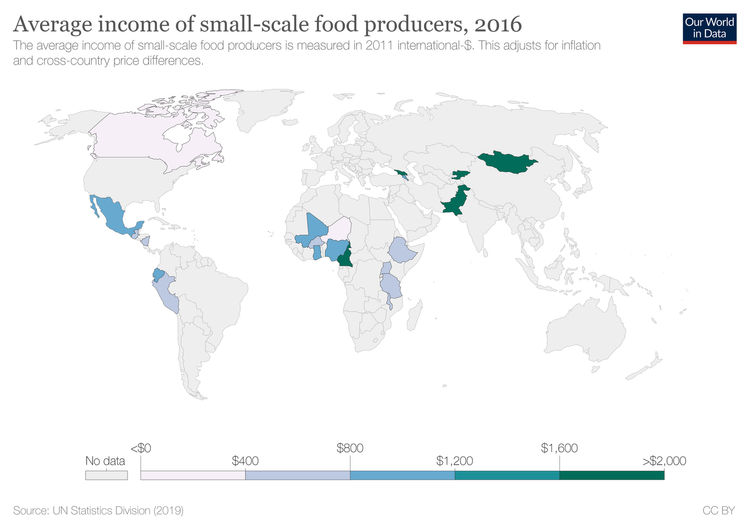
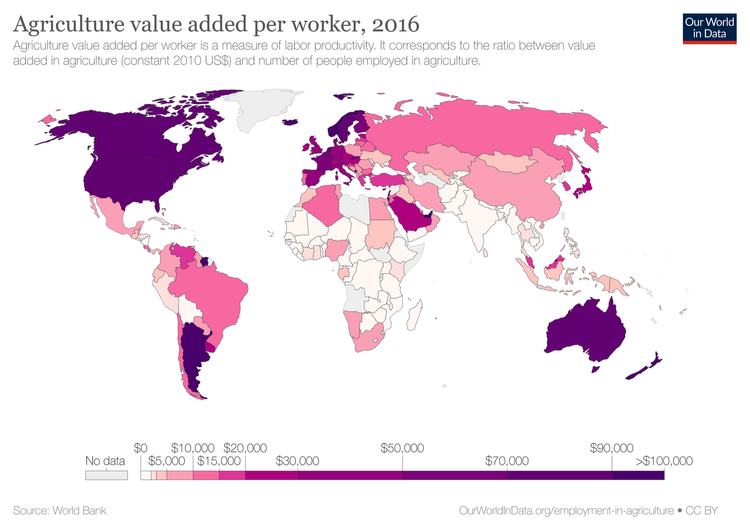
SDG Episode #6 - Guillaume Lafortune, SDSN
In this episode, we’re joined by Guillaume Lafortune, Vice President and director of the Paris office of the SDSN, the Sustainable Development Solutions Network, under the auspices of the UN. Guillaume also coordinates, and is a co-author, of the SDSN’s Sustainable Development Report, published each year since 2016
Dominic Billings: Guillaume, what was your path to your current career? I know that you studied Economics and Public Administration in Quebec. But what was your path to where you are now?
Guillaume Lafortune: Well as you said, Dominic, I’m an economist by training. I've always been also interested in public policies. I would say, at large. Did a very classic path from a school of public administration to entering government, the Ministry of Economic Development, in Quebec, Canada, working with small and medium enterprises, and trying to see how we can support them in scaling up, and including looking at international opportunities also abroad, Quebec being a small market. There's always this idea that it's important also for Quebec companies to be in touch with what's going on elsewhere in the world. So, both this sort of focus on economics, but also the international dimension, has always been sort of part of my background, and broad interest in public policies.
And then I think the other thread would be I’ve always been interested in doing research. But doing research that you can actually present to those that are eventually taking the decisions. That's why, for me, it was very good to enter, after my experience in government, to join the Organization for Economic Cooperation and Development (OECD) in Paris, where you do a lot of statistical analysis studies. But then you do present to the people in their governments, who are in charge of the respective portfolio? Whether it is about governance reform - I've worked quite a bit in the Public Governance department - but also, people in charge of the environmental portfolio in their country, education, health, and so on. You do present your studies to those that make decisions.
And finally, that's also the link with my current work at the Sustainable Development Solutions Network, since we are a network of scientists that try to establish this sort of link with policymakers, with the UN system. We've been the knowledge brokers between what science is saying we should do, some of the solutions that science can bring, and also what the UN System and national governments can do. So, this focus on science on one side, but also the direct connection with decision-making, has always been an important part, I would say, in my career.
Dominic Billings: You're one of the co-authors of the SDG Index - now titled the Sustainable Development Report. What was the story behind the formative stages of that? I know you collaborated with Guido Schmidt-Traub in particular, and Christian Kroll, one of the progenitors of the original. What was that process like in the very beginning for you?
Guillaume Lafortune: So, in a nutshell, what the SDG Index does is, every year we track the performance of all the UN Member states on the 17 Sustainable Development Goals. These are the goals that have been adopted by the international community, actually by all UN member states, back in 2015. We have to remember that this is the only comprehensive vision adopted internationally that looks at both social and economic progress, but also environment, climate, biodiversity and governance issues. So, it's a very comprehensive framework. There are 17 goals, 169 targets, and what we do at the SDSN, working of course with partners, is to look every year how countries are performing on those 17 SDGs. So, in terms of major stages, at the very beginning when we started doing this, there were really a lot of technical questions that needed to be resolved. Which indicators do you select? How do you aggregate across goals? How do you create an overall ranking, scoring and so on. So, we did quite a bit of work, both internally, but also in making sure that we were getting the necessary external checks to ensure that was scientifically robust
So, we were peer reviewed by Nature Geoscience, Cambridge University Press, but also, we got in touch with the European Commission, and said, “Could you do a statistical audit of that report, because we really want to make sure that we're doing this right?” And also, that effort of comparing our results, via-a-vis other assessments that are being done by other organizations to really understand why, for certain Goals, our assessment was slightly different than what the OECD is presenting, or what Eurostat is presenting, for instance. So, the first step was really to make sure we were doing it right, and now the methodology is stable - we've been doing this since 2016-2017, so it's been a couple of additions now - it's really about how do we connect the findings with policy messages and the broader discussions around “How do we finance this agenda?”. One illustration of that second phase is we move from the report, which was called the ‘SDG Index’, to a report which is now called the ‘Sustainable Development Report’, because there is more than SDG Index. The Index remains the backbone, but there's much more policy discussions and sections.
Dominic Billings: How do you feel about the progress of the SDGs? The data and the report speak for itself, but on a personal level, how do you feel?
Guillaume Lafortune: Well, first of all, I continue to think that it is an incredible idea. This idea that we establish goals for humanity as a whole, that called for eradicating extreme poverty; hunger; access to social protection; healthcare and education for all; fight against income and wealth inequalities; access to water and sanitation, and then also move towards responsible consumption and production; climate action, and then strengthening institutions and international partnerships. I continue to think that this is an incredible idea, and it's the first time in human history that we were able to agree on a common set of goals.
Despite differences in cultures, history and approaches to economic and public policy, all governments around the world managed to say “These are goals we should all be pursuing”. I really hope that this idea of goal-based development can continue. Obviously, now we should maintain our effort to try to do major breakthroughs on this Agenda until 2030. But then beyond 2030, I think it will be very important to also have an agenda that continues this sort of goal-based development.
In terms of how the world is doing on the Sustainable Development Goals, it's very clear that the multiple crises we've been facing - from COVID-19, geopolitical tensions, security crises, now inflation, probably recession in many parts of the world, which is to come, budget pressures - these led to major setbacks and reversal in SDG progress. So, we were seeing overall, from the moment the SDGs were adopted to 2019, the world was making progress year-on-year. The overall SDG Index was progressing year-on-year until 2019, which was notably led by progress in some of the countries and regions in the world that were starting from very low points on the SDGs. So major progress in terms of fighting extreme poverty, for instance. But also access to basic infrastructure and services as well. Even before COVID-19 hit, we were still saying progress was too slow, certain Goals were not moving in the right direction, and there were major disparities across countries. But on average, the world was progressing on this Agenda. Since 2020, worldwide, we do not see any more progress on this agenda.
It's stagnated and even reversed in progress in many parts of the world. What's a little bit sad is that reversal in progress is happening in particular in countries that are poor and vulnerable, and did not have the ability, for instance during COVID-19, to mobilize large amounts of money to finance the urgent expenditure related to the pandemic - but also, those recovery plans, as we have been able to do in a lot of the high-income countries. That's why all those international summits have happened -we're right after COP 27, there was an important G20 meeting also a few days ago - but also, we're heading towards a Heads of State Summit on the SDGs in September 2023.
These are all very important to recognise where we've made progress since 2015 - because we're at halftime now in this agenda. But also come up with solutions and renewed commitments on how we are going to restore and accelerate SDG progress over the next couple years?
Dominic Billings: You mentioned what was the ‘SDG Index’ is now been expanded to the ‘Sustainable Development Report’, and one of the features of the most recent report was financing, and another was spillover effects, of which the SDSN, with you as co-author, have published many reports, including as recent as this week
What about spillover effects requires the focus you’ve given it?
Guillaume Lafortune: The basic idea behind the spillover effects is, if we consider the SDGs as a global responsibility, and if countries aim to decarbonise their energy system and move towards more responsible consumption and production, the decarbonisation effort should not be achieved by outsourcing high-emitting sectors - whether it's cement or steel - to another country, and then re-importing production, so the emissions happen outside of our borders.
So, on paper, everything looks good. We're” moving forward” in terms of decarbonising our economy, but in terms of overall carbon emissions, these are being outsourced and they happen elsewhere. The idea behind spillover effects - to capture those impacts embodied into trade and consumption. There are other types of spillover effects - for instance, financial flows and financial spillovers e.g., tax evasion, profit shifting, unfair tax competition, that can undermine the ability of other countries to mobilize resources to, to move towards those Goals.
And so, as you said, Dominic, at the SDSN, we've always considered integrating those spillover effects. Again, considering the SDGs are a global responsibility, and it makes no difference for climate change whether greenhouse gas emissions are generated within a country’s borders, or in another country for satisfying production.
And by the way, that explains also why our results can sometimes be different from other assessments, because we include those types of indicators. On the spillover aspect, it's not only about environmental spillovers, but increasingly we also document deforestation embodied in our consumption. We also look at how much consumption, especially in rich countries, is leading to resource depletion, including water scarcity, in the rest of the world - but also social impacts. So, we're able to track now that each year, through the consumption of textile products, there's about 400 people that die in the world to satisfy the European Union's consumption of textile, and more than 20,000 people that have non-fatal accidents at work. We released a study earlier this week where we've identified that each year European consumption is associated with 1.2 million cases of forced labor around the world.
And we did a deep dive into fossil fuels and mineral materials, which is one of the supply chains where those impacts happen. So, the point here is to say, we need to track the effect we have through consumption, and we also need to adopt policies to curb those spillover effects and work with partner countries so we reduce our global footprint from consumption.
Dominic Billings: You mentioned the recent UNFCCC COP in Sharm El Sheik, but I know you’re going to the Convention on Biological Diversity in Montreal. The Paris Agreement and the UNFCCC is enmeshed as part of SDG 13, but the ethos of the Convention on Biological Diversity underpins SDG 14 and 15. How do you feel about the outcome of COP 27 in Sharm El Sheikh, and how do you feel about the forthcoming CBD COP in Montreal?
Guillaume Lafortune: On the COP in Egypt, the outcome is mixed. On the positive side, there's been quite a good breakthrough when it comes to recognizing some of the historical responsibilities, in terms of emissions for climate change, and the fact we need to move into a financial mechanism to share more fairly globally, the costs of losses and damages related to natural and climate events. But also, the costs of adapting infrastructure especially, so the most vulnerable countries that are often not responsible for climate change, can finance losses and damages and adaptation. So, at least the political consensus that emerged this year is a move in the right direction. The major aspect where we're not seeing enough progress is commitments, pledges and trajectories on the mitigation side, in terms of accelerating the decarbonization of the production system and economies globally.
So that remains an important loophole, and it's becoming, you know, harder and harder to stick to that 1.5-degree objective, as part of the Paris Climate Agreement. But on the biodiversity side, it's also really important. On the climate side, we have the Paris Climate Agreement - a global target has helped to mobilize actions, energy and momentum around that goal.
The fact that we don't have the equivalent of a Paris Climate Agreement for biodiversity might explain why we're still a little bit lagging behind when it comes to global actions on biodiversity. The numbers are terrible when it comes to biodiversity loss, deforestation, and so on. To give a very practical example, when we look at the bees, 70% of what we eat requires pollination. So, as we see the number of bees dropping, there's a real question around, “What are we gonna do?” This is where I'm not sure innovation and progress - for instance, replacing bees with drones - will really help us out. It's really an issue around how do we prevent this from happening, and how do we also put a price on the natural services that nature is providing?
So, there's big discussions right now around pricing the natural services. But beyond that, I really hope Montreal can become for biodiversity what Paris has been for climate.
So big hopes for the biodiversity conference in Montreal, and it's very important, because we see it every year when you do the SDG Index. The biodiversity indicators are really not moving in the right direction at all.
Dominic Billings: Guillaume, on a personal level, if you trace your life from maybe the beginning of your tertiary education through to now, what's driven you? What's brought you to where you are now a person?
Guillaume Lafortune: I've always wanted to try to work for the common good. At least do my best to do something that has a positive impact on the world. Now I have two kids - they're very young, a small baby and a four-year-old - but in 10 or 15 years, when I’ll be explaining to them what I'm doing professionally, I'll be able to demonstrate or show them I've done my best.
So, they can live in a world where you have opportunities, you are safe. You're not being hit by droughts and heat waves and natural disasters all the time. We live in a world where there's partnerships, where the multilateral system is able to address some of the challenges of our time. So, all of those things, in my view, can help, and address those big challenges. My hope is to have a positive impact by making that connection between what science and data evidence tells us.
This is important, in this post-truth era, and fake news and so on, to try to have groups of people and networks of scientists, that can try to bring the evidence to the policymakers, and then see how we can move forward on those Sustainable Development Goals.
Dominic Billings: Thank you so much, Guillaume, for your time - so appreciative. I feel like both yourself and the co-authors of the Sustainable Development Report in particular have done as much for sustainable development, and the SDGs, then anyone.
Guillaume Lafortune: Thank you very much, Dominic.
SDG Episode #5 - Mick Hase - SEVENTEENx
In this episode, we’re joined by Mick Hase, founder of SEVENTEENx.
SEVENTEENx are speaking events championing the SDGs to educate, engage and enable the business community to change the way of business, drawing on Mick’s own expertise as a business coach and management consultant, as well as an entrepreneur himself.
Inspiring change-makers from each city SEVENTEENx holds events has the opportunity, for 17 minutes each, to tell their story of impact and social outcomes relating to one of the SDGs, along with a Q&A panel of all speakers.
On November 10, the first SEVENTEENx event since the start of 2020 will be held, both live in Brisbane at QUT Business School, as well as online. Tickets can be found at the SEVENTEENx website.
Additionally, Mick Hase has his own podcast, titled ‘SEVENTEENx’, which you listen and subscribe to on Spotify and most podcast platforms.
SDG Target #2.2
Sustainable Development Goal #2 is to end hunger, achieve food security and improved nutrition and promote sustainable agriculture.
Within SDG #2 are eight targets, of which this episode will focus on Target 2.2:
By 2030, end all forms of malnutrition, including achieving, by 2025, the internationally agreed targets on stunting and wasting in children under 5 years of age, and address the nutritional needs of adolescent girls, pregnant and lactating women and older persons.
Within target 2.2 are three indicators:
Indicator 2.2.1: Prevalence of stunting (height for age <-2 standard deviation from the median of the World Health Organization (WHO) Child Growth Standards) among children under 5 years of age.
Indicator 2.2.2: Prevalence of malnutrition (weight for height >+2 or <-2 standard deviation from the median of the WHO Child Growth Standards) among children under 5 years of age, by type (wasting and overweight).
Indicator 2.2.3: Prevalence of anaemia in women aged 15 to 49 years, by pregnancy status (percentage).
We looked at the definition of malnutrition in the previous target. Stunting is the prevention of the development of height in a child due to malnutrition, often caused by diarrhea or infection by parasitic worms from living in conditions characterised by unsanitary drinking water, open defecation in the absence of toilets and sewage systems.
Wasting means the progressive loss of muscle and fat tissues.
The nutritional necessities of adolescent girls, pregnant and lactating women are addressed in this target, whereby upon ingestion of food to the digestion system of our organs, not all vitamins and minerals are successfully absorbed into our blood.
Indicator 2.2.1 is the first mention so far of the World Health Organisation, which the world’s come to know more familiarly with the COVID-19 pandemic. The unit of measurement for this indicator is for each year of age below 5, a ratio of height to weight assessing if stunting has occurred, with the global aim of zero stunting.
Whereas Indicator 2.2.1 measured stunting by 2 standard deviations from the median of the WHO Child Growth Standards for height, Indicator 2.2.2 measures 2 standard deviations from weight - both underweight, in the form of wasting, and overweight, in the form of childhood obesity. Again, the objective for this indicator is zero prevalence by 2030.
Of note is within the UN process of selection, a target or indicator for the prevalence of adult obesity was omitted, meaning a body mass index greater than or equal to 3.0.
Indicator 2.2.3 focuses on anemia, a treatable condition whereby lab testing reveals an individual's blood is below a certain value of hemoglobin, often due to iron deficiency, disallowing the normal functioning of blood, the brain and muscles, and often compounded by deficiencies of other nutrients.
For the purposes of this indicator, the measure is the portion of women aged 15-49 years old with a concentration of hemoglobin below 110 grams per litre for pregnant women, and 120 grams per litre for the remainder, including lactating women.
This hinders one’s ability to productively work, thus to earn income, as well as academic performance for children, which has flow-on effects into adulthood. Research demonstrates the efficacy of treating anemia with iron supplements to remedy the effects on childhood development.
Furthermore, alongside children, women of reproductive age disproportionately experience anemia, largely from menstruation. Thus, women ought to be targeted for anemia treatment for the benefit of furthering gender equality via academic performance and workplace productivity
In regard to anemia’s role in maternal and newborn health, the condition carries with it a greater risk of death for the mother, as well as the child either before or after the birth.
With the target of elimination of stunting and wasting, 149.2 million children under 5, or 22 percent of all children, suffer from stunting (low height for age), down a quarter from 2015.
7 per cent, or 45.4 million children under 5 suffered from wasting, and a similar amount were overweight. It’s anticipated perhaps 15 percent more children will experience wasting due to the current pandemic.
As of 2019, 30 percent of non-pregnant women of reproductive age suffered from anemia, with pregnant women reporting 7 percentage points higher, with the highest portion seen in South Asia and Central Asia, at close to half of all reproductive age women.
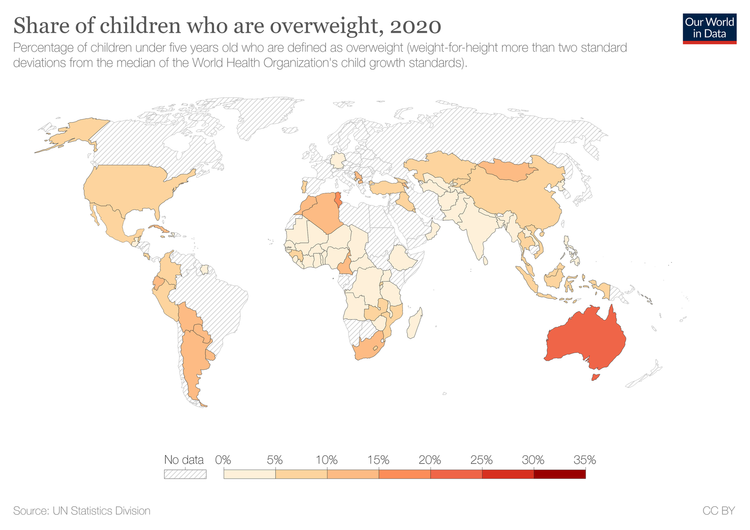
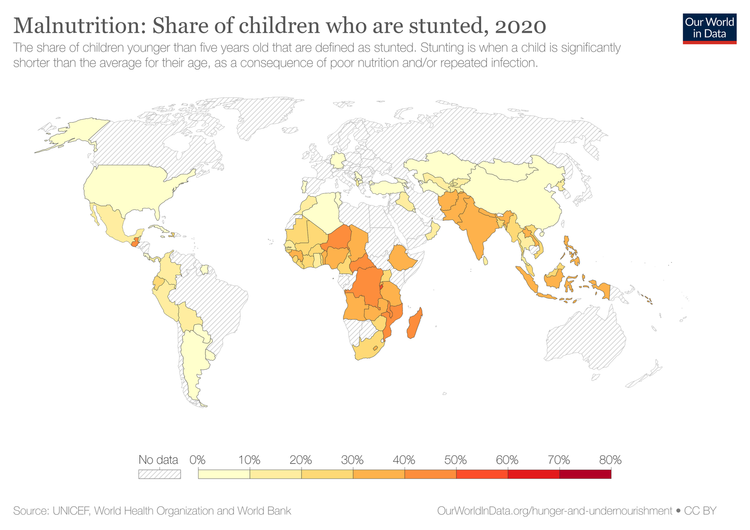
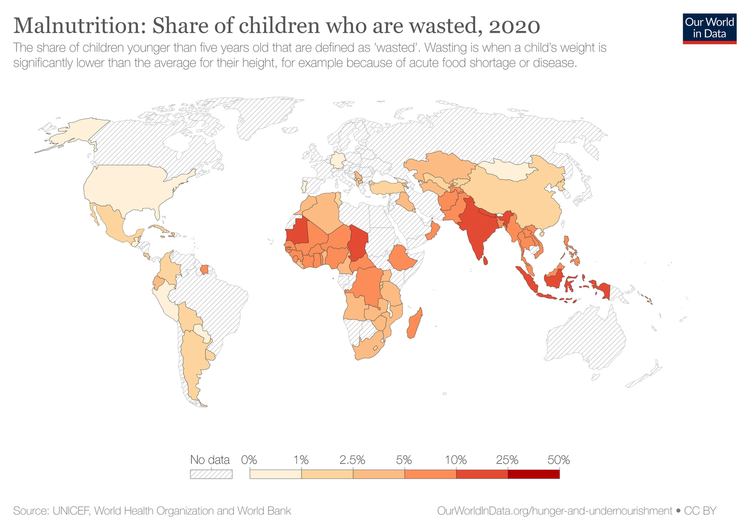
SDG Target #2.1
Sustainable Development Goal #2 is to end hunger, achieve food security and improved nutrition and promote sustainable agriculture
Within SDG #2 are eight targets, of which this episode will focus on Target 2.1:
By 2030, end hunger and ensure access by all people, in particular the poor and people in vulnerable situations, including infants, to safe, nutritious and sufficient food all year round.
SDG #2 flowing on from SDG #1 implies the obvious interrelationship between poverty and hunger, with the poor most sensitive to fluctuations of food prices.
Target 2.1 flows on from target 1.C of the Millenium Development Goals, which was to “halve, between 1990 and 2015, the proportion of people who suffer from hunger.”
This target was met, but left 795 million people undernourished, including 90 million children under the age of 5.
Within target 2.1 are two indicators:
Indicator 2.1.1: Prevalence of undernourishment.
Indicator 2.1.2: Prevalence of moderate or severe food insecurity in the population, based on the Food Insecurity Experience Scale.
Hunger, in the context of sustainable development, is obviously differentiated from the sensation of being less than satiated. In the context we’re looking at, it is the global leading cause of death. It is to be unable to meet the essential nutrients humans require to sustain healthful lives over a long period of time.
Dismayingly, the global areas most vulnerable to acute hunger are those experiencing wars, pandemics and extreme weather.
Looking closer at the concept of undernourishment underpinning Indicator 2.1.1, undernourishment is a diet with insufficient nutrients. By this we mean calories providing us energy, but also the right biochemical combination to allow for proper metabolism, in the form of proteins, carbohydrates, fat, vitamins and minerals. Tragically, at the most extreme end of undernourishment is starvation.
Also worthy of mention is the more specific instance of micronutrient deficiency, whereby an individual is experiencing undernourishment of a particular vitamin or mineral necessary for healthy functioning.
Target 2.1 specifically mentions infants, as nutrition during pregnancy can affect the gestating baby for life, highlighting also the importance of breastfeeding for newborn’s nutrition.
Many of us are familiar with the heart-rending images of starving children displaying the hallmarks of malnutrition in the poorest parts of the world. The medical term, marasmus, is often characterised by the wasted mass of emaciation for overall energy deficiency. For children no longer nursing with the proteins of breast milk, and have instead moved to a diet of starchy carbohydrates with little other nutritional value, we recognise the symptom of distended abdomens, caused by swelling of fluid retention and a liver overwhelmed with fatty deposits. This condition, termed kwashiorkor, is caused by sufficient calories, but protein deficiency. In the following target, we’ll also look at the high prevalence of stunting, caused by undernutrition.
In subsequent SDG #2 targets, we’ll also look at the role of agriculture, particularly sustainable agriculture, to feed a global population approaching a trajectory of 9-10 billion without abutting the planetary boundaries, as well as the systems for which food is produced and distributed.
Despite the prevalence of malnutrition as described being overwhelmingly associated with the developing world, some developing countries are beginning to see another form of malnutrition far more common in the developed world: the inverse of undernourishment - overnutrition, overeating and obesity.
Development aid, from the developed countries to the developing world, is a clear remedy to preventing and reducing undernourishment in the form of dietary supplements, food fortification to enrich foods with micronutrients, and other forms of food aid.
Aid is also required for developing countries to provide medical care for those in critically ill conditions requiring intensive care for undernourishment, perhaps compounded by an infectious disease.
Furthermore, aid can assist the development of sanitation systems to ensure drinking water and sewage do not mix, which can lead to infectious diseases causing undernourishment. This can again be compounded by undernourishment leading to dehydration, further exacerbated if the drinking water isn’t sanitary, and contaminated by infectious pathogens.
To meet the definition of undernourishment for the purposes of Indicator 2.1.1, using household surveys, we’re looking at regularly not having access to food sufficient to provide the energy for a normal, healthy and active life, given their own dietary energy requirement.
Often due to the geographical isolation, hunger acutely affects the most vulnerable regions of the world, represented by the UN’s list of least developed countries, landlocked developing countries, and small island developing countries.
Food insecurity, the focus of Indicator 2.1.2, is the ability of households and individuals to access food. It measures the percentage of individuals in the population who have experienced food insecurity at moderate or severe levels in the period of the SDGs. It’s measurement tool, the Food Insecurity Experience Scale, is a survey of 8 questions.
With the aim by 2030 to achieve zero hunger as part of SDG #2, as of 2020, a tenth of the global population, equivalent to 811 million, experienced hunger and was undernourished. Tragically, the World Food Program, the food aid branch of the UN, has estimated that due to the effects of COVID-19, the number of people suffering acute hunger may have doubled by the end of 2020. COVID-19 may also have pushed between 83 and 132 million into chronic hunger.
Though the trend of hunger experienced globally had been steadily decreasing, since 2015, when the SDGs were adopted, the UN’s agency focused on alleviating hunger and ensuring food security, named the Food and Agriculture Organisation, or FAO, has identified the total number of those living in a state of hunger has risen, predominantly in Africa and South America, with the main culprits being climate, conflict and recessions.
An estimated 2 billion people, or a quarter of the global population, experienced moderate or severe food insecurity in 2019, up several percent since 2015. Much of the increase came from Latin America and the Caribbean, though the largest numbers remained in sub-Saharan Africa.
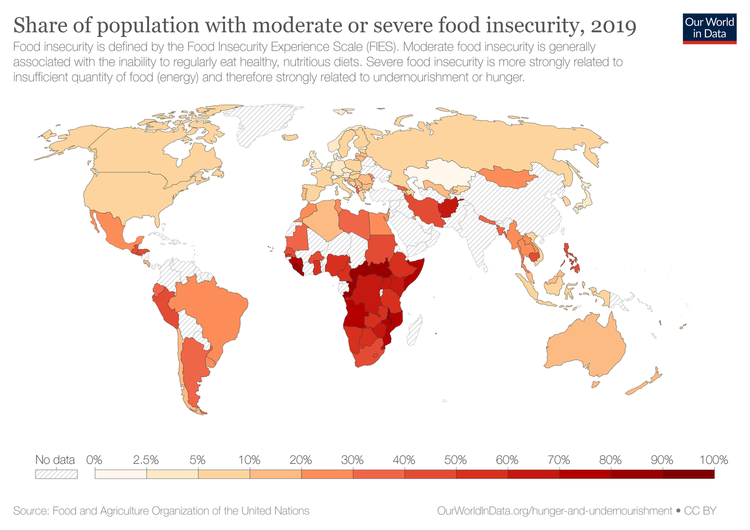
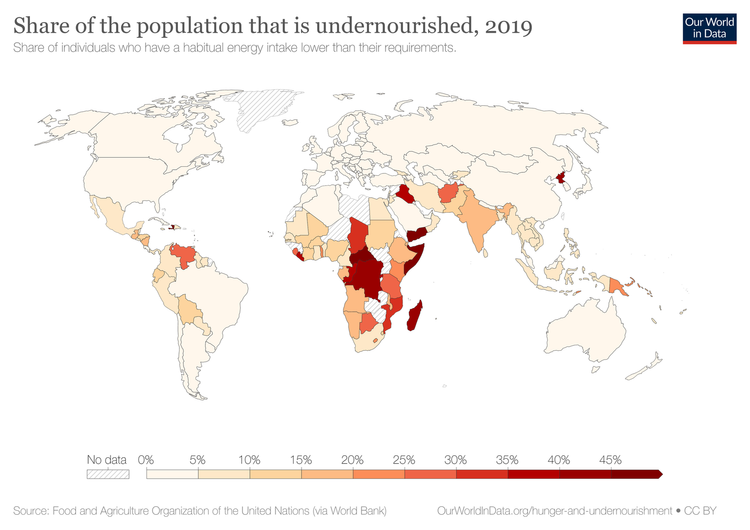
SDG Target 1.B
Sustainable Development Goal #1 is to end poverty in all its forms everywhere.
Within SDG #1 are 7 targets, of which this episode will focus on Target 1.b, which is:
Create sound policy frameworks at the national, regional and international levels, based on pro-poor and gender-sensitive development strategies, to support accelerated investment in poverty eradication actions.
To measure target 1.b, there is only one indicator, 1.b.1:
Pro-poor public social spending
Pro-poor is a term from the jargon of development studies meaning policies targeting the poor and poverty reduction.
Gender-sensitivity is a term surrounding efforts to create awareness around how the notion of gender, and gender roles affect our behaviours, and modifying them, if necessary, to engender a better sense of equality.
Similar to an indicator reference in the previous target, Indicator 1.b.1 is defined as the share of government expenditure on health, education and cash transfers for the direct benefit of those living below each respective country’s poverty line, which we explored in Target 1.2.
These measures of health, education and transfer payments are used to measure the Target 1.b as these three areas are key to poverty alleviation, and evaluates whether governments are focusing spending on the poor.
To best measure Target 1.b’s wording of ‘policy at the national, regional and international level’, Indicator 1.b.2 can be disaggregated at each of these levels where the data exists.
In 2019, the 30 developed country donors of the Development Assistance Committee spent only 0.2 percent of their collective gross national income in aid toward basic social services and food aid for the intention for poverty reduction, far below the 0.7% of gross national income continually committed by these countries across decades, though ongoingly reneged upon.
Dismayingly, in 2020, the only exceptions among the DAC members to meet or exceed the 0.7% commitment were the Scandinavian countries of Denmark, Sweden and Norway, as well as the small country of Luxembourg, and the UK. Further disappointingly, the UK has announced they will no longer meet the 0.7% measure from 2021, flouting a UK law enshrining this commitment.
SDG Target #1.A
Sustainable Development Goal #1 is to end poverty in all its forms everywhere.
Within SDG #1 are 7 targets, of which this episode will focus on Target 1.a, which is:
Ensure significant mobilization of resources from a variety of sources, including through enhanced development cooperation, in order to provide adequate and predictable means for developing countries, in particular least developed countries, to implement programmes and policies to end poverty in all its dimensions.
Target 1.a is the first example of a target designated by letters, rather than the previous targets’ designation by numbers (for example, 1.1 and 1.2). For all the SDGs, number-designated targets measure outcomes, whereas letter-designated targets represent means of implementation.
To measure target 1.a, there are two indicators:
Indicator 1.a.1: Total official development assistance grants from all donors that focus on poverty reduction as a share of the recipient country’s gross national income.
Indicator 1.a.2: Proportion of total government spending on essential services (education, health and social protection).
Indicator 1.a.1 focuses upon the concept of official development assistance, or ODA, synonymous with international aid.
The aim of development aid is to improve the economic and social development of humans living in countries which have not yet fully industrialised and are therefore considered ‘developing’ in the parlance of the field of international development.
The degree to which a country is ‘developing’ is often defined by a country’s score in the Human Development Index, a composite measure of life expectancy, education, and per capita income.
Separate, though entwined, to development aid, is humanitarian aid, more synonymous with logistical assistance in the face of disaster or conflict.
Official development assistance (ODA) is a concept defined in 1969 by the Development Assistance Committee of the OECD, or Organisation of Economic Cooperation and Development.
The OECD, headquartered in Paris, France, is an international organisation of 38 member states, predominantly developed countries, with a focus on economic policies.
The Development Assistance Committee, or DAC, consists of 30 OECD members, constituting the largest aid donors, as a forum to discuss aid and poverty reduction efforts.
The predominant means of measuring donor amounts is as a percentage of the donor country's gross national income (GNI) otherwise known as gross national product (GNP).
Gross national income is very similar to the concept of GDP, but by contrast, GNI includes the economic output of foreign residents of the country.
The OECD DAC has an official List of ODA Recipients, all the developing countries and territories eligible to receive ODA. Included are dollar flows made via so-called ‘multilateral institutions’, such as the World Bank or International Monetary Fund.
To be counted as ODA, donor flows must come from government agencies, with the aim of economic development and welfare of developing countries, and must be concessional i.e., either outright grants with no obligation to be repaid, or loans with much more generous repayment terms than loans available commercially in the market.
The sectors counted toward poverty reduction for the purposes of Indicator 1.a.1 include food aid, basic health, education, water and sanitation, population programmes and reproductive health.
Indicator 1.a.2 is defined as the total expenditure on all levels of education, health, and social protection from all levels of government, as a percentage of overall government expenditure.
The rationale of Indicator 1.a.2 is to evaluate the priority given to each government’s focus on improving wellbeing via public expenditure on education, health, and social protection in comparison to in other sectors.
As the Millennium Development Goals ended in 2015, with it did UNESCO’s Education for All campaign. Subsequently, at the 2015 UN World Education Forum in Incheon, Korea, the Education Framework for Action was adopted, to ensure SDG #4 is met by 2030.
Relevant to Indicator 1.a.2 was the Education 2030 Framework for Action’s recommendation of 15-20 percent of public expenditure spent on education.
However, between 2015 and 2018, only 30 percent of countries had spent the recommended 15-20 percent of expenditure on education.
Furthermore, ODA grants intended for poverty reduction toward basic social services and food aid represented only 0.02 percent of gross national income of the donor countries of the OECD’s Development Assistance Committee in 2019.
Gallery Block These are example images. Double-click here to replace these images with your own content. Learn more








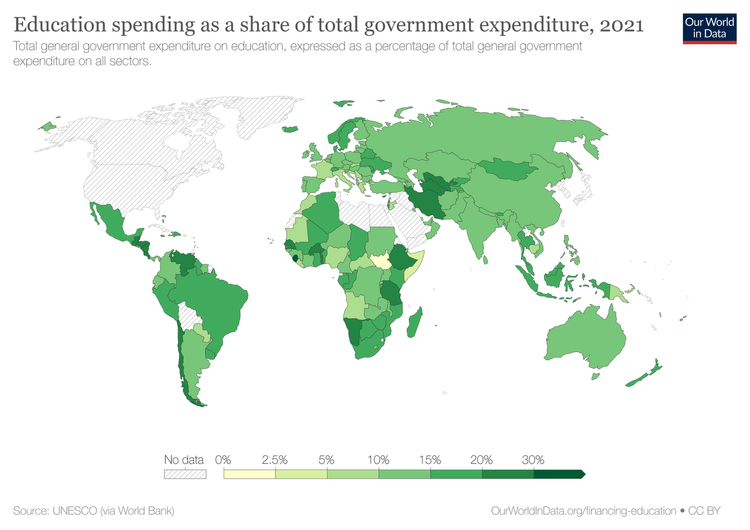
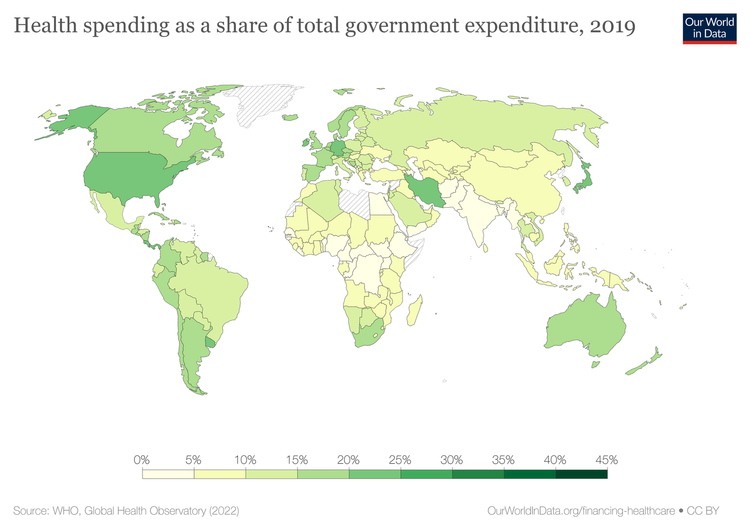

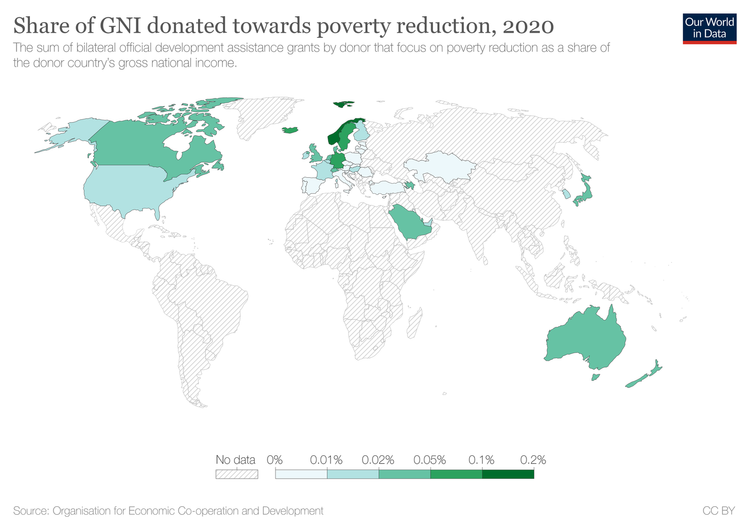
SDG Target #1.5
Sustainable Development Goal #1 is to end poverty in all its forms everywhere.
Within SDG #1 are 7 targets, of which this episode will focus on Target 1.5:
By 2030, build the resilience of the poor and those in vulnerable situations and reduce their exposure and vulnerability to climate-related extreme events and other economic, social and environmental shocks and disasters.
The interrelation of disaster and poverty represented by target 1.5 acknowledges the reality that disasters in developing countries are responsible for 95% of the deaths resulting from global disasters, as well as visiting loss and damage 20 times greater as a percentage of GDP of developing countries in contrast to their developed counterparts.
To measure target 1.5, there’s 4 indicators:
Indicator 1.5.1: Number of deaths, missing persons and persons affected by disaster per 100,000 people.
Indicator 1.5.2 is Direct disaster economic loss in relation to global gross domestic product (GDP).
Indicator 1.5.3: Number of countries that adopt and implement national disaster risk reduction strategies in line with the Sendai Framework for Disaster Risk Reduction 2015–2030.
Indicator 1.5.4: Proportion of local governments that adopt and implement local disaster risk reduction strategies in line with national disaster risk reduction strategies.
The year 2030 has been set as the deadline for this target, to be met in alignment with the Sustainable Development Goals as a whole.
Looking first at indicator 1.5.1 measures the number of people who died during, directly afterward or as a direct result of a hazardous event.
It also measures those whose whereabouts is unknown since such an event, as well as those who’ve suffered injury, illness, or other health effects.
It additionally measures how many people were evacuated, displaced, relocated, or suffered direct damage to their livelihoods and assets of many forms.
Indicator 1.5.2 measures the relation between economic loss attributed to a disaster, whether direct or indirect. Examples of such assets physical assets are homes, hospitals, schools, and other buildings; various forms of physical infrastructure, such as transport, energy and telecommunication; industrial plants, crops and livestock.
Indicator 1.5.3 focuses on a global policy relevant to all indicators of Target 1.5. The Sendai Framework for Disaster Risk Reduction 2015-2030., adopted by all UN member states in 2015, the year of the SDG’s adoption, pertains to worldwide goals responding to disaster risk reduction. The framework was taken up within the Third World Conference on Disaster Risk Reduction, hosted in Sendai, the largest city in Japan’s north-eastern Tōhoku region, the epicentre of the catastrophic 2011 earthquake and tsunami.
Under the purview of the UN Office for Disaster Risk Reduction, the period of the Sendai Framework is parallel to the SDGs, from 2015 through to 2030, articulating four priorities for the prevention and risk reduction of new disasters, as well as 7 targets, several of which bridge with SDG target 1.5’s indicators.
The four priorities of the Sendai Framework are:
Understanding disaster risk
Strengthening disaster risk governance to manage disaster risk
Investing in disaster reduction for resilience and
Enhancing disaster preparedness for effective response, and to "Build Back Better" in recovery, rehabilitation, and reconstruction.
Lastly, indicator 1.5.4 relates to the previous indicator, but in contrast to 1.5.3 which measured the number of countries which had adopted disaster risk reduction strategies like the Sendai Framework, 1.5.4 measures the percentage of local governments within each country who’ve adopted and implemented disaster risk reduction strategies in alignment with the national strategy.
Looking at the progress of target 1.5, in 2019, 24,000 people were reported as disaster fatalities, down from 126,000 in 2018.
Though the mortality trend had been downward since 2005, the COVID-19 pandemic is expected to reverse this progress. As such, disaster risk reduction including biological risks such as pandemic’s is crucial.
Direct economic loss of $70 billion was reported in 2019, 60% in the agricultural sector.
In 2020, 120 reported they had developed and adopted either national or local disaster risk reduction strategies, an improvement from the 48 countries reporting such strategies at the adoption of the Sendai Framework in 2015.
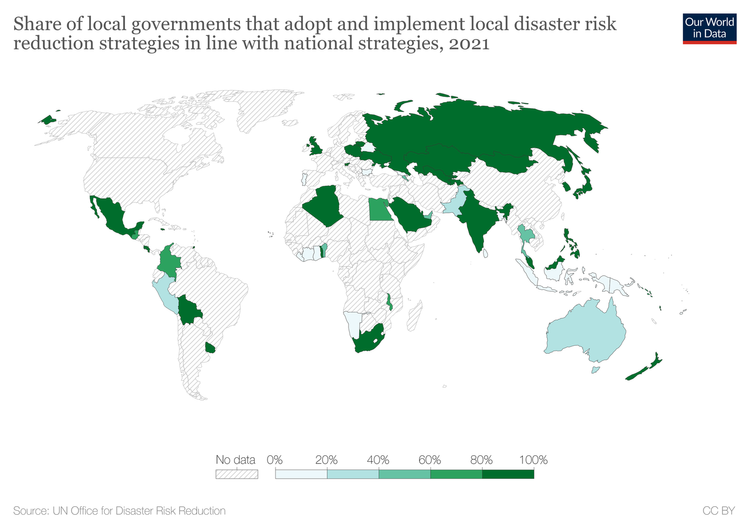
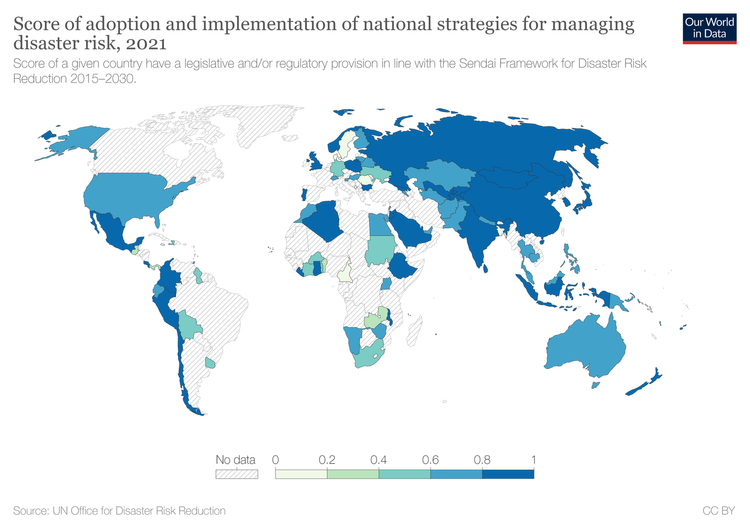
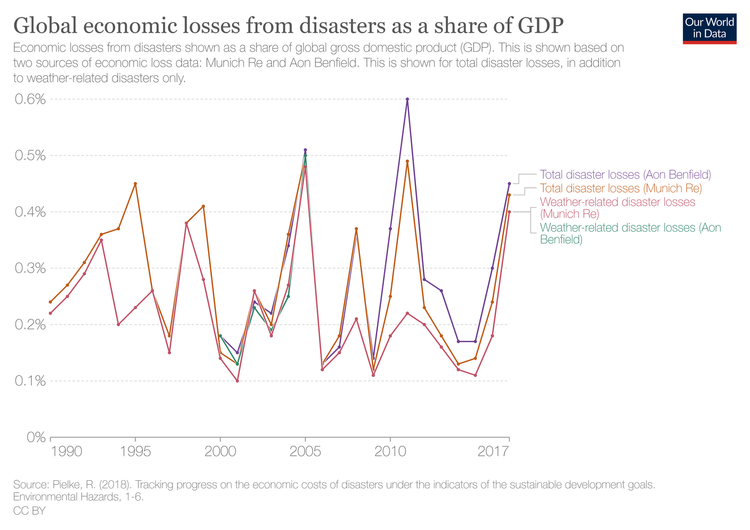
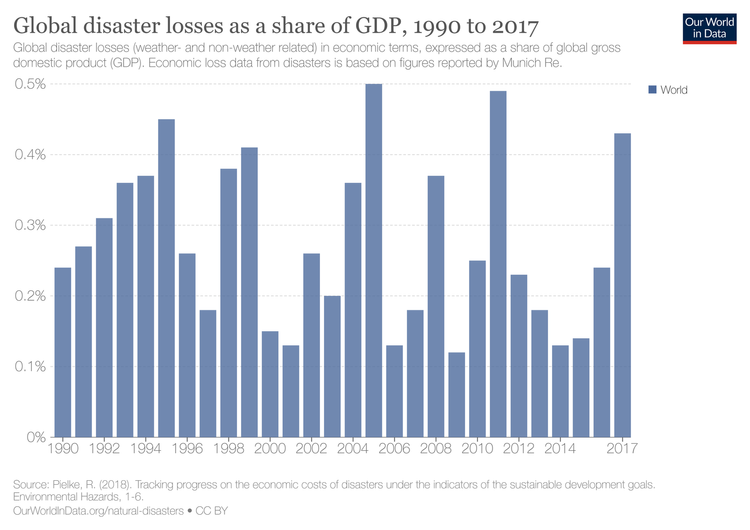
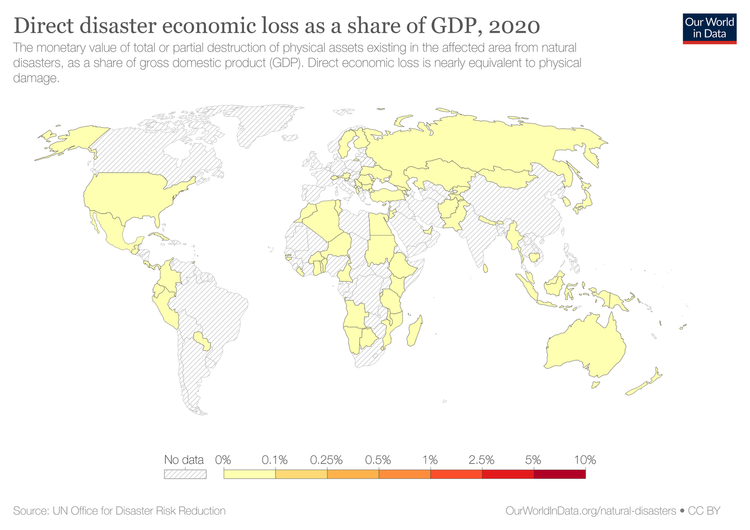
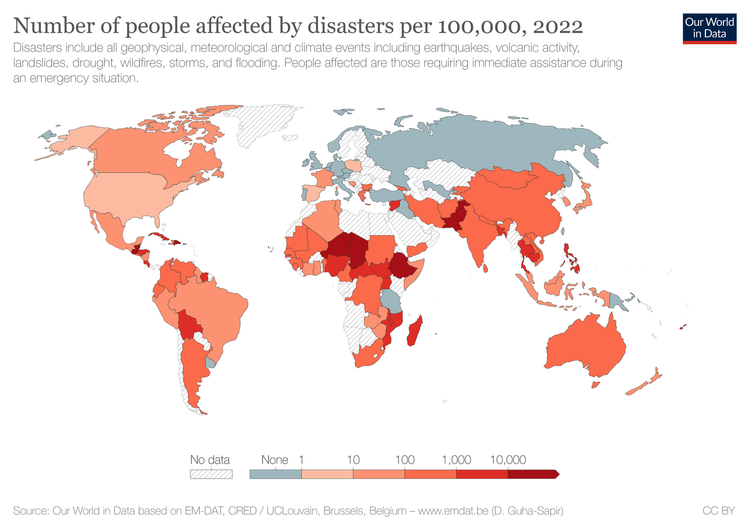
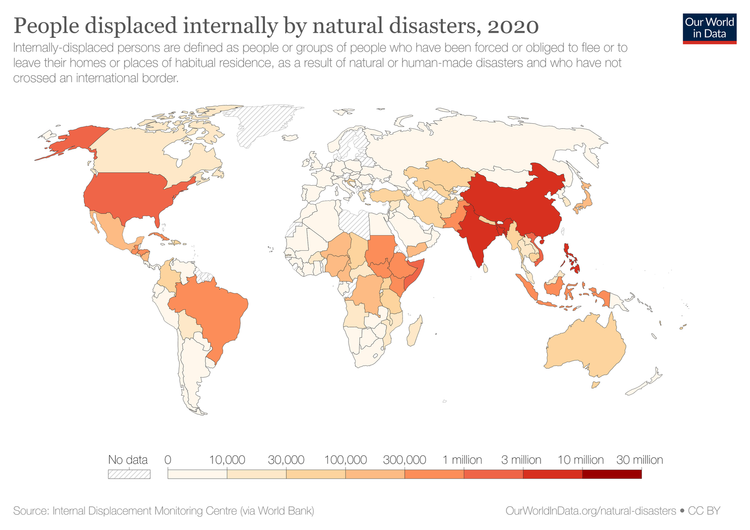
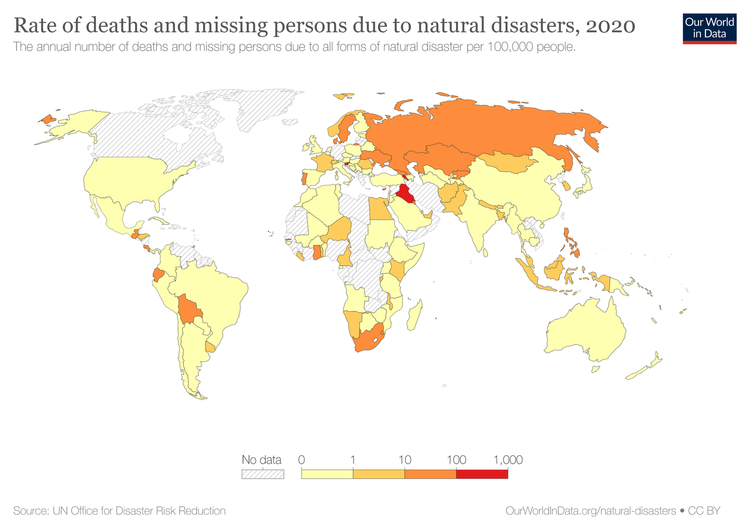
SDG Target #1.4
Sustainable Development Goal #1 is to end poverty in all its forms everywhere.
Within SDG #1 are 7 targets, of which this episode will focus on Target 1.4, which is:
By 2030, ensure that all men and women, in particular the poor and the vulnerable, have equal rights to economic resources, as well as access to basic services, ownership and control over land and other forms of property, inheritance, natural resources, appropriate new technology and financial services, including microfinance.
To measure target 1.4, there’s two indicators:
Indicator 1.4.1: Proportion of population living in households with access to basic services
Indicator 1.4.2: Proportion of total adult population with secure tenure rights to land, (a) with legally recognized documentation, and (b) who perceive their rights to land as secure, by sex and type of tenure.
The year 2030 has been set as the deadline for this target, to be met in alignment with the Sustainable Development Goals as a whole.
To better break up this lengthy target, let’s look at each of the indicators at a time.
Indicator 1.4.1 is looking at households’ access to basic services.
The definition ‘access to these basic services’ implies “sufficient and affordable service is reliably available with adequate quality.”
As a measure, the portion of a population’s households is used, whether a family, one person, or a group of unrelated people in the same dwelling. What is meant by the broad term ‘basic services’ though? As we explored in the Target 1.2, poverty has many dimensions. We also looked at a similar definition in the Target 1.3, in the context of the basic needs provided by welfare and social security. Without meeting these basic needs, it is likely one may meet the definition living in extreme poverty, bereft of drinking water, sanitation, healthcare, and education.
As we saw in the previous target, more developed countries which value welfare withing their state can provide services allowing for more equal opportunities and the distribution of wealth via tax revenue. These services could be homeless shelters for those experiencing homelessness. Charities can play a role, independent of, or in tandem with the state, to run food banks to ameliorate hunger, and meet nutritional needs. Services can focus on the vulnerable, such as disability or care for the elderly. In some countries, or via some charities, education is provided free of charge to the student. Rather than collecting fees as a fare to move around by bus or rail, in some public transport systems, passengers ride for free. In the Information Age we live in, helping bridge the digital divide is a more recent basic service now considered necessary universally.
These services can be provided by the centralized government of a sovereign state, in a policy of service to the public. Or it could be provided by more localized forms of government.
Under the UN definition for this indicator, basic services mean government provision of drinking water services within a 30-minute round trip; sanitation facilities not shared with another household; availability of a handwashing facility on premises with soap and water; clean fuels, which don’t contribute to unhealthy indoor air quality, as kerosene and coal can; convenient access to transport, whether in rural or urban contexts; waste collection, whether from the municipal government or other means; basic health care and education, and broadband internet access.
Also mentioned in Target 1.4 is such as microfinance, the provision banking and lending facilities, to individuals or small businesses, in a way they otherwise would not be able to access, due to their low levels of income.
Turning our attention to Indicator 1.4.2, we’re looking at what portion of adults in each country’s population have secure tenant rights to the occupation and ownership of land and buildings, as well as the passing on of such property, often between generations of families.
Indicator 1.4.2 measures secure tenure rights by two necessary concepts, and disaggregates the measures by sex, recognising the prevalence of inequality for women in matters of tenure and inheritance laws and protections.
1.4.2 is also disaggregated by types of tenure. An example of a type of tenure is a leasehold, whereby a lessee contracts with a lessor to use the property for payments over the period of the lease. Another type of tenure is customary, according to the customs of indigenous communities. The other two tenure types by the definition 1.4.2 is public tenure i.e., property owned by the state, as well as freehold, which is owning the property, it’s land and the space above it.
The two necessary concepts to meet the definition of secure tenant rights for the purposes of Indicator 1.4.2. is the backing by legally recognized documentation, as well as individual’s perception of the security of their tenure, for instance, a fear of involuntary loss of land due to a disagreement over land rights, irrespective of such tenure’s official recognition
Due to global stresses on food security, urbanization, and environmental degradation of natural resources, tenure systems face challenges, providing the rationale for this indicator. Additionally, there is now greater demand for land reforms in favour of the poor.

SDG Target #1.3
Sustainable Development Goal #1 is to end poverty in all its forms everywhere.
Within SDG #1 are 7 targets, of which this episode will focus on Target 1.3:
Implement nationally appropriate social protection systems and measures for all, including floors, and by 2030 achieve substantial coverage of the poor and the vulnerable.
To measure target 1.3, there’s one indicator, 1.3.1:
Proportion of population covered by social protection systems, by sex, distinguishing children, unemployed persons, older persons, persons with disabilities, pregnant women, newborns, work-injury victims and the poor and the vulnerable”.
The year 2030 has been set as the deadline for this target, to be met in alignment with the Sustainable Development Goals as a whole.
So, what is meant by ‘social protection’? Basically, these are government-sponsored programs designed to shield the vulnerable from impacts which could affect their position of poverty and wellbeing. This includes mitigating any factors which could prevent someone from participating in the labour market, whether due to experiencing unemployment, being socially excluded because they belong to a marginalised minority, are disabled, afflicted by sickness, or otherwise are in old age.
To promote and protect citizens, interventions are made in the labor market, via social safety net programs, for instance, Medicare and Medicaid in the US, as well as Social Security and unemployment benefits.
Though this model of social protections is common to European countries who pioneered the model, with a European tradition of taxing and transferring larger portions of the country’s economic output to provide for the social safety net, the degree and robustness of social protection varies from country to country.
As the indicator 1.3.1 identifies, the vulnerable are characterised by sex, essentially suggesting societies where women are more vulnerable than male counterparts, and in particular, women in pregnancy, as well as newborns in the first months of life, and children and teens in general. Additionally, this indicator encompasses as vulnerable those experiencing unemployment, disability, injuries or accidents at work, as well as older persons, especially in the wake of COVID-19.
Whilst the aforementioned demographics may be exposed to vulnerabilities that at times require social protection, not all countries have the ability to tax the population, then transfer the revenue from such taxation to the vulnerable. This is very true of the least developed countries. The logic behind this is, if the average citizen lives on barely subsistence, enough to survive hand-to-mouth day-to-day, they do not have a surplus of income beyond survival for the government to tax, and the government has a meagre tax base to collect from and provide services to improve wellbeing with.
In other instances, there may be less of an appetite from the government or electorate to either tax enough to support such transfers, or political obstacles to make such transfers, perhaps due to societal stigmas toward certain vulnerable groups. This could be an example of political wrangling in countries where enough surplus income exists to provide for a potential tax base, but taxpayers have resistance to their tax payments being transferred to others as welfare.
These gaps are exactly what Target 1.3 aims to remedy. As of 2016, the year of commencement of the SDGs, 55% of the global population, approximately 4 billion individuals, were not living with a social safety net below, thus exposed to economic shocks in the market for wage labour which could impact their quality of life.
The ‘floor’ of social protection mentioned in Target 1.3 are human rights which aim to guarantee a minimum of services to provide a threshold of guarantees for all citizens, as set out by a country or international organisation such as the UN, to provide for a lifetime of the essentials: health care, income sufficient to provide for food security, education, housing and other goods and services necessary to an adequate standard of living.
When we look at progress toward Target 1.3, its intersection with COVID-19 has demonstrated many developed countries were able to adapt by tapping in to global capital markets for lending to provide income support accompanying the effects of the lockdowns, yet such income support was less accessible to developing countries with more circumscribed ability to borrow to finance such protections, affecting incomes, jobs and health.
As of 2020, the proportion of the global population with access to a minimum of one social protection payment was 47%, down only 8% since the start of the SDGs in 2016, and with the population total still around 4 billion.
However, from the onset of the pandemic in the early months of 2020 through year-end, among all countries, 1500 social protection efforts were announced, albeit many on a short-term basis in response to the COVID-19 pandemic.

SDG Target #1.2
Sustainable Development Goal #1 is to end poverty in all its forms everywhere.
Within SDG #1 are 7 targets, of which this episode will focus on Target 1.2, which is:
By 2030, reduce at least by half the proportion of men, women and children of all ages living in poverty in all its dimensions according to national definitions.
The year 2030 has been set as the deadline for this target, to be met in alignment with the Sustainable Development Goals as a whole.
For this particular target, distinct from the previous target 1.1, of eliminating ‘extreme poverty’, we need to understand how this target defines ‘poverty’. As we learned in the previous target, extreme poverty is defined as living under $US1.90 a day, an international poverty line for extreme poverty.
So, what does the more generalised term ‘poverty’ mean in the context of target 1.2?
The term ‘relative poverty’ comes in handy here. Whereby the definition of ‘extreme poverty’ is the same internationally at $1.90, ‘relative poverty’ depends on the cost of living in different countries. Each country has its own individual poverty line, and therefore is also a reflection of the economic inequalities within a country.
Thus, the phrasing of target 1.1, “...according to national definitions,” meaning the threshold each country - both developed and developing - holds for an individual or household to live adequately to meet their basic needs: a minimum standard of living for food, clothing, shelter, health care and toilets.
Whatever its causes, poverty leaves individuals and communities vulnerable to hunger, disease, climate change, slavery and forced prostitution, open defecation, slum conditions in urban residential areas, inequities around access to health care, the freedom to participate in the economy or labour market, overpopulation, outward emigration of highly-educated citizens, corruption, and discrimination based on age, caste, race and sex.
Another aspect of target 1.1 worth exploring is the reference to “poverty in all its dimensions”. Whereas a national poverty line would traditionally be measured by an amount of income or consumption, a multidimensional approach to poverty broadens the definition from solely income or consumption, to include other important facets of development.
Another measure of poverty heavily in use is consumption expenditure equivalent to US$3.20, with data measuring this obtained by household surveys. This consumption measure includes food purchased, as well as food produced by the household itself, particularly pertinent to the least developed countries. Poverty obviously does not end once the $1.90 international extreme poverty line has been crossed.
Yet this meagre difference of a threshold of $3.20 is common to the lower tiers of the middle-income countries. The World Bank forecasts a quarter of a billion people’s fortunes reversed, pushed back under the measure of $3.20 income per day due the COVID-19 pandemic. A quarter of the world’s population, or 1.80 billion people, live under the $3.20 poverty line, in contrast to approximately a tenth living under the extreme poverty line of $1.90. This amount is less than at the adoption of the SDGs in 2015, with 140 million living under $3.20 a day, down from more than half the global population in 1990. The number of people living under $3.20 is comparable now to the amount of people living on $1.90 a day in 1990.
Half of those living under $3.20 live in South Asia, as do a quarter of the extreme poor. This contrasts to sub-Saharan Africa, home to two-thirds of the world’s population living in extreme poverty, and a third under the $3.20 poverty line. East Asia has seen huge progress on eradicating extreme poverty in the past three decades, but as of 2018, 150 million East Asians lived under the $3.20 poverty line.
Quite separate to the severe plights of the low- and middle-income countries is the relative poverty experienced of high-income countries, generally synonymous with members of the OECD. For these countries specifically, the SDG Index has an indicator for poverty rate after taxes and transfers, or the share of the population whose disposable incomes fall below half the median income
The Human Development Index has been published by the UN for the past twenty years, using a formula to assign indexes to countries based on per capita income, life expectancy, and years of schooling.
Such indexes have since been expanded to reflect how the world now recognises development since the UN agenda moved on from international development to further overlapping factors of deprivation encapsulated within sustainable development.
Another important feature of multidimensional poverty measures allows for measures of both the prevalence of poverty, but also the depth of poverty within those proportions.
Another factor of importance in achieving this goal, not reflected in the UN’s official indicators, but proposed by the UN’s Sustainable Development Solutions Network as an indicator, is total fertility rate. The assumption is the more births per woman, the greater the population growth, a trend forecast for those countries still mired in poverty, with strong evidence demonstrating the links between high fertility and high poverty rates, eroding sustainable development efforts furthermore. As well as reflecting living in poverty, high fertility rates can be related to poor access to reproductive health options.
The two official indicators for target 1.2 are reflective of the concepts of poverty lines and multidimensional poverty indices:
Indicator 1.2.1: Proportion of population living below the national poverty line, by sex and age.
Indicator 1.2.2: Proportion of men, women and children of all ages living in poverty in all its dimensions according to national definitions.

SDG Target #1.1
Sustainable Development Goal #1 is to end poverty in all its forms everywhere.
Within SDG #1 are 7 targets, of which this episode will focus on Target 1.1, which is:
By 2030 eradicate extreme poverty for all people everywhere, currently measured as people living on less than $1.25 a day.
The year 2030 has been set as the deadline for this target, to be met in alignment with the Sustainable Development Goals as a whole. With the ambitious target of eradicating extreme poverty for all people everywhere, we need to understand the definition of ‘extreme poverty’.
Extreme poverty is defined by an international poverty line as deemed by the World Bank, the international financial institution within the UN system, tasked with providing loans to developing countries with the objective of poverty eradication.
The international poverty line, as this target explains, is measured by living on $1.25 a day. That $1.25 a day is measured in U.S. dollars, using 2005 prices. Since the SDGs have been adopted, the measure of extreme poverty has been raised by the World Bank to $1.90 using 2011 prices.
Wherever one may live, and whatever the local prices of goods and services, less than US$2 a day is scarcely enough to meet basic needs of safe drinking water, food at or below subsistence, and access to health and education.
Approximately 700 million people met the definition of living in extreme poverty when the SDGs were adopted in 2015, the overwhelming majority living in Sub-Saharan Africa and South Asia.
Before the industrial era, beginning in the middle of the 19th century, close to all of the human population lived in a state of extreme poverty.
Yet, as this graph demonstrates, since the turn of the millennium, there has been a steady decrease in both the overall number of people living in extreme poverty, as well as the percentage of the global population.
One of the key reasons for this encouraging drop in extreme poverty rates was the power of the Millennium Development Goals. The Millenium Development Goals were the preceding development framework of the UN, prior to the adoption of the SDGs.
The focus of the MDGs was on the fight against extreme poverty, and its accompanying ills, with the SDGs building upon these efforts.
Conceptually, sustainable development builds upon the international development focus of the MDGs’ focus on economic development, to add two more pillars: that is, ensuring any economic growth is broad-based and socially inclusive, as well as being environmentally sustainable.
The sister goal of SDG #1 was Millennium Development Goal #1, set to halve extreme poverty levels by 2015, again using the international poverty line measure of $1.25 of income, in this case, measuring the proportion according to 1990 prices.
Millennium Development Goal #1 was met five years before its due date in 2010, largely due to the astounding growth rates of China in the 1-year period of the MDGs between 2000 and 2015.
In total numbers, this meant MDG #1 saw a billion people lifted from extreme poverty, compared to 1990, when almost half the population of countries considered developing lived under $1.25 a day.
Yet the 800 million still left behind at the end of the Millennium Development Goals period in 2015 is an enormous number of people continuing to live in destitution and penury.
So how do we measure this target 1.1 of the Sustainable Development Goals?
The indicator in use by the UN is ‘proportion of population below the international poverty line by sex, age, employment status and geographical location.
The disaggregation by sex, age, employment status, and geographical location is to ensure the gains are measured evenly across all demographics, ensuring no one is left behind, and all economic development is broad-based to meet the social inclusivity pillar of sustainable development.
According to the World Data Lab, there were at June 2021, 716, 045,000 people presently living in extreme poverty, with a rate of 0.8 people per second escaping extreme poverty.
Yet the target rate for escaping poverty for SDG target 1.1 to be met is 2.4 people per second.
In total, that means again for June 2021, the world is off-track by 231,163,000 people approximately.
Of course, just as some escape poverty, others enter into it.
The COVID-19 pandemic has greatly impacted progress on this goal and target, with signs of slowing progress even before this, compounded by both conflict and climate change.
In 2015, the proportion of extreme poverty rates was 10%, this dropped from a low of 8.4% in 2019, back up to 9.5%. This can be equated with up to 124 million people being thrown back into extreme poverty, meaning the global extreme poverty rate rose in 2020 for the first time in over 20 years.
Furthermore, this trend projected 6 percent of the global population, or 600 million people, would still be living in extreme poverty in 2030, missing the target 1.1.

SDG Episode #4 - John Thwaites - Monash Sustainable Development Institute
In this episode, we’re joined by Professor John Thwaites, who boasts a very impressive CV.
John Thwaites is currently the chair and Professorial Fellow of Monash University’s Sustainable Development Institute, ClimateWorks Australia & BehaviourWorks Australia.
John is Chair of Melbourne Water and a Director of Fair Trade Australia New Zealand.
John is the Chair of the National Sustainable Development Council, which has developed the Transforming Australia: SDGs Progress Report 2018. We’ll be speaking with him today predominantly about the 2020 update of the Transforming Australia report, for which John was the Principal Lead. You can find the report at sdgtransformingaustralia.com
He is a Co-Chair of the Leadership Council of the UN Sustainable Development Solutions Network (“SDSN”) launched by the Secretary General of the United Nations to provide expert advice and support to the development and implementation of the Sustainable Development Goals.
The Lancet Covid-19 Commission, one of the pre-eminent global bodies created solutions to the pandemic appointed John as a Commissioner.
John Thwaites was also Deputy Premier of Victoria from 1999 until his retirement in 2007, as well as holding Ministerial portfolios including Health, Planning, Environment, Water, and has the honour of being Victoria’s first Minister for Climate Change.
SDG Episode #3 - Jody Lightfoot - Campaign for Australian Aid
In this episode, we’re joined by Jody Lightfoot of the Campaign for Australian Aid
Jody’s work aligns most closely with Goal 17 – Partnerships for the Goals, specifically target #17.2, which is:
Developed countries to implement fully their official development assistance commitments, including the commitment by many developed countries to achieve the target of 0.7 per cent of gross national income toward official development assistance to developing countries and 0.15 to 0.20 per cent of gross national income toward official development assistance to least developed countries official development assistance providers are encouraged to consider setting a target to provide at least 0.20 per cent of gross national income toward official development assistance to least developed countries
Campaign for Australian Aid is a movement of people, organisations, communities and businesses who believe Australia can and should do more to help build a better, fairer future for all. The Campaign is made up of fifty of the country’s leading aid and development organisations, including World Vision, Oxfam and Save the Children, to name a couple.
Good news developed not long after Jody and I spoke. The Australian Government announced at the beginning of November an added $500m to assist in the rollout of a COVID-19 vaccine to the Pacific and South East Asia.
The $500 million will be rolled out over three years to ensure full immunisation coverage for the Pacific and will make a significant contribution toward Southeast Asia.
SDG Episode #2: Daniel Pejic - University of Melbourne Connected Cities Lab
In this episode, we’re joined by Daniel Pejic of the University of Melbourne’s Connected Cities Lab.
Dan’s work aligns most closely with Goal 11 – Sustainable Cities and Communities.
Daniel Pejic is a Research Fellow in International Urban Migration and a PhD researcher at University of Melbourne’s Connected Cities Lab as part of the Faculty of Architecture, Building and Planning.
The Connected Cities Lab is a laboratory designed to address the challenges city leadership faces, and the information it needs in an interconnected and increasingly urbanised planet.
Dan is currently researching the role of cities as actors in global migration governance and the rescaling of the politics of migration
SDG Episode #1: Annie Woollard - Footprints on the Globe
In this episode, we’re joined by Annie Woollard of Footprints on the Globe.
Annie’s work, though interlinked with all the Goals, hews most closely with Goal #4 – Quality Education, specifically target 4.7:
By 2030, ensure that all learners acquire the knowledge and skills needed to promote sustainable development, including, among others, through education for sustainable development and sustainable lifestyles, human rights, gender equality, promotion of a culture of peace and non-violence, global citizenship and appreciation of cultural diversity and of culture’s contribution to sustainable development
Footprints on the Globe, collaborates with schools, educators, and corporations to inspire all to educate, explore and act for global change.
Via professional development, Footprints on the Globe ensures global education is at the forefront of schools around the globe, and in its advisory capacity, designs and creates innovative educational resources.
Footprints on the Globe is a specialist educational consultancy with a focus on embedding global education into the classroom and schools.
En liten tjänst av I'm With Friends. Finns även på engelska.